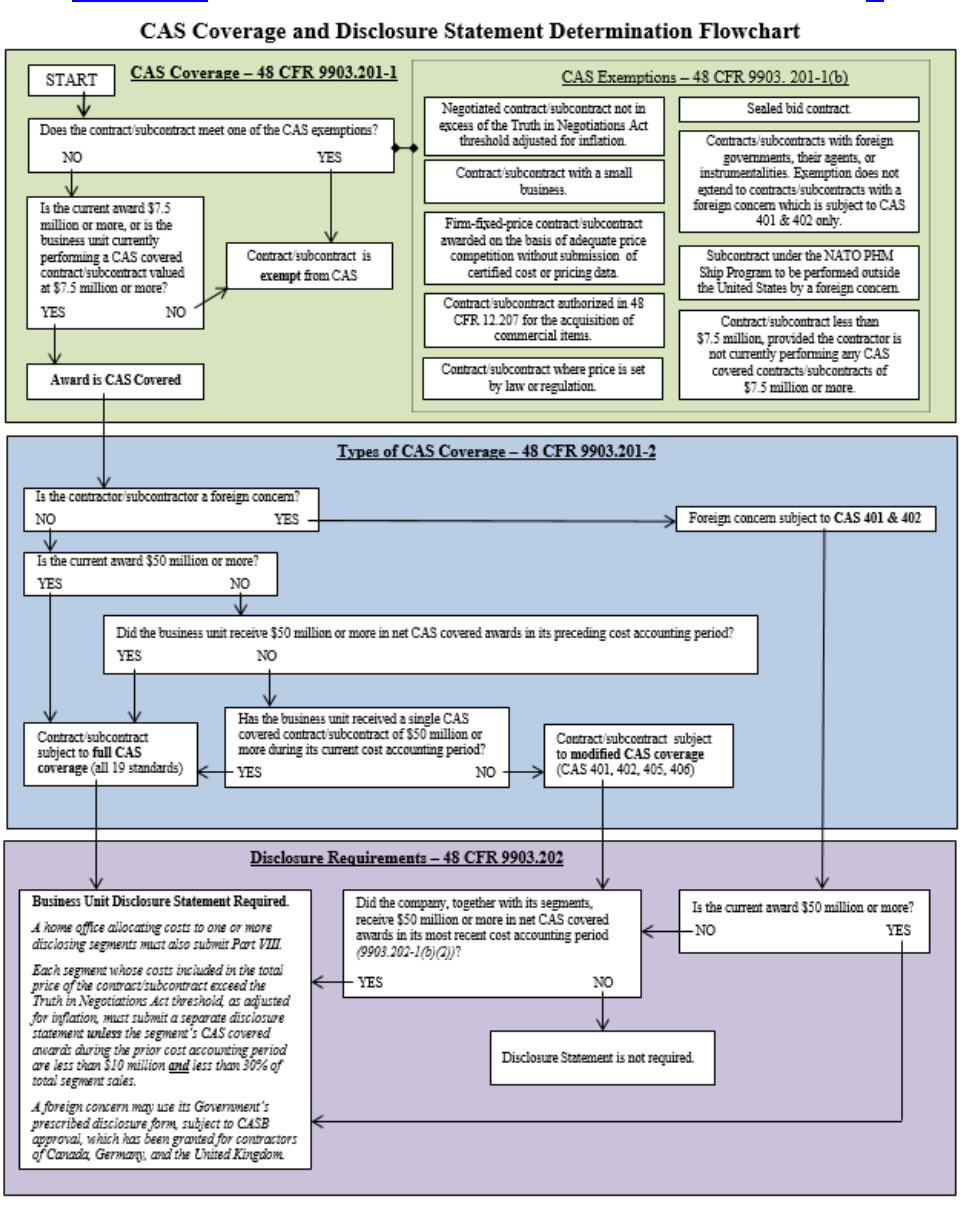
Page 1 of 147
DCAAM 7640.1; DCAA Contract Audit Manual
Chapter 8
Cost Accounting Standards
Table of Contents
8-000 - Cost Accounting Standards
8-001 Scope of Chapter
8-100 Section 1 – Introduction to Cost Accounting Standards
8-101 Introduction to Cost Accounting Standards
8-102 Background of Cost Accounting Standards Board
8-102.1 Establishment of Cost Accounting Standards Board (CASB)
8-102.2 CAS Working Group
8-103 CAS Coverage Requirements and CAS Exemptions
8-103.1 Educational Institutions - CAS
8-103.2 CAS Exemptions
8-103.3 Types of Coverage
8-103.4 Effect of Contract Modifications
8-103.5 Effect of Basic Ordering Agreements
8-103.6 Effect of Letter Contracts
8-103.7 CAS Flowdown Clause - FAR 52.230-2
8-103.8 Submission of Disclosure Statement
8-103.9 Additional Exemptions on a Particular Standard
8-103.10 CAS Waivers
8-104 CAS Audit Responsibility

Page 2 of 147
8-104.1 Basic Functions
8-104.2 Auditor's Function on Subcontracts Subject to CAS8-104.3 Contract
Audit Coordinator (CAC)
8-104.3 Contract Audit Coordinator (CAC)
Figure 8-1-1 -- CAS Coverage and Disclosure Statement Determination
8-200 Section 2 – Disclosure Statement Adequacy
8-201 Introduction
8-202 Assessment of Initial Disclosure Statement for Adequacy
8-203 Assessment of Revised Disclosure Statement for Adequacy
8-204 Techniques for Reviewing Disclosure Statement Adequacy
8-300 Section 3 – Audits of Compliance with Cost Accounting
Standards Board (CASB) Rules, Regulations, and Standards,
and with FAR
8-301 Introduction
8-302 Noncompliance with CAS
8-302.1 Requirements
8-302.2 Types of Noncompliance
8-302.3 Compliance Considerations
8-302.4 Discussions with the CFAO and the Contractor
8-302.5 Coordination for Consistent Treatment
8-302.6 CAS Coordination in CAC/CHOA/GAC Complexes
8-302.7 Reporting CAS Noncompliance
8-302.8 Reporting FAR Noncompliance
8-303 Audit of Disclosure Statement and/or Established Practices to Ascertain
Compliance with CAS and FAR
8-303.1 Requirements
8-303.2 Initial Audits of Compliance
8-303.3 Changes to Disclosure Statements and/or Established Practices

Page 3 of 147
8-304 Audit of Estimated, Accumulated, and Reported Costs to Ascertain
Compliance with CAS and FAR
8-304.1 Requirements
8-304.2 Compliance Audits
8-304.3 Reporting of Compliance Audit Results
8-400 Section 4 - Cost Accounting Standards
8-401 Cost Accounting Standard 401 - Consistency in Estimating,
Accumulating and Reporting Costs
8-401.1 Consistency between Estimating and Accumulating Costs
8-401.2 Consistency in Reporting Costs
8-401.3 Illustrations
8-402 Cost Accounting Standard 402 - Consistency in Allocating Costs
Incurred for the Same Purpose
8-402.1 Illustrations
8-403 Cost Accounting Standard 403 - Allocation of Home Office Expenses to
Segments
8-403.1 General
8-403.2 Guidance
8-404 Cost Accounting Standard 404 - Capitalization of Tangible Assets
8-404.1 General
8-404.2 Assets Acquired in a Business Combination Using the Purchase
Method of Accounting
8-404.3 Illustrations - Compliance with the Standard
8-404.4 Illustrations - Applicability Date of Amended CAS 404/409, Effective
April 15, 1996
8-405 Cost Accounting Standard 405 - Accounting for Unallowable Costs
8-405.1 General
8-405.2 Illustrations
8-406 Cost Accounting Standard 406 - Cost Accounting Period

Page 4 of 147
8-406.1 General
8-406.2 Restructuring Costs
8-407 Cost Accounting Standard 407 - Use of Standard Costs for Direct
Material and Direct Labor
8-407.1 General
8-407.2 Illustrations
8-408 Cost Accounting Standard 408 - Accounting for Costs of Compensated
Personal Absence
8-408.1 General
8-408.2 Illustrations
8-409 Cost Accounting Standard 409 - Depreciation of Tangible Capital Assets
8-409.1 General
8-409.2 Illustrations
8-410 Cost Accounting Standard 410 - Allocation of Business Unit General and
Administrative Expenses to Final Cost Objectives
8-410.1 General
8-410.2 Illustrations
8-411 Cost Accounting Standard 411 - Accounting for Acquisition Costs of
Material
8-411.1 General
8-411.2 Illustration
8-412 Cost Accounting Standard 412 - Composition and Measurement of
Pension Costs
8-412.1 General
8-412.2 Assignment of Pension Cost
8-412.3 Full Funding Limitation
8-412.4 Nonqualified Plans
8-412.5 Illustrations
8-412.6 Pension Harmonization Rule

Page 5 of 147
8-413 Cost Accounting Standard 413 - Adjustment and Allocation of Pension
Cost
8-413.1 General
8-413.2 Segment Accounting
8-413.3 CAS 413-50(c)(12) Adjustment For Segment Closing, Plan
Termination or Benefit Curtailment
8-413.4 Illustrations
8-414 Cost Accounting Standard 414 - Cost of Money as an Element of the
Cost of Facilities Capital
8-414.1 General
8-414.2 Interest Rates – Cost of Facilities Capital
8-414.3 Evaluating the Contractor’s Computations
8-415 Cost Accounting Standard 415 - Accounting for the Cost of Deferred
Compensation
8-415.1 General
8-415.2 Illustrations
8-416 Cost Accounting Standard 416 - Accounting for Insurance Cost
8-416.1 General
8-416.2 Guidance
8-416.3 Illustrations
8-417 Cost Accounting Standard 417 - Cost of Money as an Element of the
Cost of Capital Assets Under Construction
8-417.1 General
8-417.2 Guidance
8-417.3 Illustrations
8-418 Cost Accounting Standard 418 - Allocation of Direct and Indirect Costs
8-418.1 General
8-418.2 Guidance
8-418.3 Illustrations

Page 6 of 147
8-419 Reserved
8-420 Cost Accounting Standard 420 - Accounting for Independent Research
and Development Costs and Bid and Proposal Costs (IR&D and B&P)
8-420.1 General
8-420.2 Guidance
8-420.3 Illustrations
8-500 Section 5 - Cost Impact Proposals
8-501 Introduction
8-502 General - Cost Impact Proposals
8-502.1 CAS Clause Requiring Price Adjustments
8-502.2 FAR Requirement for Submission of Cost Impact Proposal
8-502.3 Accounting Practice Changes Related to External Restructuring
8-502.4 Cost Impact Proposal Data Requirements
8-502.5 Adequacy of Cost Impact Proposals
8-502.6 Audit of Cost Impact Proposals
8-502.7 Inclusion of Implementation Costs
8-502.8 Noncompliance with FAR Part 31
8-503 Guidance on Evaluation of Cost Impact Proposals
8-503.1 Required and Desirable Cost Accounting Practice (CAP) Change
Cost Impact Proposals
8-503.2 Unilateral CAP Change Cost Impact Proposals
8-503.3 CAS Noncompliance Cost Impact Proposals
8-503.4 Interest
8-503.5 Offsetting Cost Impacts
8-504 Failure to Submit Cost Impact Proposals
8-505 Conferences and Reports on Audits-Cost Impact Proposals
8-506 Coordination
8-507 Rough Order of Magnitude Calculation for Unresolved Cost Impacts

Page 7 of 147
8-600 Section 6 - Participation on Joint Team Reviews of Contractor
Insurance and Pension Cost
8-601 Introduction
8-602 Audit of Contractor Insurance Cost and Pension Cost
8-602.1 Insurance/Pension Team Reviews
8-602.2 Auditor Participation on CIPR Teams
8-602.3 Effect of the CIPR on Subsequent Audits
8-000 - Cost Accounting Standards **
8-001 Scope of Chapter **
This chapter presents guidance on auditing compliance with the Cost Accounting
Standards Board (CASB) Rules, Regulations, and Standards including related
provisions of FAR. The CASB Rules, Regulations and Standards are codified at 48
CFR Chapter 99 and available on the Electronic Code of Federal Regulations website.
This chapter also includes guidance on auditing cost impact (price adjustment)
proposals, and guidance on auditor participation in joint contractor insurance and
pension reviews.
8-100 Section 1 - Introduction to Cost Accounting Standards **
8-101 Introduction to Cost Accounting Standards **
a. This section provides the legal background and purposes of implementing the
Cost Accounting Standards (CAS), including the rules and regulations, and audit
responsibilities in implementing Section 26 of the Federal Procurement Policy Act,
Public Law 100-679.
b. (41 U.S.C. 1501-1506) Cost Accounting Standards contains the requirement for
certain contractors and subcontractors to comply with the CASB Rules, Regulations,
and Standards, collectively referred to as CAS. The contents of 48 CFR Chapter 99 are
provided as an Appendix to the FAR for user convenience but are not considered part of
FAR.
c. The CAS Preambles consist of:
(1) Part I—Preambles to the Cost Accounting Standards Published by the Cost
Accounting Standards Board,
(2) Part II—Preambles to the Related Rules and Regulations Published by the
Cost Accounting Standards Board, and

Page 8 of 147
(3) Part III—Preambles Published under the FAR System.
d. The Preambles are not regulatory, but instead provide background and rationale
for the Standards and related Rules and Regulations, and for the positions taken by the
CASB in response to public comments. The full text of the Preambles can be accessed
on the DCAA Intranet under Audit Resources, Useful Audit Links, Acquisition
Regulations.
8-102 Background of the Cost Accounting Standards Board **
8-102.1 Establishment of Cost Accounting Standards Board (CASB) **
a. The original CASB was established in 1970 as an agency of Congress in
accordance with a provision of Public Law 91-379. It was authorized to (1) promulgate
cost accounting standards designed to achieve uniformity and consistency in the cost
accounting principles followed by defense contractors and subcontractors under Federal
contracts in excess of $100,000 and (2) establish regulations to require defense
contractors and subcontractors, as a condition of contracting, to disclose in writing their
cost accounting practices, to follow the disclosed practices consistently and to comply
with duly promulgated cost accounting standards.
b. The original CASB promulgated 19 standards and associated rules,
regulations and interpretations. It went out of existence on September 30, 1980.
c. The CASB was reestablished in 1988 within the Office of Federal Procurement
Policy (OFPP), which is under the Office of Management and Budget (OMB), in
accordance with Public Law 100-679. The CASB consists of five members: the
Administrator of OFPP who is the Chairman, and one member each from DoD, GSA,
industry and the private sector (generally expected to be from the accounting
profession).
8-102.2 CAS Working Group **
a. To interpret the CASB rules and regulations for implementing in DoD
procurement practices, DoD established in 1976 a CAS Steering Committee and
Working Group. During its existence, the CAS Working Group issued a number of
Interim Guidance Papers on a variety of subjects, most of which are still effective and
have been incorporated into this chapter. The Interim Guidance Papers were approved
by the Office of the Secretary of Defense (R&E) and given wide distribution.
b. The papers issued by the CAS Working Group that are still in effect are listed
below. The full text of the papers can be accessed on the DCAA Intranet under Audit
Resources, Useful Audit Links, Acquisition Regulations:
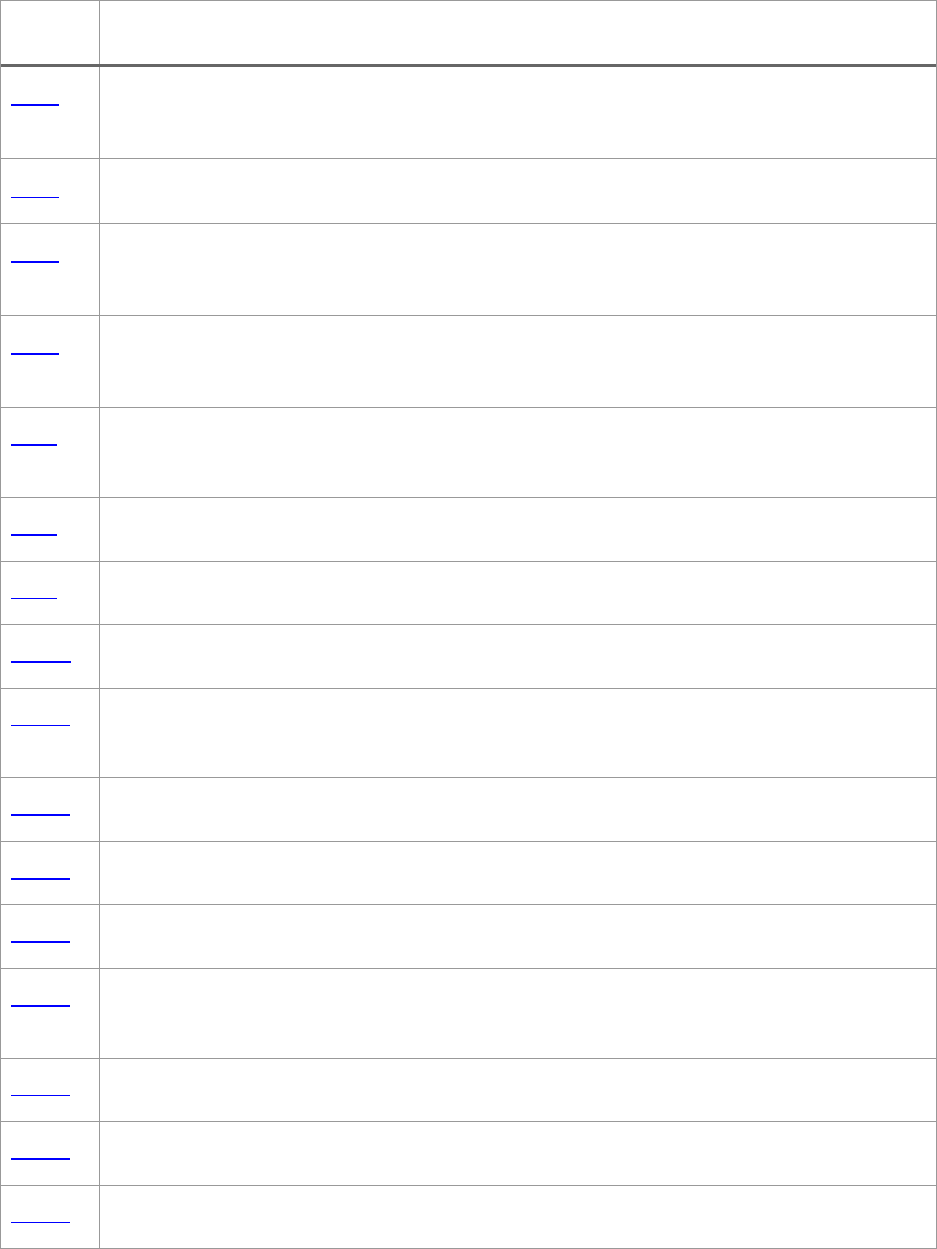
Page 9 of 147
Table 8-1-1
No. Subject
76-2 Application of CAS to Contract Modifications and to Orders Placed Under
Basic Agreements
76-3 Policy for Application of CAS to Subcontracts
76-4 Determining Increased Costs to the Government for CAS Covered FFP
Contracts
76-5 Treatment of Implementation Costs Related to Changes in Cost Accounting
Practices
76-6 Application of CAS Clause to Changes in Contractor’s Established Practices
when a Disclosure Statement has been Submitted
76-7 Significance of "Effective" and "Applicability" Dates Included in CAS
76-9 Measurement of Cost Impact on FFP Contracts
77-10 Retroactive Implementation of CAS When Timely Compliance is Not Feasible
77-13 Applicability of CAS 405 to Costs Determined to be Unallowable on the Basis of
Allocability
77-15 Influence of CAS Regulations on Contract Terminations
77-16 Applicability of CAS to Letter Contracts
77-17 Identification of CAS Contract Universe at a Contractor’s Plant
77-18 Implementation of CAS 414 - Cost of Money as an Element of the Cost of
Facilities Capital; and DPC 76-3
77-19 Administration of Leased Facilities Under CAS 414
77-20 Policy for Withdrawing Adequacy Determination of Disclosure Statement
78-21 Implementation of CAS 410, Allocation of Business Unit G&A Expenses to Final
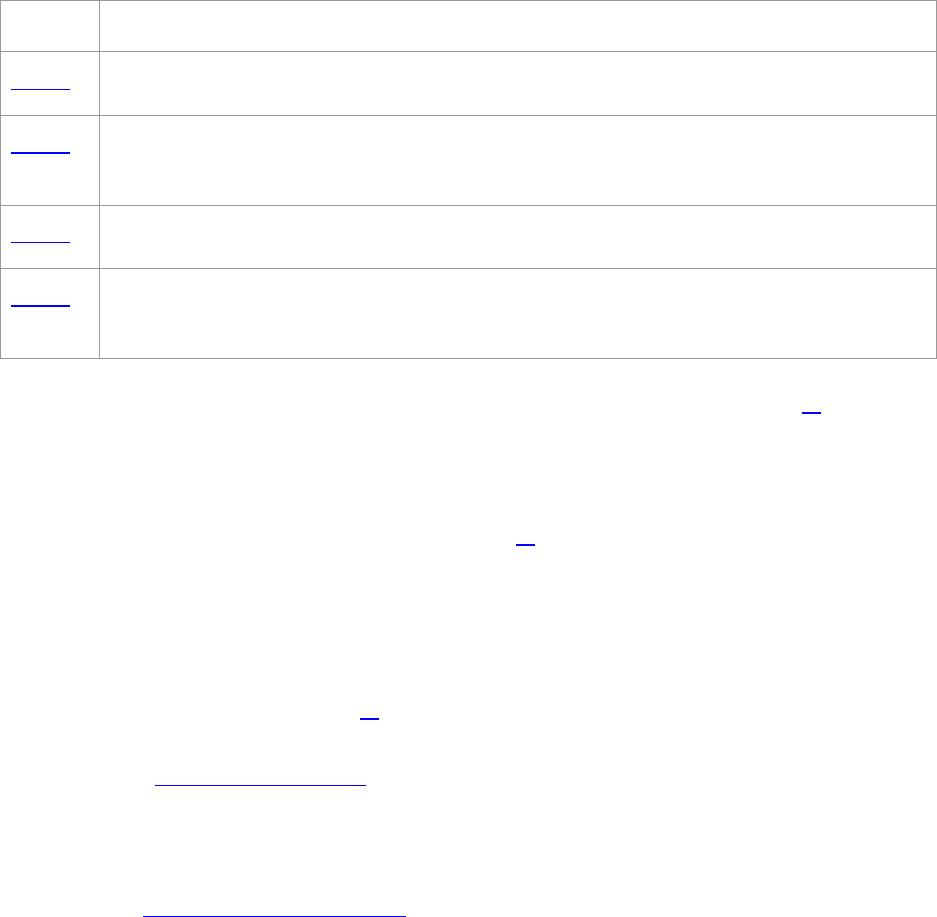
Page 10 of 147
Cost Objectives
78-22 CAS 409 and the Development of Asset Service Lives
79-23 Administration of Equitable Adjustments for Accounting Changes not Required
by New Cost Accounting Standards
79-24 Allocation of Business Unit G&A Expense to Facilities Contracts
81-25 Change in Cost Accounting Practice for State Income and Franchise Taxes as a
Result of Change in Method of Reporting Income from Long Term Contracts
8-103 CAS Coverage Requirements and CAS Exemptions **
The following subsections contain a summary of CAS coverage requirements (see
Figure 8-1-1).
8-103.1 Educational Institutions – CAS **
Contracts and subcontracts with educational institutions are subject to special
CAS coverage (see chapter 13). Contracts and subcontracts performed by federally
funded research and development centers operated by educational institutions are
subject to CAS coverage for commercial companies.
8-103.2 CAS Exemptions **
The following categories of contracts and subcontracts are exempt from all CAS
requirements (48 CFR 9903.201-1):
a. Sealed bid contracts.
b. Negotiated contracts and subcontracts (including interdivisional work orders)
less than the Truth in Negotiations Act (TINA) threshold.

Page 11 of 147
c. Contracts and subcontracts with small businesses. FAR Subpart 19.3
addresses determination of status as a small business. A small business (offeror) is
one that represents, through a written self-certification, that it is a small business
concern in connection with a specific solicitation and has not been determined by the
Small Business Administration (SBA) to be other than a small business. The
contracting officer accepts an offeror's representation unless that representation is
challenged or questioned. If the status is challenged, the SBA will evaluate the status of
the concern and make a determination. (Specific standards appear in Part 121 of Title
13 of the Code of Federal Regulations.)
d. Contracts and subcontracts with foreign governments or their agents or
instrumentalities or, insofar as the requirements of CAS other than CAS 401 and CAS
402 are concerned, any contract or subcontract awarded to a foreign concern. Because
CAS does not define the terms “agents or instrumentalities” or “foreign concern,” a
foreign contractor’s status must be inferred from whether it operates as a for-profit
business concern or a non-profit governmental organization, as in the following
examples:
(1) Contractor ABC is a foreign company partly owned by its government.
ABC manufactures aircraft parts and assemblies, which it sells to various government
and commercial customers under prime contracts and subcontracts. ABC operates for
profit and tracks its expenses, revenues, and net income, which it reports to its owners.
For CAS purposes, ABC is deemed a foreign concern because it operates as a for-profit
business concern, and therefore must comply with CAS 401 and 402 on its U.S.
Government contracts and subcontracts.
(2) Contractor XYZ is a foreign research laboratory owned and operated by its
government. XYZ primarily provides medical research and testing for its government
department, and it also routinely offers its services to other government and private
customers and charges according to a schedule of prices that are intended to cover its
costs and overhead. XYZ tracks its sources and uses of funds and reports this
information to the head of the government department of which it is a part. For CAS
purposes, XYZ is deemed an agent or instrumentality of its government because it
operates as a non-profit government organization, and therefore is exempt from CAS.
e. Contracts and subcontracts in which the price is set by law or regulation.
f. Firm-fixed-price contracts and subcontracts for the acquisition of commercial
items.
g. Contracts or subcontracts less than $7.5 million, provided that, at the time of
award, the business unit of the contractor or subcontractor is not currently performing
any CAS-covered contracts or subcontracts valued at $7.5 million or greater. “Currently
performing” is defined in 48 CFR 9903.301, Definitions. A contract is being currently
performed if the contractor has not yet received notification of final acceptance of all
supplies, services, and data deliverable under the contract (including options).
“Currently performing” is intended to reflect the period of time when work is being

Page 12 of 147
performed on contractual effort. The period ends when the Government notifies the
contractor of final acceptance of all items under the contract. If a contractor is currently
performing a CAS-covered contract of $7.5 million or greater, CAS coverage is triggered
and new awards are subject to CAS (unless they meet another exemption under
48 CFR 9903.201-1(b)).
h. Subcontracts under the NATO PHM Ship program to be performed outside the
United States by a foreign concern.
i. Firm-fixed-price contracts and subcontracts awarded on the basis of adequate
price competition without submission of certified cost or pricing data.
j. In cases where the prime contract is exempt from CAS under any of the
exemptions at 48 CFR 9903.201-1 any subcontract under that prime is always exempt
from CAS.
8-103.3 Types of Coverage **
a. Full coverage requires business units (as defined in CAS 410-30(a)(2)) comply
with all of the CAS in effect on the contract award date and with any CAS that become
applicable because of new standards (CAS clause at FAR 52.230-2). Full coverage
applies to contractor business units that:
(1) Received a single CAS-covered contract award, including option amounts,
of $50 million or more, or
(2) Received $50 million or more in CAS-covered contract awards during the
immediately preceding cost accounting period.
b. Modified CAS coverage (CAS clause at FAR 52.230-3) requires only that the
contractor comply with CAS 401, 402, 405, and 406. Modified CAS coverage applies to
contractor business units that received less than $50 million in net CAS-covered awards
in the immediately preceding cost accounting period.
c. When any one contract is awarded with modified CAS coverage, all CAS-
covered contracts awarded to that business unit during that cost accounting period are
also subject to modified coverage, except that when a business unit receives a single
CAS-covered contract award of $50 million or more, that contract is subject to full
coverage. Thereafter, any covered contract awarded during that accounting period and
the subsequent accounting period is subject to full CAS coverage.
d. The CAS status of a contract or subcontract (full coverage, modified coverage,
or exempt from CAS), remains the same throughout its life regardless of changes in the
business unit’s CAS status in the current or subsequent cost accounting periods (i.e., a
contract awarded with modified coverage remains subject to such coverage throughout
its life even if subsequent period contracts are awarded with full coverage).
e. Subcontract coverage. (1) When a subcontract is awarded under a CAS-

Page 13 of 147
covered prime contract (and higher-tier subcontract), CAS coverage of the subcontract
is determined in the same manner as prime contracts awarded to the subcontractor's
business unit; i.e., determine if any of the exemptions from CAS at 48 CFR 9903.201-1
apply to the subcontract (see 8-103.2). (2) Working Group Paper 76-3, Policy for
Application of CAS to Subcontracts, states that the standards applicable to the prime
contract at the time it was awarded are also applicable to the subcontract. One might
interpret this to mean that if a prime contract is subject to full CAS coverage, the
subcontract is also subject to full CAS coverage. This appears to conflict with the
guidance at 8-103.3e(1) that states that CAS coverage for subcontracts is determined in
the same manner as it is determined for prime contracts awarded to the subcontractor's
business unit. There is no conflict, however, because the Working Group Paper was
issued before the category of modified coverage was created. When the Working
Group Paper was issued, no distinction was made between full and modified coverage.
As stated in 8-103.3e(1), CAS coverage at the subcontract level should continue to
reflect the same CAS coverage as prime contracts awarded to the same business unit.
8-103.4 Effect of Contract Modifications **
Contract modifications made under the terms and conditions of the contract do
not affect its status with respect to CAS applicability. Therefore, if CAS was applicable
to the basic contract, it will apply to the modification. Conversely, if the basic contract
was exempt from CAS, the modification will also be exempt regardless of the amount of
the modification. However, if the contract modification adds new work it must be treated
for CAS purposes as if it were a new contract. In this case, if the modification exceeds
the threshold, it will be CAS-covered (see CAS Working Group Paper 76-2).
8-103.5 Effect of Basic Ordering Agreements **
Basic agreements and basic ordering agreements (BOAs) are not considered
contracts (FAR 16.702(a) and 16-703(a)). Since orders must be considered individually
in determining CAS applicability, only orders that exceed the threshold will be CAS-
covered (see CAS Working Group Paper 76-2).
8-103.6 Effect of Letter Contracts **
CAS is applicable to letter contracts exceeding the threshold as of the date of the
award. Definitizing the contract will not activate any new standards since definitization
is a contract modification rather than a new contract (see CAS Working Group Paper
77-16).
8-103.7 CAS Flowdown Clause - FAR 52.230-2 **

Page 14 of 147
The CAS clauses at FAR 52.230-2(d) and FAR 52.230-3(d) (for full and modified
coverage, respectively) require a contractor to include the substance of the CAS clause
in all negotiated subcontracts (at any tier) into which the contractor enters. This is
commonly referred to as the "CAS flow down clause”. As discussed in 8-103.3e
however, if a subcontract meets one of the CAS exemptions at 48 CFR 9903.201-1 (see
8-103.2), the subcontract will not be subject to CAS. For example, a CAS-covered
prime contractor could not place the requirement for CAS compliance on a subcontract
with a small business because 48 CFR 9903.201-1(b)(3) specifically exempts contracts
and subcontracts with small businesses from CAS requirements.
8-103.8 Submission of Disclosure Statement **
The requirements for submission of a Disclosure Statement (48 CFR 9903.202-
1(b)) are:
a. Any business unit (as defined in CAS 410-30(a)(2)) that is selected to receive
a CAS-covered contract or subcontract of $50 million or more, including option
amounts, shall submit a Disclosure Statement before award.
b. Any company which, together with its segments (see CAS 410-30(a)(7)),
received net CAS-covered awards totaling more than $50 million in its most recent cost
accounting period shall submit a Disclosure Statement. When a Disclosure Statement
is required under these criteria, it must be submitted before award of the first CAS-
covered contract in the immediately following cost accounting period. However, if the
first covered award is made within 90 days of the start of the cost accounting period, the
contractor is not required to file until the end of the 90 days.
c. When required, a separate Disclosure Statement must be submitted for each
segment having more than the Truth in Negotiations Act (TINA) threshold of costs
included in the total price of any CAS-covered contract or subcontract, unless:
(1) The contract or subcontract is exempted by 48 CFR 9903.201-1, or
(2) In the most recently completed accounting period, the segment's CAS-
covered awards are less than 30 percent of total segment sales for the period and less
than $10 million.
d. Any home office (as defined in CAS 403-30(a)(2)) that allocates costs to one
or more disclosing segments performing CAS-covered contracts must submit a part VIII
of the Disclosure Statement.
e. A foreign contractor must disclose in writing its cost accounting practices in
accordance with the contract clause at 48 CFR 9903.201-4(f). A foreign contractor may,
in lieu of filing Form CASB DS-1, use a form prescribed by its Government as long as
the CASB has determined the form satisfies the CAS disclosure objectives (48 CFR
9903.202-1(e)). CASB has approved the use of alternative forms for contractors of:
(1) Canada,

Page 15 of 147
(2) Federal Republic of Germany, and
(3) United Kingdom.
8-103.9 Additional Exemptions on a Particular Standard **
Subsection 62 of each cost accounting standard will provide for any additional
exemptions associated with a particular standard.
8-103.10 CAS Waivers **
a. The CAS statute (Public Law 100-679) authorizes the CAS Board to waive
CAS requirements on individual contracts and subcontracts. 48 CFR 9903.201-5
addresses CAS waivers.
b. The CAS Board has granted authority to waive CAS to heads of executive
agencies. Implementing guidance is in FAR 30.201-5 and DFARS 230.201-5. FAR
2.101 defines “executive agency” as executive, military, and independent departments.
Delegation of waiver authority may not be made lower than the senior contract
policymaking level of the agency.
c. Heads of executive agencies may waive CAS under the following two
circumstances:
● The contract or subcontract is less than $15 million, and the segment
performing the work is primarily engaged in the sale of commercial items
and has no contracts or subcontracts subject to CAS, or
● “Exceptional circumstances” exist whereby a waiver of CAS is necessary to
meet the needs of the agency. Exceptional circumstances are deemed to
exist only when the benefits to be derived from waiving CAS outweigh the
risk associated with the waiver. A waiver for exceptional circumstances
must be in writing and include a statement of the specific circumstances
that justify granting the waiver. The Defense Procurement and Acquisition
Policy on January 31, 2003 issued guidance, which provides that all three
of the following criteria must be met for a waiver of CAS to be considered
under “exceptional circumstances” for DOD contracts.
(1) The property or services cannot reasonably be obtained under the
contract, subcontract, or modification, as the case may be, without the grant of the
waiver,
(2) The price can be determined to be fair and reasonable without the
application of the Cost Accounting Standards, and
(3) There are demonstrated benefits to granting the waiver.
8-104 CAS Audit Responsibility **
8-104.1 Basic Functions **

Page 16 of 147
FAR 30.202-6, 30.202-7, and 30.601 outline the basic functions of the contract
auditor in the implementation of the standards. They provide that the contract auditor
shall be responsible for making recommendations to the cognizant Federal agency
official (CFAO). The CFAO is the contracting officer assigned by the cognizant Federal
agency to administer CAS. Within DoD, the CFAO is the cognizant ACO. The auditor’s
recommendations to the CFAO include whether:
● a contractor's Disclosure Statement, submitted as a condition of
contracting, adequately describes the actual or proposed cost accounting
practices as required by 41 U.S.C. 1501 through 1506 as implemented by
the CASB,
● a contractor's disclosed cost accounting practices are in compliance with
FAR Part 31 and applicable cost accounting standards,
● a contractor's or subcontractor's failure to comply with applicable cost
accounting standards or to follow consistently its disclosed or established
cost accounting practices has resulted, or may result, in any increased cost
paid by the Government, and
● a contractor's or subcontractor's proposed price changes, submitted as a
result of changes made to previously disclosed or established cost
accounting practices, are fair and reasonable.
8-104.2 Auditor's Function on Subcontracts Subject to CAS **
As specifically related to subcontracts subject to CAS, the auditor's functions
tend to fall into the following areas:
a. The auditor will audit the books and records of prime contractors and higher
tier subcontractors to determine that appropriate CAS clauses are included (FAR
52.230-2, 52.230-3, and 52.230-6) in awarded subcontracts. In addition, the auditor will
determine that, when applicable, subcontractor Disclosure Statements have been
obtained.
b. 48 CFR 9903.202-8(a) and FAR 42.202(e)(2) provide that the company
awarding the CAS-covered subcontract is responsible, except as noted in c. and d.
below, for securing subcontractor compliance with CASB rules, regulations, and
standards. Notwithstanding these provisions, in most cases compliance audits of CAS-
covered subcontracts will be performed by the auditor cognizant of the subcontractor in
conjunction with the performance of other regularly scheduled audit assignments.
When DCAA audits a prime contractor that also holds covered subcontracts, the auditor
should routinely include the subcontracts in the CAS-covered audits. Even though the
audit responsibility may not have been formally assigned, the auditor, to protect the
Government's interest, must consider all covered work held by the contractor when
making CAS-related audits. At locations where no Government prime contracts exist,
the auditor should attempt to identify the existence of CAS-covered subcontracts either
during the performance of regular ongoing audits or through routine examinations of
existing acquisition records. Once identified, these subcontracts will also be subject to
audit tests for CAS compliance.

Page 17 of 147
c. Under the provisions of 48 CFR 9903.202-8(b) a subcontractor may satisfy
disclosure requirements by identifying to the prime contractor the CFAO to whom its
Disclosure Statement was previously submitted. 48 CFR 9903.202-8(c)(1) provides that
the subcontractor may submit a Disclosure Statement that contains privileged and
confidential information directly to the subcontractor's CFAO. In this case, a preaward
determination of adequacy is not required. Instead, the CFAO will advise the auditor to
perform postaward audits of compliance.
d. In accordance with 48 CFR 9903.202-8(c)(2), subcontractors not subject to
Disclosure Statement requirements may claim that other CAS-related audits by prime
contractors would jeopardize their proprietary data or competitive position. In such
cases, the subcontractor may request the Government to perform the audits.
e. FAR 30.607 specifies that when a price adjustment or noncompliance
determination is made at the subcontract level, the CFAO for the subcontractor shall
provide the negotiation memorandum or determination to the CFAO of the next higher-
tier contractor who may not change the determination of the CFAO at the lower-tier
subcontractor. In addition, the section provides that remedies are made at the prime
contract level if a subcontractor refuses to submit a required GDM or DCI proposal.
8-104.3 Contract Audit Coordinator (CAC) **
The CAC will be responsible for assuring, for all organizational units of the
assigned company, that consistent and compatible audit conclusions are reached by all
FAOs involved. Specific responsibilities for all auditors in the coordination process are
in subsequent sections of this chapter. If a CAC has not been assigned to a
multidivisional contractor, the regional director cognizant of the corporate home office
will designate a Corporate Home Office Auditor (CHOA) or Group Audit Coordinator
(GAC), as applicable (see also 8-302.6 for audit coordination within multi-organizational
companies).

Page 19 of 147
8-200 Section 2 - Disclosure Statement Adequacy **
8-201 Introduction **
This section provides audit guidance for determining adequacy of initial and
revised Disclosure Statements submitted on CASB Form DS-1.
a. The adequacy assessment is performed and documented as part of the planning
phase of a compliance examination on an initial or revised Disclosure Statement, prior
to formally accepting the engagement. As further discussed in 8-202 and 8-203,
discuss the assessment with the CFAO and, in the case of an initial Disclosure
Statement, obtain the CFAO’s adequacy determination. A separate audit report on
adequacy will not be issued.
b. The purpose of the adequacy review is to determine whether the disclosed cost
accounting practices to be used for estimating, accumulating and reporting contract
costs, as described, are:
(1) Current, i.e. the disclosed practices are consistent with the contractor’s
intended practice described during the walk through;
(2) Accurate, i.e. the disclosed practices are consistent with the policies and
procedures provided during the walk through; and
(3) Complete, i.e. the contractor completed all items on the CASB Form DS-1 in
accordance with the General Instructions, and each disclosed practice stands on its
own with minimal explanation needed from the contractor.
Additional guidance on determining whether the Disclosure Statement is current,
accurate, and complete will be found in 8-204.
c. If the Disclosure Statement is current, accurate, and complete, the submission is
acceptable for performing an audit of the disclosed practices for compliance with CAS
and FAR Part 31.
d. FAR 30.202-6(b) establishes the CFAO’s written determination that a required
Disclosure Statement is adequate as a condition of contract award. Therefore, the
auditor should expedite the adequacy assessment of the initial Disclosure Statement to
the extent possible.
8-202 Review of Initial Disclosure Statement for Adequacy **
a. All initial Disclosure Statements are required to be audited. Before accepting an
engagement to audit the compliance of an initial Disclosure Statement, the auditor will
review the Disclosure Statement for adequacy as required by FAR 30.202-7(a)(1),
document the conclusion, and discuss the assessment with the CFAO followed by a
memorandum to the CFAO confirming the discussion.

Page 20 of 147
b. The auditor will obtain the CFAO’s determination of adequacy before
commencing the audit of the disclosed practices for compliance with CAS as required
by FAR 30.202-7(b)(1). For this purpose, an informal notification of the CFAO’s
determination is sufficient. The auditor will document the CFAO’s determination in the
working papers. The CFAO’s formal adequacy determination memorandum must be
obtained prior to issuance of the final report.
c. If the CFAO determines the Disclosure Statement to be inadequate and the
contractor revises its Disclosure Statement (FAR 30.202-7(a)(2)(ii)), the auditor will
assess the revision for adequacy and discuss again with the CFAO. Once the
Disclosure Statement is determined adequate, the auditor will begin the audit of the
disclosed practices for compliance with CAS and FAR Part 31.
8-203 Review of Revised Disclosure Statement for Adequacy **
a. FAR 30.604(b) requires the CFAO to review changes to disclosed cost
accounting practices for adequacy and compliance concurrently, and FAR 30.601(c)
directs the CFAO to request and consider the auditor’s advice in CAS administration.
Before accepting an engagement to audit the compliance of a Disclosure Statement
revision, the auditor will review and document the adequacy of the revised portions of
the Disclosure Statement and discuss the assessment with the CFAO.
b. As part of the discussion with the CFAO, the auditor should discuss the risk and
significance of the revised practices, reach agreement on which cost accounting
practices will be audited, and give the CFAO enough information to resolve
inadequacies prior to requesting the audit. The materiality of the cost accounting
practice change also determines the need for the CFAO to request a cost impact
proposal.
c. Since the Disclosure Statement is already deemed adequate (aside from the
revisions), the auditor will not issue a separate memorandum on adequacy of the
revised practices to the CFAO. The auditor’s acknowledgment of the audit request is
sufficient to acknowledge adequacy of the requested practices as part of accepting the
engagement.
d. Purely administrative changes, such as a change of address or point of contact,
would not impact the adequacy or compliance of the disclosed practices and need not
be addressed in a compliance audit. Similarly, a revision that is intended to enhance
the description of an accounting practice but does not change the measurement,
assignment, or allocation of costs is not a cost accounting practice change requiring an
audit. Coordinate with the CFAO on changes that are not considered cost accounting
practice changes and do not require an audit.
8-204 Techniques for Assessing Disclosure Statement Adequacy **
a. To be considered adequate, a Disclosure Statement must be current, accurate,
and complete. Perform the adequacy assessment on an initial Disclosure Statement in
its entirety. Perform the adequacy assessment of a revised Disclosure Statement on
Page 21 of 147
the changed cost accounting practice(s).
(1) A Disclosure Statement is current if it describes the cost accounting
practices which the contractor intends to follow for estimating, accumulating, and
reporting costs on CAS-covered contracts/subcontracts. The Disclosure Statement,
could include practices that are currently in use, will be instituted at some future date,
will be followed with the incurrence of a new cost, or a combination of these.
(a) Ascertain whether the cost accounting practices identified in the
Disclosure Statement are, in fact, the contractor's current practices. Useful data related
to the contractor’s cost accounting practices may be available in the permanent file
and/or in recent audits of the accounting system, incurred costs, indirect cost rates,
and forward pricing proposals. If available information discloses a difference between a
described practice and an existing practice, discuss it with the contractor to ascertain
whether they intend to change the practice.
(b) Obtain a walkthrough of the Disclosure Statement from the contractor.
Have the contractor demonstrate the basis of the described practices and how the
practices are implemented in the accounting system. If the contractor plans to change
a cost accounting practice but the changed practice is not described, the intended
future practice should be described as well as the existing practice in order for the
disclosure to be considered current.
(c) Where the contractor already has covered contracts, but was not
previously required to file a Disclosure Statement, the practices subsequently
described should be the same as those used to estimate and accumulate costs for the
contracts entered into before the Disclosure Statement was required. If there are any
known differences, ascertain whether the contractor is consistently following the cost
accounting practices that were in effect when the initial covered contract was awarded,
or has changed one or more cost accounting practices without notifying the CFAO.
(2) A Disclosure Statement is accurate if it correctly, clearly, and distinctly
describes the actual method of accounting the contractor uses or intends to use for
costs on CAS-covered contracts. vague, ambiguous, and contradictory descriptions of
the contractor's cost accounting practices may hinder subsequent compliance audits,
cause disputes and litigation between contracting parties, and ultimately result in
additional cost to the Government. Carefully evaluate the described practices for
specificity and clarity.
(a) Clerical accuracy is required for the Disclosure Statement. Verify whether
the contractor has checked the appropriate boxes, inserted the applicable code letters,
answered all questions, etc.
(b) Validate the consistency of Disclosure Statement entries using the
Internal Consistency of Disclosed Practices tool delivered in the CaseWare
workpackage.
(c) Be alert for vague, incomplete or ambiguous items which could lead to

Page 22 of 147
alternative accounting interpretations. Ask the contractor to clarify the specific meaning
of such items. If significant items remain unclarified, recommend the CFAO find the
Disclosure Statement inadequate.
(3) A Disclosure Statement is complete if it conforms with the CASB Form DS-1
General Instructions, includes all significant cost accounting practices the contractor
intends to use, and provides enough information for the Government to fully
understand the cost accounting practices being described.
(a) Validate conformance to the General Instructions using the Conformity of
Disclosure Statement with General Instructions tool delivered in the CaseWare
workpackage.
(b) Obtain the contractor’s most recent incurred cost submission, forward
pricing proposal submissions, cost billings, or other recent contract cost data to
ascertain the significant elements of cost for which the contractor should describe cost
accounting practices in its Disclosure Statement. For example, if the cost data
indicates that the contractor is expected to incur and bill manufacturing overhead and
engineering overhead, the Disclosure Statement should specifically identify and
describe the cost accounting practices for each of these cost pools along with the
respective allocation bases and rates.
(c) All significant cost accounting practices for Government contract costs
must be disclosed and adequately described. Ascertain that all the practices are
disclosed either by describing the practice in an appropriately referenced Continuation
Sheet, or by inclusion of or reference to existing written accounting policies and
procedures.
(d) All significant home office costs allocated to Government contracts must
be adequately described in the home office Disclosure Statement Section VIII.
Segment auditors should ascertain that the receiving segment’s Disclosure Statement
identifies each significant home office cost, the home office from which the costs are
received, and the segment’s cost accounting practices for the costs.
b. Discuss adequacy concerns with the CFAO. Include specific evidence to allow
the CFAO to make a determination based on the deficient element of adequacy
(current, accurate, and complete) and to facilitate the notification and resolution of the
inadequacy with the contractor.
8-300 Section 3 - Audits of Compliance with Cost Accounting
Standards Board (CASB) Rules, Regulations, and Standards,
and with FAR **

Page 23 of 147
8-301 Introduction **
a. This section provides audit guidance for the evaluation of the contractor's
Disclosure Statement and the practices used for estimating, accumulating and
reporting costs on contracts subject to 41 U.S.C. 1501 through 1506. The purpose of
the audit is to ascertain whether the disclosed or established practices are in
compliance with the CASB rules, regulations, and standards as well as appropriate
acquisition regulations. The initial audit of a Disclosure Statement’s compliance should
be scheduled for completion within 60 days after the CFAO’s determination of
adequacy of the Disclosure Statement. The aspects of compliance audits covered in
this section are:
(1) General requirements including audit considerations and reporting
procedures.
(2) Audit considerations involved in the initial audit of the Disclosure Statement
for compliance.
(3) Audit requirements associated with the audit of cost accounting practices for
compliance during the proposal evaluation and contract performance.
b. Not only should the audit and subsequent reporting cover those conditions that
constitute actual noncompliances but should also include circumstances where the
occurrence of a planned or pending action will result in a violation of CASB rules,
regulations, or standards. A condition of potential noncompliance exists when:
(1) a contractor with a covered contract proposes a practice that will violate a
cost accounting standard or FAR cost principle when implemented (see 8-302.7f), or
(2) a contractor who does not have a covered contract but currently has or
proposes to implement a practice that, with the award of the initial covered contract,
will result in a violation of the CASB rules, regulations, and standards or appropriate
acquisition regulations. It is important to note that in each of the potential
noncompliance conditions described above, some future action is required before the
contractor is in violation of 41 U.S.C. 1501 through 1506. For example, the offeror
must be awarded a CAS-covered contract before it becomes subject to the rules and
regulations of the CASB. Similarly, a covered contractor must implement an
unacceptable practice to be in actual noncompliance.
c. To facilitate the implementation process, each promulgated standard contains
subparagraph -63 that prescribes the effective date and an applicability date. The
CASB defers the applicability date beyond the effective date in order to provide
contractors adequate time to prepare for compliance and make any required
accounting changes. Under the regulation, a contractor becomes subject to a new
standard only after receiving the first CAS-covered contract following the effective date.
(1) The distinction between the effective and applicability dates is important.
The effective date designates when the pricing of future CAS-covered contracts must

Page 24 of 147
reflect the new standard. It also identifies those CAS-covered contracts eligible for an
equitable adjustment, since only contracts in existence on the effective date can be
equitably adjusted to reflect the prospective application of a new or revised standard.
(2) The applicability date marks the beginning of the period when the
contractor's accounting and reporting systems must comply with a new or revised
standard. Proposals for contracts to be awarded after the effective date of a standard
should be evaluated carefully for compliance with the new or revised standard. The
proposal need only reflect compliance with the standard from the applicability date
forward. Most standards are applicable at the beginning of the next fiscal year after
receipt of a contractor’s first CAS-covered contract. CAS 418 and 420 are applicable at
the beginning of the second fiscal year, and CAS 401, 402, 405, and 414 are
applicable immediately. Therefore, it is important that the auditor determine the
applicability date of the particular Standard (including any revisions) under audit. Any
change resulting from early implementation by the contractor is to be administered as a
unilateral change. It will result in an equitable adjustment under FAR 52.230-2(a)(4)(iii)
for the period prior to the applicability if the CFAO determines that the unilateral
change is a desirable change.
(3) In unusual situations, the short lead-time between the effective and
applicability dates may create a difficult situation for the contractor. In such a case, the
contractor may request the change be retroactive. The CFAO shall determine whether
the contractor’s request is approved or not; however, the CFAO cannot approve a date
for the retroactive change before the beginning of the year in which the request was
made. Where a contractor can demonstrate to the CFAO that it would be virtually
impossible to comply with the effective or applicability dates of a standard, contracts
can be negotiated after the effective date of the standard based on the accounting
system used before the standard became effective.
(4) Contract terms should include provisions for price adjustments, retroactive to
the applicability date, for significant cost impact resulting from the change in cost
accounting practice to comply with the standard. In addition, the CFAO should
establish a specific date for the contractor to complete the changes to its estimating,
accounting, and reporting systems and Disclosure Statement to comply with the
standard. When this procedure is followed, noncompliances will not be reported.
Equitable adjustments computed as of the applicability date will be submitted as
provided in FAR 30.604(h)(4). (See CAS Working Group Papers 76-7 and 77-10.)
d. Questions have been raised regarding the CAS compliance of termination claims
since:
(1) costs in termination claims may be arranged differently than the cost
presentations in the original estimates, and
(2) termination claims often include as direct costs such items as settlement
costs or unexpired leases that would have been charged indirect if the contract had
been completed. Termination costing procedures, as detailed in FAR 31.205-42, are

Page 25 of 147
still effective. DoD does not view these procedures as violating either CAS 401 or 402,
since terminating a contract creates a situation that is totally unlike completing a
contract. Therefore, these costs would not be considered costs incurred for the same
purpose in like circumstances. Termination contracting officers should assure
themselves that within the context of termination situations, consistency is honored to
the extent that the circumstances are similar. To that end, it would be advisable for a
contractor to document its termination accounting procedures as part of its disclosed
practices. Indirect cost rates used in termination claims must represent full accounting
periods as required by CAS 406. (See CAS Working Group Paper 77-15.)
8-302 Noncompliance with CAS **
8-302.1 Requirements **
a. In accordance with FAR 30.605(b) when the CFAO determines a disclosed or
an established practice is not in compliance, the CFAO shall notify the contractor and
provide a copy of the notice to the auditor. The CFAO also makes a determination of
materiality.
(1) If the CFAO determines that the noncompliance is immaterial, the
contractor must correct the noncompliance and the Government reserves the right to
make contract adjustments if the contractor fails to correct the noncompliance and it
becomes material.
(2) If the CFAO determines that the noncompliance is material, the
contractor is required to submit a description of any cost accounting practice change
needed to bring the practices into compliance, which the auditor will review for
adequacy and compliance. If the proposed change is both adequate and compliant,
the contractor must submit a general dollar magnitude (GDM) proposal. In addition,
adjustment of the prime contract price or cost allowance in accordance with FAR
30.605 may be required. (See 8-500)
b. As in FAR 30.202-6 and 30.202-7, the contract auditor shall be responsible
for conducting audits as necessary to advise the CFAO as to whether the contractor's
disclosed or established practices comply with CAS and FAR Part 31. Because the
audit responsibility is a continuous requirement, instances of noncompliance may be
detected and reported at various stages of the procurement action.
8-302.2 Types of Noncompliance **
a. Eight types of noncompliance can be identified based on CASB rules,
regulations, and standards and FAR Part 31 as listed below:
Cost Accounting Practice
CAS
FAR
DS-1
Disclosed practices
(1)
(2)
Actual estimating practices
(3)
(4)
(5)
Actual accumulating and reporting
practices
(6)
(7)
(8)

Page 26 of 147
b. These types of noncompliance may be detected during audits of Disclosure
Statements, CAS compliance audits, or other types of audits:
Types of Noncompliance
Typically Detected
During Audits of
(1) Disclosed practices not compliant with CAS.
(2) Disclosed practices not compliant with FAR.
Disclosure statement
Forward pricing
Incurred cost
(3) Actual practices of estimating costs not compliant with CAS.
(4) Actual practices of estimating costs not compliant with FAR.
(5) Actual practices of estimating costs not compliant with the
Disclosure Statement.
Forward pricing
Estimating system
CAS compliance
(6) Actual practices of accumulating or reporting costs not
compliant with CAS.
(7) Actual practices of accumulating or reporting costs not
compliant with FAR.
(8) Actual practices of accumulating or reporting costs not
compliant with the Disclosure Statement.
Incurred costs
Accounting system
CAS compliance
c. In some cases multiple noncompliance conditions may exist. For example,
suppose a contractor allocates the costs of preparing initial bid proposals to cost
objectives on the basis of total cost input. This practice was previously disclosed to the
Government and deemed compliant with FAR 31.205-18 and CAS 420. However, in a
new proposal the contractor included the B&P expenses in the engineering overhead
pool, which was subsequently allocated to the proposed contract over direct
engineering labor dollars. In this situation, the types of noncompliances described in
bullets (3), (4), and (5) above would all apply.
d. The issuance of a new cost accounting standard could result in instances of
multiple types of noncompliance:
(1) Disclosed practices previously determined compliant could become
noncompliant with CAS and/or FAR, and
(2) Actual practices used to estimate and report costs, although in
compliance with disclosed practices, could become noncompliant with CAS and/or
FAR.
8-302.3 Compliance Considerations **
In auditing the contractor's cost accounting practices to ascertain whether they
are compliant with the cost accounting standards and FAR Part 31, the auditor should
follow the guidelines below:
a. In evaluating price proposals and performing audits of estimating system
compliance with DFARS 252.215-7002, the auditor evaluates the consistency between
the contractor's estimating and cost accumulating practices. The auditor may therefore

Page 27 of 147
be in a position, based on past audits, to ascertain whether the contractor complies
with the standard requiring consistency in estimating, accumulating, and reporting
costs.
b. The standard prohibiting double counting (CAS 402) did not introduce an
entirely new ground rule since acquisition regulations contained similar provisions. The
prohibition against double counting in the acquisition regulations however, was
narrower in scope since it basically applied to individual contracts. CAS 402 has
extended the scope by adding the requirement that each type of cost incurred for the
same purpose, in like circumstances, must be either direct or indirect for all final cost
objectives. Prior audits of the contractor's incurred costs may provide information on
whether the cost accounting practices comply with this standard.
c. With respect to noncompliance with FAR Part 31, when a cost accounting
practice has been questioned by the auditor in the past and the CFAO has not made a
final determination, the practice should be questioned again. Once the CFAO makes a
determination on the issue, the decisions will be followed. If the FAR is subsequently
changed or a change in circumstance occurs, a practice should again be evaluated for
compliance.
d. If a cost accounting practice has been questioned because of noncompliance
with FAR Part 31 and the CFAO supported the auditor's position, but the ASBCA or
Court of Claims ruled against the Government, the auditor will not question the practice
again unless there is a subsequent change in FAR or the cost accounting standards
that would negate the decision. However, if the ASBCA or the Court of Claims ruled in
favor of the Government, the practice should be questioned at all other contractor
locations where circumstances are substantially the same.
8-302.4 Discussions with the CFAO and the Contractor **
a. The auditor should discuss noncompliance matters with the CFAO at the
earliest possible opportunity. It is important to keep the CFAO informed of the auditor's
actions and to identify areas where the auditor may need to provide further information
regarding his or her recommendations.
b. As an integral part of the audit, discuss the findings with the contractor. (See
4-300.)
8-302.5 Coordination for Consistent Treatment **
a. Because of the consolidated contract audit function and the relationship of the
CASB rules, regulations, and standards to the DCAA mission, DCAA is in an
advantageous position to ascertain whether the promulgated standards, rules, and
regulations are consistently applied. To fulfill this responsibility, DCAA must effectively
coordinate all phases of audits involving CAS.
b. Consistency in implementing CASB rules, regulations, and standards should
be one of the auditor's primary concerns. Contractors are justifiably sensitive to
unwarranted variations in the audit treatment of similar situations. To assure the

Page 28 of 147
provisions of 41 U.S.C. 1501 through 1506 are applied consistently, audit findings that
are significant in amount or nature should ordinarily be coordinated with the region or
CAD before the reports are issued.
c. When coordination involves other DCAA regional or CAD offices, the
cognizant auditor should refer to his or her region or CAD those matters that cannot be
resolved by the FAOs involved. The region may forward the matter to Headquarters,
Attention PAC, if agreement is not achievable at the regional level. (See 4-900.)
d. Information on other significant problems or controversial situations will also
be provided to Headquarters, Attention PAC. (See 4-900.) This information will assist
in developing guidance to improve auditing and reporting techniques or in referring
matters to the Office of the Secretary of Defense (OSD) when DoD-wide guidance is
needed to achieve uniform and consistent implementation of CAS.
8-302.6 CAS Coordination in CAC/CHOA/GAC Complexes **
a. The DCAA CAC program, for major multi-segment contractors and other
specific groups of contractors, is described in 15-200. The CHOA or GAC will be
designated in accordance with 8-104.3 for multi-segment contractors outside a CAC
complex. The CAC, CHOA, and GAC complexes play a significant part in promoting
consistent treatment of CAS compliance issues among related or similar contractor
segments.
b. Each CAC/CHOA/GAC will:
(1) Obtain from the cognizant FAOs the necessary data to compile a listing
of all known noncompliance issues at each of the segments that comprise the complex.
The listing, along with information on resolution of the issues, should be distributed to
all FAOs that have cognizance of any segment within the complex.
(2) Review and update the listing for new instances of noncompliance and
include information regarding noncompliance issues resolved. Circulate this data to
the cognizant FAOs to keep them informed about current developments.
(3) Before issuing a noncompliance report, discuss the recommendations
with the FAO. This should be done to assure consistent treatment of similar conditions
at the various segments of the complex.
(4) Recommend workshops if needed to evaluate mutual CAS problems,
(see 15-200).
c. FAOs in the complex will:
(1) Inform the CAC/CHOA/GAC of known problem areas.
(2) Inform the CAC/CHOA/GAC immediately when new problem areas are
encountered.

Page 29 of 147
(3) Evaluate problem areas of other organizational units to determine if
similar problems exist or could exist at your location.
(4) Plan audits so findings can be coordinated before reports are issued.
8-302.7 Reporting CAS Noncompliance **
a. In assigning responsibilities to the CFAO and the contract auditor, the
regulations (FAR 42.302(a)(11)), FAR 30.601, and FAR 30.202-6), require the auditor
to conduct audits of Disclosure Statements for compliance and report practices that do
not comply with CASB rules, regulations, and standards. These reports furnish the
CFAO with information and audit recommendations to assist in making determinations
of the reported practices compliance with the CAS Rules and Regulations or FAR Part
31. Noncompliance reports should include only CAS violations that the auditor
considers significant. The auditor should report:
(1) Violations of major requirements of CAS regardless of their effect on
contract costs.
(2) Noncompliance having a significant cost effect on CAS-covered
contracts.
(3) Noncompliance that could eventually result in a significant adjustment
because of changed circumstances even though there is currently no significant effect
on contract costs. Note that a noncompliance report will not be issued when the
auditor determines the noncompliance will never result in a significant adjustment.
(4) Noncompliance that is an inherent part of the contractor’s cost accounting
system and that are of such a nature that the cost impact on CAS-covered contracts
would be difficult or impossible to determine. (In ASBCA Case No. 20998, the Board
upheld the Government's right to determine a contractor to be in noncompliance even
though the Government was unable to determine that increased costs resulted from
the noncompliance. This ASBCA decision should be referenced in all audit reports
recommending noncompliance where the cost impact cannot be determined.)
b. The following are examples of practices that deviate from CAS. Even if such
practices have not resulted in increased cost or no increased cost can be determined,
the conditions described are reportable as noncompliances.
(1) A contractor allocates home office expenses to divisions as fixed
management charges. The charges are less than the amounts that would have been
allocated had the contractor followed CAS 403. The auditor should recommend that
the CFAO advise the contractor that costs will be disapproved when the method used
by the contractor results in an amount exceeding that which would have been allocated
under the standard.
(2) Another contractor estimates labor cost by category, i.e., fabrication
assembly, inspection, etc. The actual costs are accumulated in one undifferentiated

Page 30 of 147
account. Under these circumstances, the auditor would not be able to determine if
there is any cost effect since there are no records to compare. The auditor should
report the noncompliance and recommend that the contractor be required to follow
consistent practices in estimating and accumulating labor costs.
c. The following guidance should be followed in reporting instances of
noncompliance with CAS.
(1) When a CAS noncompliance is identified while performing a CAS
Disclosure Statement compliance audit or a comprehensive CAS compliance audit
(activity codes 19100 and 194xx) the noncompliance will be described in the
assignment’s audit report. The noncompliance will be reported in the CAS assignment
audit report. A separate noncompliance report will not be issued.
(2) When a CAS noncompliance is identified while performing any other audit
functions (i.e., price evaluations, audit of incurred costs, and system audits) a separate
report (activity code 19200) will be used to report the noncompliance. The
noncompliance report and originating GAGAS examination will note that the separate
noncompliance report is an integral part of the examination engagement and each
report will reference the other. The noncompliance may be fully developed and
sufficiently supported in the originating assignment, or limited additional work may be
necessary to fully develop the elements of the auditor’s finding of noncompliance (see
10-211.2c).
(3) To avoid unnecessary and duplicative reporting, the CAS noncompliance
will be fully described in the noncompliance report and other reports may cross-
reference that report.
(4) Generally, when the audit discloses noncompliances with more than one
cost accounting standard, a separate noncompliance audit report should be issued for
each standard. However, noncompliances with two or more standards should be
issued in the same report when the noncompliances arise from the same cause and
the resolution of one resolves the other. Usually, auditors should not issue multiple
audit reports for noncompliances with a single CAS.
(5) Reports will be issued as the auditor discovers instances of
noncompliance during normal audit functions. There is no requirement for final
voucher evaluation memorandums and audit reports on final pricing to include a
"clearance" statement with respect to compliance with 41 U.S.C. 1501 through 1506.
(6) Include a statement regarding the contractor's responsibilities under the
CAS administration clause at FAR 52.230-6(b & c). This statement may read as
follows:
“Within 60 days of the contractor’s agreement to the initial finding of
noncompliance or the CFAO’s determination of noncompliance, the contractor is
required to submit the description of any change necessary to correct a failure to
comply with CAS or follow a disclosed practice. In addition, when requested by the
Page 31 of 147
CFAO, the contractor is responsible for submitting either a general dollar magnitude
(GDM) proposal or a detail cost-impact proposal prepared in accordance with the
requirements of FAR 52.230-6(g) and (i) or (h) and (i) respectively.”
(7) When a CAS noncompliance is identified during a forward pricing audit,
or there is an unresolved CAS noncompliance that relates to the subject matter, and
the impact of the noncompliance on the proposed amounts is significant and
quantifiable, the auditor should question the impact of the noncompliance in the
proposal under audit. A separate 19200 audit assignment should be established to
report the CAS noncompliance (see 8-302.7c.(2)). The proposal audit report should
describe the nature of the CAS noncompliance. Questioning the impact protects the
Government’s interest because the CFAO’s resolution of a noncompliance will only
affect existing contracts negotiated or billed under the noncompliant practice, and will
not affect contract pricing proposals that have not been negotiated.
(8) When a CAS noncompliance is identified during an incurred cost audit, or
there is an unresolved CAS noncompliance that relates to the subject matter, the
auditor should not question the impact of the noncompliance on the proposed amounts.
A separate 19200 audit assignment should be established to report the CAS
noncompliance (see 8-302.7c.(2)). The incurred cost report should describe the nature
of the CAS noncompliance; information related to the status of the 19100, 19200 or
194XX audit report (which includes an estimate of the impact of the noncompliance);
and state that the CAS noncompliance will be handled through the resolution process
specified in FAR 30.605. The contractor should not adjust its incurred cost proposals
and billed costs, nor should the auditor issue a DCAA Form 1 to suspend or disallow
noncompliance cost impacts in an audit of incurred costs. The cost impact must be
resolved by the CFAO in accordance with the requirements of CAS and FAR, which
are separate and distinct from the processes for resolving incurred cost disallowances.
Since the noncompliance cannot be settled by audit determination, do not issue a final
indirect rate letter. DCAA does not have the authority to resolve the CAS
noncompliance as part of its incurred cost audit. The auditor should issue a report with
a modified opinion according to the guidance in CAM 2-402.3 and CAM 10-208.5.
There is no requirement to question the impact of the CAS noncompliance in the
incurred cost report, so the auditor will not have a reservation about the engagement
for the lack of quantifying the impact in the exhibits and schedules of the report.
d. The auditor is responsible for conducting audits as necessary to ascertain
that contractors are complying with CAS. Therefore, a general request by a CFAO for
reports and/or comments on contractor compliance is not needed. If such a request is
received, inform the CFAO that although DCAA does perform compliance audits of
specific Cost Accounting Standards, we do not issue reports on contractor overall
compliance with CAS. (See 8-304.2 regarding compliance audits.) Offer to audit and
report on any specific area that the CFAO may suspect is noncompliant. If a CAS
compliance audit is already planned in the area of concern specified by the CFAO, the
audit should be rescheduled to coincide with the CFAO request. When an audit
relating to a particular identified practice is requested, the auditor and the CFAO will
establish a mutually acceptable date for submitting the audit results. The auditor will
Page 32 of 147
then include the required audit steps to cover the questioned practice in the next
scheduled audit or, if necessary, will schedule a special audit. The CFAO's request to
audit a specific practice should be given prompt consideration, but should not receive
higher priority than proposal evaluations. Acknowledge the audit request or notify the
CFAO of the planned audit in accordance with 4-104. After the audit, issue either a
report on noncompliance or a brief report to inform the CFAO that the audit did not
identify a noncompliance in the specific area cited by the CFAO.
e. Reports on noncompliance.
(1) References to CAS rules and regulations (other than the Standards
themselves) should use the standard Federal Acquisition Regulation System
abbreviated methodology. Include the CFR title number, chapter, part, and section,
subsection, etc. For example:
Use "48 CFR 9903.302" to reference CFR Title 48, Chapter 99, Part 3,
Subpart 302.
Use "48 CFR 9903.302-4" to reference CFR Title 48, Chapter 99, Part 3,
Subpart 302, Section 4.
48 CFR 9904 incorporates the actual 19 CAS standards such as CAS
401. However, 48 CFR 9903 does not incorporate actual CAS standards.
Therefore 48 CFR 9903 subparagraphs should not include the acronym
“CAS” in them. For example, 48 CFR 9903.302-4 is appropriately referred to
simply as 48 CFR 9903.302-4 (i.e., “CAS” 302 is not an appropriate acronym
reference since 48 CFR 9903.302-4 is not a cost accounting standard.)
Once the full citation is used in an audit report, the shorter reference may be
used throughout the balance of the document to improve readability. References to the
Standards are understood to originate in 48 CFR 9904 and therefore by customary
usage may be cited as CAS 401, CAS 418-40, etc.
(2) All Cost Accounting Standards contain illustrations in Section 4XX-60 that
provide examples of cost accounting practices and specify whether or not such
practices would comply with the standard. Do not cite a contractor with noncompliance
with Section -60. To the extent that the contractor’s cost accounting practice matches
an illustration in Section -60 it may be cited to support a noncompliance with Sections
4XX-40 and 4XX-50 of the standard.
(3) Prepare audit reports using the report shell delivered with the CaseWare
working papers. The report Exhibit shall consist of a Statement of Condition and
Recommendation (SOCAR) that fully explains the noncompliance, our conclusions,
and our recommendations. Follow the guidance in CAM 10-211.2c to develop and
document the SOCAR in the working papers.
(4) Provide a copy of the draft SOCAR to the contractor (CAM 4-304.6c).
Include the contractor’s reaction statement, if one is provided, in the Exhibit followed by
the auditor’s response comments if a rebuttal is warranted. The contractor’s reaction
may be summarized in the Exhibit if it is lengthy. In all cases, a full copy of the
contractor’s written reaction should be included as an Appendix.

Page 33 of 147
f. Outstanding noncompliance issues (issues included in a previous
noncompliance report) may affect evaluations and reports related to other audits. If a
noncompliance report has been issued, the evaluation of a price proposal must
comment on and should question the impact of the noncompliance item on the
proposal being evaluated (8-302.7.c(7)). However, the annual incurred cost audit
should not question the impact of the noncompliance (8-302.7.c(8)). If a CAS
noncompliance is found during a proposal evaluation or other audit, the report for that
audit can be issued prior to the issuance of the CAS noncompliance report. However,
a CAS noncompliance report is still required so that the CFAO can take action.
8-302.8 Reporting FAR Noncompliance **
A noncompliance that violates both FAR and similar provisions in CAS should
be reported in one report and processed as required under FAR 52.230-2(a)(5) to
correct the noncompliance and recover any cost impact due the Government (see 8-
302.7 above). A noncompliance with FAR that does not violate CAS (or the contractor
has no CAS-covered contracts) is normally reported and the impact recovered as part
of other audits (e.g., incurred cost, forward pricing).
8-303 Audit of Disclosure Statement and/or Established Practices to Ascertain
Compliance with CAS and FAR **
8-303.1 Requirements **
a. FAR 52.230-2 (full CAS coverage) requires the contractor to adequately
disclose its cost accounting practices for all covered contracts. FAR 52.230-3
(modified CAS coverage) also requires a contractor to adequately disclose its cost
accounting practices under certain circumstances (see 8-103.8.c). An audit of the
initial Disclosure Statement will be made to ascertain compliance with Public Law 100-
679 (41 U.S.C. 1501 through 1506).
b. A noncompliance identified during an evaluation of a price proposal should be
included in a separate activity code 19200 report and submitted to the CFAO with the
evaluation report.
c. Audit files may contain sufficient information to determine whether the
Disclosure Statement complies with 41 U.S.C. 1501 through 1506, related regulatory
provisions, and FAR. The auditor should identify all significant areas where the
contractor's disclosed practices are not in compliance. Audit working papers should
sufficiently document the auditor's opinion regarding whether the contractor’s disclosed
practices comply with CAS and FAR.
d. FAR 30.202-7(b) provides that the contractor’s cost accounting practices
should comply with FAR Part 31 as well as CAS. However, the auditor should report
as noncompliances only those FAR violations that involve the direct and indirect
allocation or classification of costs. Essentially, this limitation excludes reporting as
noncompliance those FAR violations based solely on reasonableness or allowability.
8-303.2 Initial Audits of Compliance **

Page 34 of 147
a. An initial compliance audit of a contractor’s Disclosure Statement, as a rule,
should be scheduled for completion within 60 days after the CFAO has made a
determination of adequacy of the Disclosure Statement. Notify the CFAO of the audit
in accordance with 4-104. To avoid unnecessary effort at contractors having limited
Government business, the auditor should find out whether a covered contract has been
awarded before engaging in extensive audit effort to ascertain compliance.
b. The scope of compliance audits of initial Disclosure Statements should be
limited to determining whether the described practices comply with CAS and FAR Part
31. The auditor should not conduct transaction testing to determine if the contractor’s
actual practices comply with the described practices. Testing of actual compliance will
be tested later in accordance with the routine audit planning cycle. However, the
auditor may be aware through other audit work that an actual practice is noncompliant
with the disclosed practice. In this case, the auditor will report the noncompliance in
accordance with 8-302.7 above.
c. Upon completion of the compliance audit of the initial Disclosure Statement,
the auditor should prepare the audit report using the report shell delivered with the
CaseWare working papers, including an appropriate opinion in accordance with 10-
200. These reports are intended to inform the CFAO whether the cost accounting
practices disclosed in the contractor’s initial submission of its Disclosure Statement
comply with CAS and FAR Part 31. If the audit identified noncompliances, follow the
guidance in 8-302.7 above.
8-303.3 Changes to Disclosure Statements and/or Established Practices **
a. In accordance with FAR 52.230-6, the contractor must submit proposed
accounting changes to the CFAO. The timeframes for submission of proposed
changes are provided in FAR 52.230-6(b). 48 CFR 9903.302 provides definitions of
"cost accounting practice" and "change to a cost accounting practice", and contains
illustrations of changes. CAS Working Group Paper 81-25 concluded that a change
from a percentage of completion to a completed contract method of computing state
taxes was an accounting change. A change in accounting from a completed contract
to a percentage of completion, or a percentage of completion capitalized cost method
as required by the Tax Reform Act of 1986 is considered an accounting change.
b. An important CAS audit responsibility is to ascertain whether accounting
changes made by a contractor require a revision to the Disclosure Statement.
Therefore, auditors should request contractors to establish procedures to promptly
notify the Government of all proposed accounting changes. The auditor will evaluate
the acceptability of the contractor's proposed accounting changes. When a Disclosure
Statement revision is required but is not made, a noncompliance report should be
issued (e.g., practices used to record costs are not in compliance with Disclosure
Statement). A condition of noncompliance could also result from the contractor's
failure to follow the administrative procedures prescribed by FAR 52.230-6 in making
an accounting change. When the CFAO determines that the description of the change
is adequate and compliant and that the cost impact is material, the CFAO will request
submission of a cost impact proposal in accordance with FAR 30.604.

Page 35 of 147
c. A condition of noncompliance exists if, for example, a contractor estimates a
contract using a cost accounting practice consistent with its Disclosure Statement, and
at some point during the performance, changes the methods for computing and
accumulating a labor class, whether or not it was listed as a principal class of labor in
the Disclosure Statement. Costs are being accumulated in a manner inconsistent with
estimating practices and not in accordance with the Disclosure Statement. The report
to the CFAO should recommend that:
(1) a determination of noncompliance (CAS 401) be made,
(2) a general dollar magnitude submission be requested from the contractor
to evaluate the effect of the changed practice, for example:
If the contractor proposed one or more unilateral, desirable, and/or required cost
accounting practice changes:
“In accordance with FAR 52.230-6(c), when requested by the CFAO, the
contractor is responsible for submitting either a general dollar magnitude (GDM)
proposal or a detailed cost-impact (DCI) proposal and for engaging in
negotiations of adjustments resulting from the [unilateral, desirable, and/or
required] change(s) to disclosed cost accounting practices. A GDM proposal
should be prepared in accordance with the requirements of FAR 52.230-6(d)
and (f), and a DCI proposal should be prepared in accordance with the
requirements of FAR 52.230-6(e) and (f).”
If the contractor proposed (and the Statement of Changes identified) one or more
changes necessary to correct a noncompliance with an applicable CAS:
“In accordance with FAR 52.230-6(c), when requested by the CFAO, the
contractor is responsible for submitting either a general dollar magnitude (GDM)
proposal or a detailed cost-impact (DCI) proposal and for engaging in
negotiations of adjustments resulting from changes necessary to correct a failure
to comply with an applicable CAS. A GDM proposal should be prepared in
accordance with the requirements of FAR 52.230-6(g) and (i), and a DCI
proposal should be prepared in accordance with the requirements of FAR
52.230-6(h) and (i).”
End the paragraph with the estimate(s) of the cost impact(s).
“It is not practical to estimate the magnitude of the total cost impact for the
change(s) in the revision prior to your obtaining the GDM or DCI proposal from
the contractor. However, in the way of a partial estimate. . . . (Include an estimate
of the cost impact of each change or delete the last sentence if the auditor is
unable to provide a partial estimate and instead explain why an estimate could
not be provided.)”
Page 36 of 147
When there is increased cost to the Government because of a unilateral
change that is subject to the provisions of FAR 52.230-2(a)(4)(ii), the following
should be included:
“Any agreement which would result in net increased cost to the Government
caused by the contractor’s unilateral cost accounting practice change would be
contrary to the provisions of FAR 52.230-2(a)(4)(ii).”
(3) a revised Disclosure Statement be requested from the contractor
describing all principal classes of labor.
d. Preamble J of the CASB's rules, regulations, and standards contains a
discussion by the CASB on organizational changes. The preamble states in part that,
"... business changes by themselves are not changes in cost accounting practices”.
However, it also states that, "The decision as to whether there is a change in cost
accounting practice is made through an analysis of the circumstances of each
individual situation being promulgated in these regulations”.
Organizational changes that result in a change in the measurement of costs, the
assignment of costs to cost accounting periods, or the allocation of costs to cost
objectives, should be considered to be changes in cost accounting practice requiring
an adjustment to CAS-covered contracts for any increased costs. As a result of U.S.
Court of Appeals for the Federal Circuit No. 93-1164, a corporate reorganization that
involves a change in the grouping of segments for home office expense allocation
purposes should not be considered a change in cost accounting practice unless the
method or technique used to allocate the costs changes. For all other circumstances,
auditors need to evaluate the specifics of each situation on a case-by-case basis to
determine whether a change in cost accounting practice has resulted from a change in
the measurement, allocation, and assignment of costs.
e. When a Disclosure Statement change is submitted, the auditor should
coordinate the adequacy assessment with the CFAO and when requested complete
the compliance audit before the effective date. The timeframe for completing the
compliance audit of the requested practices should be coordinated with the CFAO (see
4-104).
(1) Similar to audits of initial Disclosure Statements (8-303.2 above), the
auditor will prepare a report on compliance of the requested practices using the report
shell delivered with the CaseWare working papers. Report noncompliant changed
practices using the guidance in 8-302.7 above. A separate audit report will not be
issued for noncompliances.
(2) For each operating segment required to submit a Disclosure Statement,
the cognizant auditor is responsible for reporting the results of the Disclosure
Statement audit of Parts I through VII. When parts are audited by other auditors, such
as the home office, the operating segment auditor’s report will incorporate the results of
the assist audits. The cognizant home office auditor is responsible for reporting the
results of the Disclosure Statement audit of Part VIII.

Page 37 of 147
(3) Do not include a “Statement of Changes” (i.e., a listing of all Disclosure
Statement revisions) in the audit report. In some instances, the CFAO may request a
listing and/or specific information regarding the changes. Such information may be
included as an Appendix along with a statement that the information is not part of the
audit scope or opinion.
f. In accordance with FAR 30.603-1 and FAR 52.230-7, when the award of the
subject contract would require the contractor to change a cost accounting practice, the
contractor must prepare the proposal using the changed practice for the period of
performance for which the changed practice will be used. The contractor must also
submit a description of the changed cost accounting practice to the Contracting Officer
and the CFAO as pricing support for the proposal. The CFAO must then make a
determination as to whether the contractor’s cost accounting practice change is a
required change.
g. FAR 30.603-2(c) and FAR 52.230-6 require that the contractor provide
advance notification to the Government of unilateral cost accounting practice changes.
If the contractor implements a change without submitting the required notification, the
CFAO may treat the implemented change as a failure to follow a cost accounting
practice consistently and process it as a noncompliance.
h. FAR 30.603-2(d) provides that a contractor may request that a change to a
cost accounting practice be retroactive, but it requires that the contractor submit
rationale supporting such a request. The CFAO must make a determination on the
request but, in any case, may not approve any change retroactive to before the
beginning of the contractor’s fiscal year in which the request is made.
8-304 Audit of Estimated, Accumulated, and Reported Costs to Ascertain
Compliance with CAS and FAR **
8-304.1 Requirements **
a. The cognizant contract auditor is responsible for conducting audits to
ascertain whether a contractor's actual cost accounting practices comply with CAS and
FAR Part 31. Compliance with CAS is required for all contractors that have contracts
containing the CAS clause without regard to whether a Disclosure Statement has been
submitted.
b. FAR Part 31 has made some of the CAS requirements applicable to contracts
that do not contain the CAS clause. Therefore, the auditor is responsible for assuring
compliance with these FAR provisions as well; however, non-compliance with FAR
Part 31 shall be reported separately from CAS non-compliances.
8-304.2 Compliance Audits **
a. Testing for compliance with FAR Part 31 and CAS is an inherent part of every
contract audit. Auditors are expected to be knowledgeable of compliance requirements
and consider them as applicable in examination of contract proposals and incurred
cost. Auditors shall periodically assess and document the significance of each CAS

Page 38 of 147
standard as well as the interrelationship between the CAS compliance audit steps and
other audits being performed at the contractor. A comprehensive audit of a
contractor’s compliance with each applicable cost accounting standard, except for CAS
401, 402, 405 and 406, should be conducted whenever the standard is significant, the
related costs are material, and risk factors exist. CAS compliance audits should be
performed once every four years, unless circumstances at the contractor warrant
conducting the audit sooner. The comprehensive compliance audits will cover the cost
incurred in the last completed contractor fiscal year and serve to provide added
assurance to the overall consideration of all applicable CAS requirements in audit work
performed during the intervening years.
b. During annual audit planning (see Chapter 3-204.16 and the Planning section
of the DMIS User Guide), identify those standards for which tests of CAS compliance
are necessary based on prior audit history, identified risk, significance, and materiality.
The auditor’s assessment of risk for each standard should identify those provisions of a
standard that are significant to the particular contractor. Auditors must consider the
materiality criteria provided in 48 CFR 9903.305 in developing the nature and extent of
CAS compliance tests.
c. The identified risk, significance, and materiality of the CAS standards planned
for audit, as well as those not planned, should be documented in the permanent file.
For those standards that are not deemed significant/material, an on-going assessment
(i.e., annually) should be made to ensure these standards have not become significant
or material. If the standard does become significant/material, the compliance audit will
be included in the cycle like the other significant/material standards. For those
standards remaining less than significant/material, the auditor should incorporate any
lesser risk areas into other on-going audits to ensure coverage.
d. The initial or revised Disclosure Statement compliance audit for a new
standard should be scheduled as soon as possible after the effective/applicability date
of the new standard. See 8-200 above for determining adequacy of Disclosure
Statements. The timeliness of the audit is especially important for those practices that
may involve significant costs. If the audit is performed soon after a new standard's
effective/applicability date, the auditor will have a basis for determining whether the
cost accounting practices reflected in pricing proposals comply with the new standard.
8-304.3 Reporting of Compliance Audit Results **
a. An audit report should be issued whether the audit identified instances of
noncompliance or not. The audit report should inform the CFAO of the specific area
being audited even if the audit identified no instances of noncompliance. If a
noncompliance is identified, the audit report should explain in detail the issues involved
(8-302.7). A separate audit report will not be issued for noncompliances found during
CAS compliance audits.
b. The auditor may detect noncompliance at any stage of a procurement action.
Noncompliance should be reported whenever detected (8-302.7). Special care is
necessary to ensure that proposal evaluation reports that reveal instances of

Page 39 of 147
noncompliance are accompanied by a noncompliance report.
8-400 Section 4 - Cost Accounting Standards **
This section contains guidance to evaluate compliance with specific cost accounting
standards (CAS). Additional illustrations are included in an attempt to provide auditors
with a common understanding of the standards.
8-401 Cost Accounting Standard 401 - Consistency in Estimating,
Accumulating and Reporting Costs **
a. The purposes of this standard are to:
(1) achieve consistency in the cost accounting practices used by a contractor in
estimating costs for its proposals with those practices used in accumulating and
reporting costs during contract performance, and
(2) provide a basis for comparing such costs. The standard is applicable to all
CAS-covered contracts/subcontracts and is effective as of April 17, 1992.
b. Cost accounting practices should be applied consistently so that comparable
transactions are treated alike. The consistent application of cost accounting practices
facilitate the preparation of reliable cost estimates used in pricing a proposal and the
comparison of those cost estimates with the actual costs of contract performance.
Such comparisons of estimated and incurred costs provide for:
(1) an important basis for financial control over costs during contract
performance,
(2) a means for establishing accountability for costs in the manner agreed-to by
both parties at the time of contracting, and
(3) an improved basis for evaluating estimating capabilities.
8-401.1 Consistency between Estimating and Accumulating Costs **
a. The consistency requirement between estimating and accumulating costs is a
two-part requirement. First, the contractor's practices used to estimate costs in pricing
proposals must be consistent with practices used in accumulating actual costs.
Second, the contractor's practices used in accumulating costs must be consistent with
practices used to estimate costs in pricing the related proposal. Thus, noncompliance
with the standard can exist because a contractor has failed to estimate its cost in
accordance with its established or disclosed cost accounting practices; noncompliance
can also occur when a contractor estimates in accordance with its disclosed or
established practices but accumulates on a different basis without obtaining the prior
agreement of the Government.
b. One of the primary problems involved in the implementation of this standard
Page 40 of 147
relates to the consistency in the level of detail provided in estimating contract costs and
accumulating contract costs. Greater detail in the accumulating and reporting of
contract costs than in the pricing of proposals is permitted by CAS 401-40(c) which
states that,
"The grouping of homogeneous costs in estimates prepared for
proposal purposes shall not per se be deemed an inconsistent
application of cost accounting practices. . . ."
Although the grouping of homogeneous costs for estimating purposes is
permitted, the auditor should be aware that CAS 401-50(a) requires that:
". . . costs estimated for proposal purposes shall be presented in
such a manner and in such detail that any significant cost can be
compared with the actual cost accumulated and reported therefore."
In other words, the grouping of costs for proposal purposes does not result in
noncompliance as long as the costs are homogeneous and if comparisons between
actual costs and proposed costs are possible. The following are examples of
permissible grouping of costs as presented in CAS 401-50(a)1 and 3.
"...1. Contractor estimates an average direct labor rate for
manufacturing direct labor by labor category or function. Contractor
records manufacturing direct labor based on actual cost for each
individual and collects such costs by labor category or function."
"...3. Contractor uses an estimated rate for manufacturing overhead
to be applied to an estimated direct labor base. It identifies the items
included in its estimate of manufacturing overhead and provides
supporting data for the estimated direct labor base. The contractor
accounts for manufacturing overhead by individual items of cost
which are accumulated in a cost pool allocated to final cost
objectives on a direct labor base."
c. Noncompliance can occur when there is greater detail in the estimating of
contract costs than in the accumulating and reporting of costs as indicated by the
following example in CAS 401-60(b):
"...5. Contractor estimates engineering labor by cost function, i.e.,
drafting, production engineering, etc. Contractor accumulates total
engineering labor in one undifferentiated account."
(1) In the above circumstances, should the potential noncompliance with
CAS 401 be rectified by providing less detail in estimating or more detail in
accumulating costs? If the contractor revises its price proposal and shows the
estimate for engineering labor as one amount, it achieves consistency with its method
of accumulating these costs and technically corrects the noncompliance. However, an
agreement to eliminate all details in the estimate would deprive the Government of

Page 41 of 147
information needed to effectively evaluate the pricing proposal. This extreme approach
should be rejected and cited as an estimating system deficiency.
(2) FAR 15.403, DFARS 215.403, and Contract Pricing Reference Guides
contain guidance as to the level of detail required for certified cost or pricing data
submitted in connection with negotiated noncompetitive contracts. The FAR 15.408,
Table 15-2, provides a baseline for the detail to be furnished. If the contractor's
estimates are in accordance with this baseline, and are in greater detail than costs in
the records, the auditor should normally recommend that costs be accumulated in a
manner consistent with the estimate. A reduction in the estimating details would be
acceptable only if the contractor's submission satisfies the FAR/DFARS provisions
cited above and the requirements of acquisition officials.
(3) In determining the appropriate level of detail for consistent use in
estimating and accumulating costs, the auditor should bear in mind that in many
instances procuring contracting officers (PCOs) may request contractors to furnish
estimates in a special manner. Such a request may require more information than
needed for cost accumulation purposes or cause information to be arranged in a way
that is not consistent with the manner in which the contractor intends to accumulate the
actual costs.
(4) If the auditor finds estimates of significant items of costs in a pricing
proposal that will not be comparable with the actual cost accumulated, he or she
should discuss the inconsistency with the contractor. The auditor should point out the
areas of potential noncompliance and advise the contractor of the audit
recommendations she or he proposes to make to the cognizant Federal agency official
(CFAO). If the contractor contends that it presented the information in the price
proposal for negotiation purposes only and did not intend to accumulate costs in such a
manner, the auditor should inform the contractor that she or he will recommend the
contracting officer request a cost estimate that summarizes the cost data in a manner
compatible with the cost accumulation plan. The auditor should evaluate the cost
summaries to determine if sufficient data are presented to meet the requirement of the
Request for Proposal. The auditor's opinion on whether the summaries contain an
acceptable level of detail for accumulation purposes should be included in the report to
the CFAO.
d. The promulgation of CAS 401 raised a question among auditors as to
whether applying a percentage factor to proposed material costs to cover expected
losses would comply with the standard if the contractor maintained no separate
historical loss records. The CASB issued Interpretation No. 1 to CAS 401 (9904.401-
61) in 1976 to deal with that particular issue. The interpretation provides that
contractors who estimate material losses by applying a percentage factor to a base,
such as total material requirements, must support the factor with historical experience.
The interpretation does not prescribe the type or level of detail necessary to comply
with the standard. Government contracting authorities should decide the amount of
statistical or accounting data required based on the individual circumstances. It should
be emphasized that the contractor should be cited for noncompliance whenever factors

Page 42 of 147
are applied to totals or subtotals of material requirements, and during contract
performance the contractor does not maintain a separate record of the costs
represented by the proposed factor. Adding a uniform percentage to each line item in
the bill of material is the same as adding a single percentage to the total basic material
cost. In the two examples above, the contractor would have to maintain a separate
accounting record for the additional material purchased during contract performance to
be in compliance with the CAS 401. However, when the contractor adjusts the
quantities of individual line items in the bill of material, either by applying a factor or by
adding a specific quantity of additional units, the contractor is deemed to have
complied with the standard. This is because the estimate is a representation of the
total cost of individual parts. In most situations, the cost and quantity of individual parts
used can be determined from the accounting records. Nothing in the Interpretation No.
1 to CAS 401 (9904.401-61) should be construed to alter or modify the requirements
that the contractor submit adequate certified cost or pricing data. Refer to 9-200 for
evaluating the adequacy of certified cost or pricing data in proposals.
8-401.2 Consistency in Reporting Costs **
a. As used in the standard, "Reporting of Costs" refers to:
(1) data presented in reports required by the contract such as budget and
management reports for cost control purposes and
(2) data contained on public vouchers or any other request for payment.
b. The primary interest is to ascertain whether the cost accounting practices
used to determine the costs presented in these reports are consistent with the cost
accounting practices used to estimate and accumulate the costs. It would not be
expected that a public voucher will contain the same level of detail as a pricing
proposal or that the details in a budget or management report will be limited to that in
the proposal. The auditor will ascertain whether the cost accounting practices for
selecting indirect cost pools and methods of distributing the indirect costs used to
determine the amounts on those reports are consistent with those used for estimating
and accumulating. In addition, the standard does not prohibit the use of reporting
systems with unique requirements such as the applied cost concept used for EVMS
purposes and certain estimating techniques used to project contract estimates at
completion under EVMS contracts. Further, the standard does not prevent the use of
forecasted indirect cost rates for billing as long as the pools and allocation bases used
to develop those rates are consistent with those used for estimating and accumulating
costs.
c. If noncompliances are found, the auditor must ascertain their significance and
make the appropriate recommendation as outlined in 8-302.7.
8-401.3 Illustrations **
The following illustrations are intended to supplement those in paragraph 401-60
of the standard. They are to be used as a guide in determining the contractor's
Page 43 of 147
compliance with the standard.
a. Problem. A contractor's proposal shows the cost of engineering labor by
class, i.e., Engineer I, Engineer II, etc. However, it is the contractor's practice to
accumulate engineering labor by type, i.e., Electrical Engineer, Design Engineer, etc.
Such practices would violate CAS 401.
Solution. If the contractor submits a summary of the proposal by type of
engineer that:
(1) reconciles with the proposed cost by class of engineer,
(2) meets the requirements of the solicitation (for example, the format
provided in FAR 15.408, Table 15-2), and
(3) further explains that this is the manner in which cost will be accumulated,
then consistency with CAS 401 will have been achieved.
The auditor should be careful to determine whether the PCO intended to buy a
specific number of hours by class of engineers. In such a case, the contracting officer
should require the contractor to estimate and accumulate by the same classes of
engineers. By this requirement, consistency with the cost accumulation records will be
achieved without diminishing the level of detail in the estimate. In this regard, it should
be remembered that any special breakdown required by the contracting officer is a
matter for discussion between the contracting parties and is not dealt with by CAS 401.
b. Problem. A contractor estimates cost by line item, i.e., data, first article test,
and hardware, and then submits a single proposal for all three items. The contractor
does not intend to accumulate the cost of each item separately but rather, in
accordance with its established cost accounting practice, accumulate labor, material,
and indirect costs for the contract as a whole. In this instance, the contractor's
accumulation records are in lesser detail than its estimating constituting a
noncompliance with CAS 401.
Solution. (1) An acceptable approach to correcting the apparent inconsistency
between the estimating and accumulating practices is to require the contractor to
develop an estimate in accordance with the requirements of the solicitation, for
example, FAR 15.408, Table 15-2. Where the contractor elects to estimate and
accumulate the combined costs of the three line items by cost elements (direct labor,
material, indirect costs, etc.), such a practice does not necessarily constitute a violation
of CAS 401. This is true because the level of detail required by FAR 15.408, Table
15-2, has been authoritatively established as an acceptable baseline for compliance
with the standard. However, when the contractor chooses this alternative, the
contracting officer should be promptly advised in the event that a level of detail of costs
incurred that go beyond the essential requirements of CAS 401 is needed for proper
contract administration.
(2) On the other hand, if the contractor is required to submit a separate

Page 44 of 147
proposal for individual contract line items and the cost of each item is material in
amount and inherently distinct from other items for which costs are separately
accumulated, the contractor probably should be required to accumulate cost by line
items. In effect, where required by the contracting officer, the cost of each line item
should be estimated and accumulated as if each were a separate contract. Examples
of contracts whose costs should be estimated and accumulated in such a way are
those that provide for:
(a) design, prototype development, and production, or
(b) distinct and disparate end items of production.
c. Problem. A contractor prepares separate estimates for the cost of raw
material, subcontracts, purchased parts, and interdivisional transfers. The costs of
these items are not separately identified in the accounting records.
Solution. The practice is in noncompliance with the standard and the contractor
should be required to accumulate costs consistent with its estimates. However, the
standard permits supplemental records if they are reconcilable to the formal accounting
records.
d. Problem. During the audit of a price proposal, an auditor finds that a
contractor uses a material additive factor to cover the cost of small common-usage
items. In preparing the price proposal, the cost of this factor is estimated as an
historical percentage of direct material requirements. In accumulating costs, these
items are computed as a percentage of direct productive labor hours.
Solution. The condition described above contravenes the provisions of CAS
401. The auditor should recommend a determination of noncompliance and that the
contractor change its actual practices to conform with the practices disclosed or
established. For example, if the contractor's disclosed or established practice is to
accumulate the cost of small common-usage items as a percentage of direct
productive labor hours, then the estimating practice should be changed to be
compatible with the method of accumulating such costs. In the price evaluation report,
the excess cost estimated as a direct result of using a practice that is inconsistent with
the contractor's disclosed or established practices will be quantified and questioned.
The validity of alternative methods of estimating and costing will be determined in
accordance with guidelines included in 6-300 and 9-400.
8-402 Cost Accounting Standard 402 - Consistency in Allocating Costs
Incurred for the Same Purpose **
a. The purpose of this standard is to ensure that each type of cost is allocated
only once and on only one basis to any contract or other cost objective. The
fundamental requirement is that all costs incurred for the same purpose, in like
circumstances, are either direct costs only or indirect costs only with respect to final
cost objectives. The standard was effective and applicable to all CAS-covered
contracts awarded after April 17, 1992.

Page 45 of 147
b. The key words in applying this standard are "costs incurred for the same
purpose in like circumstances”. The illustrations in CAS 402-60 show the need for a
thorough examination of the facts before concluding whether or not a cost accounting
practice is resulting in noncompliance with the standard. For example, CAS 402-
60(b)(2)) demonstrates how a cost, although incurred for the same general purpose,
(e.g., firefighting) should be viewed in terms of its more specific purposes (i.e.,
protection of the entire plant versus protection of a special area) which permits the
costs to be allocated to final costs objectives in a different manner. It is essential to
examine all of the facts and to avoid making determinations on the basis of general
information or nomenclature.
c. CAS 401-30(a)(6) defines a proposal as: "any offer or other submission used
as a basis for pricing a contract, contract modification or determination settlement or for
securing payments thereunder”. Interpretation No. 1 to CAS 402 (9904.402-61) was
promulgated in 1976 to clarify the circumstances under which a contractor could
charge proposal costs both direct and indirect without violating the standard. The
interpretation concludes that not all proposal costs are incurred in like circumstances.
Proposal costs incurred pursuant to the specific requirement of an existing contract,
such as proposal cost incurred in connection with the definitization of letter contracts
and orders issued under basic ordering agreements, are considered to have been
incurred in a different circumstance than other proposal costs and may be charged
direct to the specific contract. Costs of preparing proposals will be treated as indirect
costs except where such effort is specifically required by contract provision.
d. If noncompliances are found, the auditor must ascertain their significance and
make the appropriate recommendations as outlined in 8-302.7.
8-402.1 Illustrations **
The following illustrations supplement those in section 402-60. They are to be
used as a guide in determining whether the contractor complies with the standard.
a. Problem. A contractor has a Government contract that requires extra effort
for planning and cost management. It hired extra people to accomplish this effort and
accounted for all their labor cost as a direct charge to the contract. The contractor has
other people performing the same functions for more than one contract and their labor
is charged to indirect costs.
Solution. Since the work being performed is the same and the only difference is
in the amount of effort required to accomplish the function, this practice would not
comply with the standard. The contractor could correct the situation by:
(1) charging all of these costs to indirect costs and developing an equitable
distribution base, or
(2) charging all of these costs as direct costs.
b. Problem. A contractor charges engineering consultant costs incurred on

Page 46 of 147
IR&D projects to engineering overhead; the same costs incurred for research and
development contracts are charged direct to the contracts.
Solution. This practice does not comply with the standard because the same
type of costs incurred in similar circumstances are charged to cost objectives on
different bases. Also, the practice does not comply with FAR 31.205-18 and CAS 420
which require that direct and indirect costs for IR&D projects be determined on the
same basis as if the IR&D projects were under contract. Since the benefiting projects
can be specifically identified, the consultant costs should be charged directly to those
projects.
c. Problem. A contractor has hundreds of cranes located throughout a shipyard.
Their maintenance, taxes, and depreciation costs are recorded in a general account
and then allocated to departmental overhead pools for distribution to contracts. The
Dry Dock has the cost of eight cranes charged directly to its departmental overhead
pool because their use is unique to the Dry Dock operations.
Solution. Since the Dry Dock cranes are used for a special purpose and the
Yard cranes for general purposes, this practice would not result in double counting.
However, if any of the Yard cranes are also used for a special purpose, such as new
ship construction, the practice would result in double counting and noncompliance with
the standard. Under those conditions, all of the special purpose cranes should be
eliminated from the general account and charged directly to the using department to
correct the problem.
8-403 Cost Accounting Standard 403 - Allocation of Home Office Expenses to
Segments **
a. The purpose of this standard is to establish criteria for allocation of home
office expenses to the segments of the organization on the basis of a beneficial or
causal relationship. The appropriate implementation of this standard will limit the
amount of home office expenses classified as residual to the expenses of managing
the organization as a whole.
b. The standard was effective April 17, 1992 and is to be followed as of the
beginning of the next fiscal year beginning after receipt of a CAS-covered contract.
8-403.1 General **
a. With the adoption of this standard, contractor and Government personnel
have a specific, authoritative accounting rule prescribing criteria for allocating home
office and group office expenses to segments of an organization. For purposes of the
standard, the term "home office" is defined in CAS 403-30(a)(2) as an "office
responsible for directing or managing two or more but not necessarily all segments of
an organization”. The definition expressly includes intermediate levels, such as group
organizations that report to a common home office. An intermediate level may be both
a segment and a home office.
Page 47 of 147
b. The basic concept of the standard recognizes that some home office
expenses incurred for specific segments can be assigned directly. Other expenses,
not incurred for specific segments, have a clear relationship (i.e., measurable with
reasonable objectivity) to two or more segments. Lastly, the standard recognizes a
third type of home office expense (i.e., residual) which possesses no readily
measurable relationship to segments. Consistent with this concept of home office
expenses the standard requires that:
(1) Those expenses incurred for specific segments are to be allocated
directly to those segments to the maximum extent practical.
(2) Those expenses not directly allocable, but possessing an objective
measurable relationship to segments, should be grouped in logical and homogeneous
expense pools and distributed on allocation bases reflecting the relationship of the
expenses to the segments concerned.
(3) When the residual expenses are considered material because they
exceed a specified percentage of total company operating revenue (as defined in CAS
403-40(c)(2)), a three-factor formula must be used to allocate these expenses. The
three-factor formula consists of payroll dollars, operating revenue (net of interdivisional
purchases, and including only the fee for Government facility management contracts),
and average net book values of tangible capital assets and inventories (net of progress
payment billings). If the residual expenses do not exceed this threshold, they may be
allocated to all segments by means of any allocation base representing the total activity
of such segments. Regardless of the method, there may be instances where a
particular segment receives significantly more or less benefit from residual expenses
than would be reflected by the allocation of such expenses pursuant to the standard.
In these cases, a special allocation may be agreed to by the parties provided such
special allocation is commensurate with the benefits received (see CAS 403-40(c)(3)).
When a special allocation under CAS 403-40(c)(3) is used, it must be described in the
contractor’s Disclosure Statement. Otherwise, the contractor would be in
noncompliance for failure to follow its disclosed practices.
(4) For the purpose of applying the three-factor formula, tangible capital
assets include leases formerly classified as capital leases for financial reporting under
FASB 13 and now classified as finance leases under accounting standard ASC 842.
Leases that were formerly classified as operating leases for financial reporting under
FASB 13 were excluded from tangible capital assets, and should continue to be
excluded whether they are now classified as right-of-use assets under ASC 842, or are
not so classified (i.e., lease period less than one year). This is because the CAS
requirements have not changed. In addition, leases commencing after implementation
of ASC 842 and classified as right-of-use assets for financial reporting should be
excluded from tangible capital assets for the same reason.
c. A requirement of the standard is that home office expenses shall be allocated
on the basis of the beneficial or causal relationship between supporting and receiving
segments. In establishing this requirement, the CASB stated that materiality is an

Page 48 of 147
important consideration in determining whether an expense should be allocated directly
or accumulated in a homogeneous expense pool and allocated on a basis reflecting
the causal or beneficial relationship of the pooled expenses to the receiving segments.
In addition, CAS 403-40(b) provides criteria for allocating six groupings of home office
expenses. Residual expenses are defined in CAS 403-40(c) as all home office
expenses which are not otherwise allocable pursuant to the standard.
d. The standard provides for an annual test to ascertain whether the residual
expenses must be allocated on the basis of the prescribed three-factor formula or if the
contractor may use any appropriate base. For the first year the contractor is subject to
this standard the determination "shall be based on the pro forma application of this
standard to the home office expenses and aggregate operating revenue for the
contractor's previous fiscal year" (CAS 403-40(c)(2)). The contractor is responsible for
determining whether or not the company should propose the use of any base
representative of the total activity of the segments or if the three-factor formula must be
used. The pro forma submission must comply with the standard.
8-403.2 Guidance **
a. Contractors becoming subject to this standard must:
(1) Revise their home office expense pool structure and methods of
distributing the expenses where necessary to comply with CAS 403-40.
(2) Amend Disclosure Statements to describe the new pool structures and
methods of distribution.
(3) Estimate the cost of the first and all subsequent contracts subject to this
standard using the new pool structures and methods of distribution. Failure to do so
would result in noncompliance with CAS 401 when costs are subsequently recorded in
accordance with CAS 403.
(4) Submit a proposal for the equitable adjustment of all CAS-covered
contracts that were negotiated before the effective date of the standard and are
affected by the change in cost accounting practices.
b. Amendments to a Disclosure Statement are subject to the same audit and
reporting requirements as the original Disclosure Statement. Auditors should be
especially careful in evaluating the adequacy of responses to Item 8.3.2 of the
Disclosure Statement concerning the composition of the allocation base. The
description should provide enough information to determine that the contractor is
treating all of the elements in the base in the same manner at all divisions.
c. To ascertain that the cost accounting practices comply with the standard, the
auditor should determine that:
(1) expenses have been properly classified as directly allocable, indirectly
allocable, or residual,

Page 49 of 147
(2) "logical and relatively homogeneous pools" are "allocated on bases
reflecting the relationship of the expenses to the segments concerned", and
(3) residual expenses are allocated on a base "representative of the total
activity" of the company or the prescribed three-factor formula.
d. Appropriate steps must be included in all audits, i.e., price proposals, forward
pricing rate proposals, defective pricing, etc., to assure that adjustments were made for
the changes in the cost accounting practices.
e. Because changes in the home office cost accounting practices will normally
affect more than one organizational unit of the company, arrangements should be
made by the CAC, CHOA, or GAC as soon as possible to coordinate the audits of the
price adjustment proposal.
f. Auditors should encourage contractors becoming subject to the standard to
submit their Disclosure Statement revisions and a pro forma submission of their
revised home office expense structure as soon as possible. The early submission and
audit of this data could permit the contractor and auditor to resolve any significant
problems before the contract award due dates and thereby preclude delays in the
awarding of contracts.
g. This standard requires contractors to use a base representative of the total
activity of the segments for distributing residual expenses, unless the criteria for special
allocation or for the three-factor formula method are met. If the residual expenses
exceed the levels in CAS 403-40(c)(2), the contractor must distribute them on the basis
of the three-factor formula beginning with the next fiscal year. In addition, the
contractor may also choose to use the three-factor formula even though not required
by the standard. The first time the contractor must use the three-factor formula, it may
submit a proposal for an equitable adjustment. After the contractor uses the three-
factor formula for the first time, any change to the base for distribution of the residual
expenses, is subject to not only the provisions of this standard but also the provisions
of CAS 401 and FAR 52.230-2, paragraphs (a)(4)(ii), (a)(4)(iii), or (a)(5). The prefatory
comments to CAS 420 state that the amount of IR&D and B&P costs at a home office
is not to be added to the residual pool to determine whether use of the three-factor
formula is required. Where the three-factor formula is not required to be used,
selection of an appropriate base should consider the effect of CAS 420-50(e)(2) which,
in certain circumstances, ties the allocation of IR&D and B&P costs to the home office
residual expense allocation base.
h. If noncompliances are found, the auditor must ascertain their significance and
make the appropriate recommendations as outlined in 8-302.7.
8-404 Cost Accounting Standard 404 - Capitalization of Tangible Assets **
a. This standard establishes criteria for determining the acquisition costs of tangible
assets that are to be capitalized. CAS 404 does not cover depreciation or disposition
of fixed assets, which is covered by CAS 409.

Page 50 of 147
b. The initial standard was effective July 1, 1973 and, after the receipt of a CAS-
covered contract, must be applied to all tangible capital assets acquired during the
contractor's next fiscal year. On February 13, 1996, the CAS Board amended CAS
404-50(d)(1) relating to the measurement of assets acquired through mergers or
business combinations. The CAS Board also amended CAS 404-40(b)(1) to increase
the minimum acquisition cost for capitalization of tangible capital assets from $1,500 to
$5,000. The effective date of these amendments is April 15, 1996. The amendments
are applicable to contracts in the next cost accounting period beginning after receipt of
a contract that incorporates the revised standard. Amendments to CAS 409, also
effective April 15, 1996, are discussed in 8-409.
c. The amended CAS 404, effective April 15, 1996, applies to tangible capital
assets acquired in a business combination that takes place after the applicability date
(see 8-404.4 for illustrations of the amended CAS 404 and 409 applicability date).
8-404.1 General **
a. The standard requires contractors to capitalize the acquisition cost of tangible
assets in accordance with a written policy that is reasonable and consistently applied.
The policy shall include the following:
(1) A minimum service life criterion which shall not exceed two years but
which may be a shorter period.
(2) A minimum acquisition cost criterion which shall not exceed $5,000 but
which may be a smaller amount.
(3) Identification of asset accountability units to the maximum extent
practical. The standard defines these units as “A tangible capital asset which is a
component of plant and equipment that is capitalized when acquired or whose
replacement is capitalized when the unit is removed, transferred, sold, abandoned,
demolished, or otherwise disposed of”. These units should be identified and separately
capitalized upon acquisition. Even though they may not have been separately
capitalized, the units should be removed from the asset accounts at disposition.
(4) Establishment of minimum dollar amounts for the capitalization of original
complements of low cost equipment and for betterments and improvements. These
minimum amounts may exceed the $5,000 limitation provided the higher limitations are
reasonable in the contractor's circumstances. The primary purpose in requiring the
capitalization of original complements is to assure allocation of incurred cost to
applicable current and future periods. The total original complement should be treated
as a tangible capital asset. Therefore, the CASB expected that a contractor will identify
and control the original complement as an entity rather than account separately for
each individual item which comprises the total complement.
b. The acquisition cost of tangible assets includes the purchase price
adjustment to the extent practical for premiums paid or discounts received and the
costs necessary to prepare the asset for use.

Page 51 of 147
(1) CAS 404-50(a)(1)(i) states that the purchase price is the consideration
given in exchange for an asset and is determined by cash paid or to the extent
payment is not paid in cash, in an amount equivalent to what would be the cash basis.
This provision requires the gain or loss realized on assets traded-in to be included as
part of the purchase price of the acquired asset. CAS 404 does not permit alternative
treatment.
(2) Costs necessary to prepare the asset for use include the cost of placing
the asset in location and bringing the asset to a condition necessary for normal or
expected use. Where material in amount, such costs including initial inspection and
testing, installation, and similar expenses shall be capitalized.
(3) Donated assets which meet the contractor's criteria for capitalization shall
be capitalized at their fair value. This requirement also includes those assets donated
by the Federal Government.
c. Tangible capital assets constructed or fabricated by a contractor for its own
use shall be capitalized at amounts that include all indirect costs properly allocable to
such assets. This requires the capitalization of G&A expenses and the cost of money
when such expenses are identifiable with the constructed asset and are material in
amount. Application of the full costing techniques to Government contract costing
requires that full consideration be given to the applicability of fixed overhead including
G&A expenses and the cost of money to constructed assets. Therefore, constructed
tangible capital assets that are identical with or similar to the contractor's normal
product should receive an appropriate share of all indirect cost including G&A
expenses and the cost of money. In addition, other constructed tangible capital assets
requiring significant indirect support also should be burdened with their allocable share
of these supporting indirect costs including supporting G&A expenditures, where such
costs are material.
d. The provisions of the standard do not apply to special tooling and special test
equipment that are properly chargeable against the contracts for which the acquisition
is authorized.
e. In connection with lease agreements, tangible capital assets include leases
formerly classified as capital leases for financial reporting under FASB 13 and now
classified as finance leases under ASC 842. Leases that were formerly classified as
operating leases for financial reporting under FASB 13 were excluded from tangible
capital assets and subject to the requirements of FAR 31.205-36 at that time. Such
leases should continue to be excluded whether they are now classified as right-of-use
assets under ASC 842, or are not so classified (i.e., lease period less than one year).
This is because the CAS requirements have not changed. In addition, leases
commencing after implementation of ASC 842 and classified as right-of-use assets for
financial reporting should be excluded from tangible capital assets for the same
reason. In evaluating leases, note that the CASB has stated that the reasonableness
of the lease costs remains the responsibility of the acquisition agencies (Preamble A to
CAS 404, comment 7).

Page 52 of 147
f. The standard does not extend to the specific type of records to be maintained.
Therefore, contractors may continue to account for their assets on a unit basis or in
logical groups in accordance with other appropriate regulations.
g. If noncompliances are found, the auditor must ascertain their significance and
make the appropriate recommendations as outlined in 8-302.7.
8-404.2 Assets Acquired in a Business Combination Using the Purchase
Method of Accounting. **
a. Pre-April 15, 1996 Requirements. Fully CAS-covered contractors would
measure the assets acquired in a business combination using the purchase method of
accounting required by the original CAS 404-50(d) (i.e., step-up or step-down of asset
bases), but depreciation expense would be subject to the allowability ceiling of FAR
31.205-52 (Selected Areas of Cost Guidebook, Chapter 8). The FAR 31.205-52 ceiling
amount is the amount that would have been allowable had the business combination
not taken place (i.e., no step-up of asset values). Accordingly, the unallowable
depreciation expense (i.e., excess depreciation based on a stepped-up asset value
over depreciation based on no stepped-up asset value) should be included in any
allocation base which normally includes such costs, e.g., the total cost input G&A base.
See 8-410.1a(2) for further guidance.
b. Requirements Effective April 15, 1996. The prior CAS 404-50(d) was deleted
and replaced by an amended CAS 404-50(d)(1) and (2).
(1) CAS 404-50(d)(1):
(a) CAS 404-50(d)(1) provides that all tangible capital assets of the
acquired company, that during the most recent cost accounting period prior to a
business combination generated either depreciation expense or cost of money charges
that were allocated to Federal Government contracts or subcontracts negotiated on the
basis of cost, be capitalized by the buyer at the net book value(s) of the asset(s) as
reported by the seller at the time of the transaction.
(b) The requirements of CAS 404-50(d)(1) deviate from the purchase
method of accounting required by GAAP, and instead, provide “no step-up, no step-
down” of asset values for Government contract cost accounting purposes.
Consequently, the buyer will use the net book value of the tangible capital asset in the
seller’s accounting records as the capitalized value of the asset and for all contract
costing purposes. For instance, depreciation expense will be based on the seller’s net
book value. Likewise, cost of money will be calculated using the seller’s net book
value. Further, the asset values used in the CAS 403 three-factor formula for
distributing the home office costs will be based on the seller’s net book value.
(2) CAS 404-50(d)(2):
(a) CAS 404-50(d)(2) applies to tangible capital assets acquired in a
business combination that did not generate either depreciation expense or cost of

Page 53 of 147
money charges during the most recent cost accounting period. CAS 404-50(d)(2)
provides that all tangible capital assets of the acquired company, that during the most
recent cost accounting period prior to a business combination did not generate either
depreciation expense or cost of money charges that were allocated to Federal
Government contracts or subcontracts negotiated on the basis of cost, are to be
assigned a portion of the cost of the acquired company not to exceed their fair values
at the date of acquisition. When the fair value of identifiable acquired assets, less the
liabilities assumed, exceeds the purchase price of the acquired company in an
acquisition under the “purchase method” the value otherwise assignable to tangible
capital assets shall be reduced by a proportionate part of the excess.
(b) The requirements of CAS 404-50(d)(2) are similar to the purchase
method of accounting required by GAAP. Consequently, tangible capital asset values
would be written-up or written-down depending on the circumstances of the
transaction. However, tangible capital assets meeting the requirements of CAS 404-
50(d)(2) must still comply with the requirements of FAR 31.205-52 (Selected Areas of
Cost Guidebook, Chapters 8 and 19). Therefore, although the asset values may be
measured based on the “step-up” or “step-down” rule, allowable depreciation and cost
of money will be limited to the total of the amounts that would have been allowed had
the combination not taken place (i.e., costs resulting from asset write-ups are
unallowable). This limitation was removed by FAC 97-04, effective April 24, 1998,
which revised FAR 31.205-52 and 31.205-10(a)(5) to conform to the revised CAS 404
and 409. Therefore, allowable depreciation and cost of money would be measured in
accordance with CAS 404-50(d).
8-404.3 Illustrations - Compliance with the Standard **
The following illustrations are intended to supplement the illustrations in
paragraph 404-60 of the Standard. They are to be used as a guide in determining if
noncompliance exists.
a. Problem. A contractor has an established policy of capitalizing tangible
assets that have a service life in excess of two years and a cost of more than $6,500.
It enters into a contract that makes it subject to this standard.
Solution. The contractor must change its policy to conform to the maximum
limitations of not more than two years and $5,000. If costs are affected on CAS-
covered contracts in existence before the requirement for the contractor to follow this
standard, they are subject to the equitable adjustment provision of FAR 52.230-2(a)
(4)(i).
b. Problem. A contractor has an existing policy of capitalizing tangible assets
that have a service life of more than one year and a cost of more than $3000. It enters
into a contract that makes it subject to the standard and suggests that the capitalization
policy should be changed to two years and $5,000.
Solution. The contractor's existing policy is in conformance with the provisions
of the standard. Therefore, it is not required to make any changes to the policy.

Page 54 of 147
However, if it should choose to do so, the change must be made in accordance with
the provisions of FAR 52.230-2(a)(4)(ii). Under that paragraph, the change may not
result in any increased cost to the Government.
c. Problem. A contractor has a policy of capitalizing betterments and
improvements when the expenditures exceed five percent of the current replacement
value of buildings or 25 percent of the current replacement value of machinery and
equipment. The policy does not contain any dollar limitations.
Solution. CAS 404-40(b)(4) of the standard provides that "The contractor's
policy may designate higher minimum dollar limitations... for betterments and
improvements than the limitation established in accordance with paragraph (b)(1) of
this section, provided such higher limitations are reasonable in the contractor's
circumstances”. Since the contractor's policy does not contain specific dollar limits, it
does not comply with the standard. To correct the situation, the contractor could add
specific not-to-exceed dollar limitations. Betterments and improvements whose values
are in excess of the established limitations would be capitalized without regard to the
percentage relationship. However, the dollar limitations established by the contractor
must be reasonable in its circumstances.
d. Problem. An asset having a net book value of $1.5 million and cash of
$1 million is given in exchange for the acquisition of a new asset commonly sold for
$2 million. The contractor's policy is to capitalize the replacement as the sum of the
cash paid and the net book value of the old asset.
Solution. The contractor's policy does not comply with the standard. CAS 404-
50 (a)(1)(i) requires the contractor to determine the amount equivalent to the cash price.
The acquisition cost in this instance would be $2 million. The contractor is required to
remove the undepreciated value of the traded asset from the asset accounts and
capitalize the replacement asset for $2 million.
e. Problem. A contractor proposes to construct a facility and install equipment
for the Government. The proposed price does not include an allocation of G&A
expenses or cost of money. However, G&A expenses are allocated to similar facilities
constructed or fabricated by the contractor for its own use.
Solution. CAS 404 applies only to tangible capital assets acquired or
constructed for the contractor's own account. Assets provided by a contractor in
fulfilling contract terms are not covered by this standard. However, even though
facilities contracts are not subject to CAS 404, they should be allocated G&A expense
under CAS 410. In addition, cost of money should be considered an allowable cost
under FAR 31.205-10.
f. Problem. The contractor manufactures Model X for the Government. The
contractor produces one unit of Model X for its own use. The contractor capitalized the
asset at $37,500 ($25,000 material, $5,000 production labor and $7,500 overhead,
reflecting the 150 percent annual overhead rate).
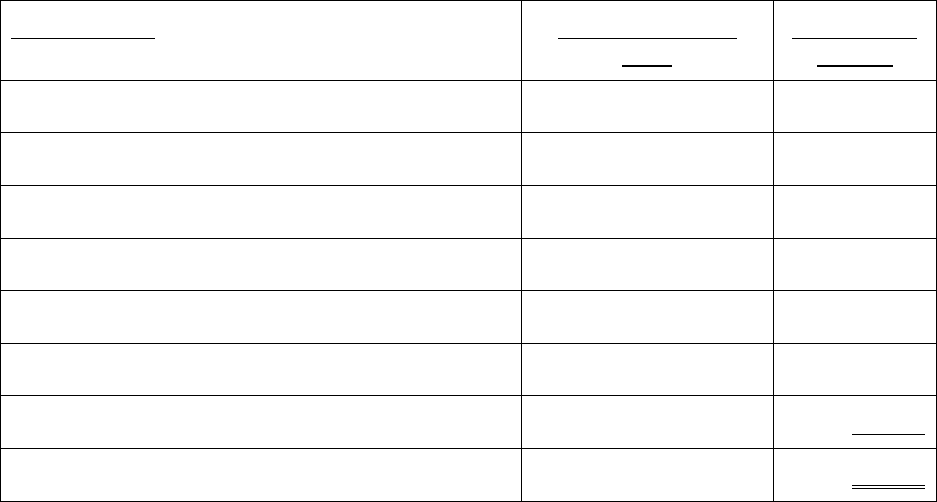
Page 55 of 147
Solution. Model X was not capitalized in accordance with CAS 404-50(b).
When constructed assets are identical with the contractor's regular product, such
assets must be allocated their full share of indirect costs, including G&A expenses and
cost of money. Assuming that G&A expenses, production overhead cost of money,
and G&A expense cost of money rate for the year are 10%, 10% and 1% respectively,
the asset should have been capitalized at $42,180, computed as follows:
Cost Element Indirect Expense
Rate
Assignment
of Cost
Production Labor $5,000
Production Overhead (150%) 7,500
Cost of Money related to Production Overhead (10%) 500
Materials 25,000
Subtotal 38,000
G&A Expense (10%) 3,800
Cost of Money related to G&A Expense (1%) 380
Total cost to be capitalized $42,180
g. Problem. Contractor A acquires Contractor B and accounts for the business
combination using the purchase method of accounting. Prior to the business
combination, the net book value of Contractor B’s assets was $10.5 million. Contractor
B’s assets generated depreciation expense and cost of money charges that were
allocated to Government contracts negotiated on the basis of cost in its most recent
cost accounting period. For GAAP purposes, Contractor A recorded the assets at their
fair market value of $18 million. The revised CAS 404 applies to the business
combination.
Solution. The provisions of the amended CAS 404-50(d)(1) would apply to the
business combination because the seller’s (Contractor B’s) assets generated
depreciation or cost of money charges that were allocated to Government contracts
negotiated on the basis of cost in its most recent cost accounting period. For CAS
purposes, Contractor A would capitalize the acquired assets at $10.5 million, the net
book value of the assets in Contractor B’s accounting records. The $10.5 million would
be used as the basis of Contractor A’s depreciation expense, cost of money, and asset
values used in the CAS 403 three-factor formula. The $7.5 million difference between
the net book value and fair market value would not be questioned because the costs
were not “measured” for CAS purposes. Consequently, any depreciation related to the
$7.5 million would not be included in Contractor A’s total cost input G&A base.

Page 56 of 147
h. Problem. Same facts as Problem g. above, except that Contractor B has not
performed Government contracts for several years and consequently, its assets did not
generate depreciation expense or cost of money charges that were allocated to
Government contracts negotiated on the basis of cost, in its most recent cost
accounting period.
Solution. The provisions of the amended CAS 404-50(d)(2) would apply to the
business combination because the seller’s (Contractor B’s) assets did not generate
depreciation expense or cost of money charges on Government contracts in its most
recent cost accounting period. For CAS purposes, Contractor A would capitalize the
acquired assets at $18 million, the fair market value of Contractor B’s assets.
However, for contracts awarded prior to April 24, 1998, costs resulting from the $7.5
million fair market value in excess of the net book value are unallowable in accordance
with the provisions of FAR 31.205-52. Consequently, the allowable depreciation and
cost of money charges would be based on the $10.5 million. The asset values used for
the CAS 403 three-factor formula would be the CAS 404 measured amount of $18
million. The unallowable $7.5 million would be included in any of Contractor A’s
allocation bases which normally include such costs, e.g., the total cost input G&A base,
because the CAS 404 measured cost is the fair market value of $18 million, even
though the FAR 31.205-52 allowable ceiling amount is based on the asset value of
$10.5 million. For contracts awarded on or after April 24, 1998, the allowable
depreciation and cost of money would be based on $18 million in accordance with the
revised FAR 31.205-52.
8-404.4 Illustrations - Applicability Date of Amended CAS 404/409,
Effective April 15, 1996 **
The following illustrations are intended to demonstrate the applicability date of
the amended CAS 404/409, effective April 15, 1996.
a. Situation. Contractor A uses a calendar year as its accounting period and
receives its “first” CAS-covered contract on May 20, 1996, after the April 15, 1996
effective date of the revised CAS 404/409. Contractor A completes a business
combination using the “purchase method” of accounting on February 15, 1997.
Applicability Date. The applicability date of the revised CAS 404 and 409
would be January 1, 1997, the beginning of Contractor A’s next full cost accounting
period beginning after receipt of a contract to which the revised CAS 404 and 409 is
applicable. Assets acquired in the business combination would be subject to the
revised CAS 404 and 409 because the combination takes place after the applicability
date of the revised CAS 404/409.
b. Situation. Same facts as a. above, but Contractor A completes the business
combination on June 15, 1996.
Applicability Date. As explained in a. above, the applicability date of the
revised CAS 404/409 is January 1, 1997. Accordingly, the business combination
would not be subject to the revised CAS 404/409 because the combination was

Page 57 of 147
completed prior to the applicability date.
c. Situation. Contractor B uses a cost accounting period of July 1 - June 30
and receives its “first” CAS-covered contract on December 10, 1996, after the April 15,
1996 effective date of the revised CAS 404/409. Contractor B completes a business
combination using the “purchase method” of accounting on January 30, 1997.
Applicability Date. The applicability date of the revised CAS 404/409 would be
July 1, 1997, the beginning of Contractor B’s next full cost accounting period after
receipt of a contract (December 10, 1996) to which the revised CAS 404/409 is
applicable. The business combination would not be subject to the revised CAS
404/409 because the combination was completed prior to the July 1, 1997 applicability
date.
d. Situation. Contractor C uses a calendar year as its cost accounting period.
Prior to 1996, Contractor C was awarded contracts subject to full CAS coverage.
During 1996, Contractor C became subject to only modified CAS coverage and
received a modified CAS-covered contract on May 15, 1996. Contract C completes a
business combination on February 15, 1997.
Applicability Date. Contractor C would not be subject to the revised CAS 404
and 409 because it did not receive a contract subject to full CAS coverage after the
April 15, 1996 effective date of the revised CAS 404 and 409. Although Contractor C
may continue to perform contracts awarded in prior accounting periods that are subject
to full CAS coverage, these contracts would not be subject to the revised CAS 404 and
409.
8-405 Cost Accounting Standard 405 - Accounting for Unallowable Costs **
The purpose of this standard is to facilitate the negotiation, audit, administration,
and settlement of contracts. It contains guidelines on:
(1) identification of costs specifically described as unallowable, at the time such
costs first become defined or authoritatively designated as unallowable, and
(2) the cost accounting treatment to be accorded such identified unallowable
costs to promote the consistent application of sound cost accounting principles
covering all incurred costs.
The standard does not govern the allowability of costs, which is a function of the
appropriate acquisition or reviewing authority. The standard was effective April 17,
1992, and is applicable to all CAS-covered contracts awarded after that date.
8-405.1 General **
a. Costs expressly unallowable or mutually agreed to be unallowable, including
costs mutually agreed to be unallowable directly associated costs, shall be identified
and excluded from any billing, claim, or proposal applicable to a Government contract.

Page 58 of 147
An expressly unallowable cost is that which is specifically named and stated to be
unallowable by law, regulation, or contract.
b. Costs specifically designated as unallowable or as directly associated
unallowable costs in a written decision of a contracting officer pursuant to contract
disputes procedures shall be identified if included or used in computing any billing,
claim, or proposal applicable to a Government contract.
c. Costs which are stated to be unallowable in a written decision issued by a
contracting officer pursuant to disputes clause procedures are required to be identified
by the contractor. This includes costs claimed by a contractor to be allowable but
stated by a contracting officer in a written decision to be unallowable because the costs
are not allocable costs of the contract under which they are being claimed. Therefore,
if the contractor fails to identify claimed costs determined by the contracting officer to
be unallowable because they are not allocable, the contractor is in noncompliance and
the procedures in CAS 405 should be followed. (See CAS Working Group Paper 77-
13.)
d. A directly associated cost is any cost which is generated solely as a result of
another incurred cost and which would not have been incurred otherwise.
e. Guidance concerning accounting for unallowable costs and directly
associated costs is also included in FAR 31.201-6.
f. The costs of any work project not contractually authorized, whether or not
related to a proposed or existing contract, shall be accounted for separately from costs
of authorized work projects.
g. All unallowable costs shall be subject to the same cost accounting principles
governing cost allocability as allowable costs.
(1) In circumstances where these unallowable costs normally would be part
of a regular indirect cost allocation base or bases, they shall remain in such base or
bases. This provision is based on the concept that ". . . the issues concerning cost
allocation and those relating to cost allowance are distinct and separate. Allowability
should not be a factor in the selection or in the determination of the content of an
allocation base used to distribute a pool of indirect costs. The appropriateness of a
particular allocation base should be determined primarily in terms of its distributive
characteristics. Any selective fragmentation of that base which eliminates given base
elements for only some of the relevant cost objectives would produce a distortion in the
resulting allocations". (See CAM 8-410.1a(2))
(2) Where directly associated costs are part of an indirect cost pool that will
be allocated over a base containing the unallowable cost with which it is associated,
they shall remain in the pool and be allocated through the regular allocation process.
According to the CASB, to do otherwise under these circumstances, could result in
double counting.

Page 59 of 147
h. The standard does not specify the nature of records required except that they
be adequate to establish and maintain visibility of identified unallowable costs
(including directly associated costs), their accounting status in terms of their allocability
to contract cost objectives, and their cost accounting treatment. Unallowable costs do
not have to be identified when, based upon considerations of materiality, the
Government and the contractor agree on an alternate method that satisfies the
purpose of the standard.
i. If noncompliances are found, the auditor must ascertain the significance of the
problem and make recommendations as outlined in CAM 8-302.7.
8-405.2 Illustrations **
The following illustrations are intended to supplement those in paragraph CAS
405-60 of the standard. They will help auditors determine if the contractor is complying
with the standard.
a. Problem. For the past several years, an auditor has questioned the
allowability of part of the costs in a contractor's business luncheon account as
entertainment expenses. The final cost questioned as negotiated by the contracting
officer for those years has always included a large portion of the amount the auditor
recommended for disapproval. In estimating the new forward pricing and provisional
billing rates, the contractor declines to adjust the estimated rates in anticipation of
similar cost questioned. The contractor rates are based on a projection of cost
incurred in prior years.
Solution. The auditor should report this noncompliance with CAS 405-40(a)
which requires the contractor to identify and exclude mutually agreed to unallowable
costs.
b. Problem. A contractor performed some unauthorized work under a cost type
prime contract. The contracting officer decided to disallow the cost (direct and indirect
cost) specifically related to the unauthorized work since the contractor did not account
for the costs separately. The contractor adjusted the accounting records and the
billings to identify the unallowable production costs. However, in calculating the G&A
total cost input base, the contractor excluded the unallowable contract cost. It stated
that the incurred cost for unauthorized work did not affect the amount of G&A expenses
incurred; consequently, the contractor should be permitted to recover its total G&A
expense pool.
Solution. The auditor should report this to the contracting officer as
noncompliance with CAS 405-40(d) and (e). CAS 405-40(d) requires unauthorized
work to be accounted for in a manner which permits ready separation from the costs of
authorized work projects while CAS 405-40(e) requires unallowable costs which would
normally be part of a regular indirect cost allocation base to remain in such a base.

Page 60 of 147
c. Problem. The contractor's established practice is to include overtime
premium applicable to direct labor in overhead. The contractor allocates total
overhead to total direct labor. The contractor performs, and separately accounts for,
certain direct labor associated with an unauthorized work project within a Government
contract. Both the unauthorized and authorized projects under the contract required
overtime work. The contractor computes the overhead rate applicable to final billing
under the contract by including overtime premium applicable to all work projects in the
overhead pool and direct labor applicable to all work projects in the base.
Solution. The contractor complies with CAS 405-40(d) since it separately
accounts for costs of unauthorized and authorized work projects. Also, the contractor's
overhead rate computation complies with CAS 405-40(e) which states,
"Where a directly associated cost (overtime premium, in this
illustration) is part of a category of costs normally included in an
indirect cost pool that will be allocated over a base containing the
unallowable cost with which it is associated, such a directly
associated cost shall be retained in the indirect cost pool and be
allocated through the regular allocation process”.
8-406 Cost Accounting Standard 406 - Cost Accounting Period **
The purpose of this standard is to provide criteria for selecting the time periods to
be used as cost accounting periods for contract cost estimating, accumulating, and
reporting. It will reduce the effects of variations in the flow of costs within each cost
accounting period. It will also enhance objectivity, consistency, and verifiability and
promote uniformity and comparability in contract cost measurements. The standard
was effective April 17, 1992 and must be applied in the next fiscal year after receipt of
a CAS-covered contract.
8-406.1 General **
a. The cost accounting period used by a contractor must be either (1) its fiscal
year or (2) a fixed annual period other than its fiscal year if agreed to by the
Government. Where a contractor's cost accounting period is different from the
reporting period used for Federal income tax reporting purposes, the latter may be
used for such reporting. All rates used for estimating, accumulating, and reporting
(including public vouchers and progress payment billings) must be based on the
contractor cost accounting period.
b. A transitional cost accounting period other than a year shall be used
whenever a change of fiscal year occurs. It may be a period more or less than a year,
but not more than 15 months.

Page 61 of 147
c. Costs of an indirect function which exist for only a part of a cost accounting
period may be allocated to cost objectives of that same part of the period. However,
such cost must be material, accumulated in a separate indirect cost pool, and allocated
on the basis of an appropriate direct measure of the activity or output of the function
during that part of the period.
d. The same cost accounting period shall be used for accumulating costs in
an indirect cost pool as for establishing its allocation base. However, in the prefatory
comments the Cost Accounting Standards Board stated that although as a matter of
principle it does not agree that mismatched periods are proper, it recognizes the value
of appropriate expedients where cost allocations are not expected to be materially
affected. Therefore, the standard provides for the use of a different period for
establishing an allocation base when agreed-to by the parties if the:
(1) practice is necessary to obtain significant administrative convenience,
(2) practice is consistently followed by the contractor,
(3) annual period used is representative of the activity of the cost accounting
period for which the indirect costs to be allocated are accumulated, and
(4) practice can reasonably be expected to provide a distribution to cost
objectives of the cost accounting period not materially different from that which
otherwise would be obtained.
e. Contractors shall follow consistent practices in selecting the cost accounting
period or periods in which any types of expense and any types of adjustment to
expense (including prior period adjustments) are accumulated and allocated.
f. Indirect cost allocation rates, based on estimates, which are used for the
purpose of expediting the closing of contracts which are terminated or completed prior
to the end of a cost accounting period need not be those finally determined or
negotiated for that cost accounting period (see 6-711.1 and 6-711.2). They shall,
however, be developed to represent a full cost accounting period, except as provided
in c. above.
g. If noncompliances are found, the auditor must ascertain their significance and
make the appropriate recommendations as outlined in 8-302.7.
8-406.2 Restructuring Costs **
a. The Cost Accounting Standards Board promulgated an interpretation at CAS
406-61 that addresses the assignment of restructuring costs to accounting periods.
According to the interpretation, it clarifies whether restructuring costs are to be treated
as an expense of the current period or as a deferred charge that is subsequently
amortized over future periods. CAS 406-61, which was issued on June 6, 1997, is
applicable to contractor restructuring costs paid or approved on or after August 15,
1994.

Page 62 of 147
b. CAS 406-61(e) provides that restructuring costs should be accounted for as a
deferred charge unless the contractor proposes, and the contracting officer agrees, to
expense the costs for a specific event in a current accounting period. Deferred
restructuring costs should be amortized over the same period of time that benefits of
restructuring are expected to accrue. However, CAS 406-61(h) limits the amortization
period to no more than 5 years. See Selected Areas of Cost Guidebook, Chapter 63
for further guidance.
8-407 Cost Accounting Standard 407 - Use of Standard Costs for Direct
Material and Direct Labor **
a. The purpose of this standard is to provide criteria:
(1) under which standard costs may be used for estimating accumulating, and
reporting costs of direct material and direct labor, and
(2) relating to the establishment of standards, accumulation of standard costs,
and accumulation and disposition of variances from standard costs.
The standard was effective April 17, 1992 and must be followed in the next fiscal
year after the award of a CAS-covered contract.
b. The standard does not cover standards used for overhead, service centers, nor
pre-established measures used solely for estimating.
c. Using the standard for Government contract costing is the contractor's option.
Contractors are not required to establish standard cost accounting systems or use
established standard cost accounting systems, intended for management purposes, for
costing Government work. However, they are required to follow the provisions of the
standard if they choose to cost Government contracts through a standard cost
accounting system.
8-407.1 General **
Use of a standard cost accounting system to cost Government contracts is
permitted only when it meets the following criteria:
a. The standard costs must be entered into the books of account. However,
properly computed variances may be allocated by memorandum worksheet
adjustments rather than entered in the books of account.
b. The standard costs and related variances must be appropriately accounted
for at the level of the production unit. A production unit is defined as "A grouping of
activities which either uses homogeneous inputs of direct material and direct labor or
yields homogeneous outputs such that the costs or statistics related to these
homogeneous inputs or outputs are appropriate as bases for allocating variances”.
This concept of homogeneity should permit contractors a degree of flexibility in setting
and revising standards on the basis of individual needs and circumstances and still

Page 63 of 147
provide for the proper cost assignment of variances. Under this concept, a single
product manufacturer would be permitted to have one labor variance account for the
entire plant, while a multiproduct manufacturer would be required to have a variance
account for each product line and/or for the various common part sub-product lines.
c. The practices with respect to the setting and revising of standards, use of
standard costs, and disposition of variances must be stated in writing and consistently
followed. The written statement of practices shall include bases and criteria used in
setting and revising standards; the period during which standards are to remain
effective; the level, such as ideal or realistic, at which material-quantity standards and
labor-time standards are set; and conditions, such as those expected to prevail at the
beginning of a period, which material-price standards and labor-rate standards are
designed to reflect.
d. If noncompliances are found, the auditor must ascertain their significance and
make the appropriate recommendations as outlined in 8-302.7.
8-407.2 Illustrations **
The following illustrations supplement those in paragraph 407-60 of the
standard. They are to be used as a guide in determining whether a contractor's
practices comply with the provisions of the standard.
a. Problem. A contractor who manufactures radios of various configurations has
established labor-rate standards and variance accounts by department; i.e., fabrication,
minor assembly, final assembly, and test. The functions performed within each
department are similar, the employees involved are interchangeable, and the inputs of
direct material are homogeneous. Each variance account is distributed annually on the
basis of the department's labor dollars. The contractor's practices are stated in writing,
consistently followed, and the standard costs are entered into the books of account.
Solution. The contractor's practice complies with the standard because it meets
the following requirements.
(1) The practices are written, entered into the books, and consistently
followed (CAS 407-40(a) and (c)).
(2) The labor-rate standards cover employees performing similar functions
within each category, and the employees are interchangeable with respect to the
functions performed (CAS 407-50(a)(3)).
(3) Each department qualifies as a production unit because:
(a) each is a grouping of activities which use homogeneous inputs of
direct material and direct labor, in this case labor with similar skills and efforts, and
(b) the direct labor costs (homogeneous inputs) are an appropriate basis
for allocating variances (CAS 407-30(a)(7)).
Page 64 of 147
NOTE: Since the employees are interchangeable and efforts performed on
the radios are similar, the allocation on the basis of direct labor dollars will result in a
reasonably valid assignment of the labor rate variances (differences between actual
and standard rates) among the radio configurations (units of output).
(4) Standard cost and related variances are appropriately accounted for at
the level of the production unit (CAS 407-40(b) and 407-50(c)).
(5) The variances are allocated to cost objectives annually on the basis of
labor cost at standard (CAS 407-50(d)(1)).
NOTE: CAS 407-50(a)(2) states, ". . . where only either the labor rate or labor
time is set at standard, with the other component stated at actual, the result of the
multiplication shall be treated as labor cost at standard”.
b. Problem. Another contractor who manufactures the same general types of
radios having various configurations has established labor-time standards by
department; i.e., fabrication, assembly, final assembly, and test. The functions
performed within each department are not materially disparate except for the
fabrication and testing of A and D radio configurations. The functions required for the
A and D configurations differ significantly from the others in terms of operations and
complexity (complicated circuitry, finer tolerances, more detailed wiring, etc.). The
employees involved are interchangeable, and the inputs of direct material are
homogeneous. The labor hours required for efforts performed within the departments
for each configuration of the radios differ; however, this has been recognized in
establishing the standards for each configuration. The labor-time variances (difference
between total department standard hours and total department actual hours) are
accumulated by department and distributed annually to each configuration within each
department on the basis of the department's direct labor dollars (standard labor hours
at actual rates). The contractor's practices are stated in writing and consistently
followed and standard cost is entered into the books of account.
Solution. The contractor's practice as applicable to the fabrication and testing
departments does not comply with the standard. These departments do not qualify as
production units because direct labor dollars are not an appropriate base for allocating
the labor-time variance to all radios on a pro rata basis since functions performed on
the A and D radios are significantly disparate from the functions performed on the other
radios. The standard's definition of production unit includes the requirement that, “. . .
the costs or statistics relating to these homogeneous inputs or outputs are appropriate
as basis for allocating variances" (CAS 407-30(b)(7)). One course of corrective action
would be to subdivide the fabrication and testing departments in a manner which would
permit separate accounting for the labor cost variances applicable to A and D
configurations separate from the other configurations. This correction would result in
establishing separate bases and would then be appropriate for allocating the separate
variance accounts.

Page 65 of 147
c. Problem. In a current proposal, a contractor with a standard cost system
prices the bill of materials with quotations rather than with its material price standards.
The contractor's written statement of practices, prepared to comply with paragraph
407-50(a)(1), states that material price standards are revised effective 1 January each
year and remain in effect until the end of the calendar year. The proposed contract will
be performed in the current calendar year.
Solution. The use of quotations to price the bill of materials violates CAS 401.
It is inconsistent with the practice of measuring direct material cost by standards and
variances. The bill of materials should be priced with the material price standards
currently in effect. The amount of material price variances that will be allocated to the
contract from production units should be estimated separately. [Note: There could be
significant difference between the amount of material cost estimated with quotations
and the amount estimated by standards and variances. A difference would result, for
example, if quotations are for the quantities required for the proposed contract and
standards are based on economic order quantities for all of the contractor's business.]
d. Problem. Same as c., with the exception that the proposed contract will be
performed in the next calendar year. Material price standards have not been
established for that year.
Solution. The use of quotations would be acceptable provided they are the
basis for estimates of next year's material price standards.
8-408 Cost Accounting Standard 408 - Accounting for Costs of Compensated
Personal Absence **
The purpose of this standard is to establish criteria for measuring and allocating the
costs of compensated personal absences to final cost objectives. These costs include
compensation paid by contractors to their employees for such benefits as vacation,
sick leave, holiday, military leave, etc. The standard was effective April 17, 1992. It
must be followed in the next fiscal year after receiving a CAS-covered contract.
8-408.1 General **
a. The provisions of the standard require that the costs of compensated
personal absence be assigned to the cost accounting period in which entitlement is
earned in accordance with the contractor's plan or custom. The standard defines
compensated personal absence as:
"any absence from work for reasons such as illness, vacation,
holidays, jury duty, military training, or personal activities, for which
an employer pays compensation directly to an employee”.
Additionally, it defines entitlement as "an employee's right, whether conditional
or unconditional to receive a determinable amount of compensated personal absence,
or pay in lieu thereof”.
Page 66 of 147
These conditions required many contractors, which had previously recorded
such costs when paid, to revise their cost accounting practices to accrue the costs over
the period during which the qualifying service was performed.
b. Entitlement is recognized on the accrual basis only in the cost accounting
period in which there arises a liability to pay compensation in the event of layoff or
other non-disciplinary termination of employment.
c. The standard supplements these requirements with the following clarifying
comments:
(1) If the employer's plan or custom provides that a new employee must
complete a probationary period before the employer is liable to pay the employee for
compensated personal absence, such service may be treated as creating entitlement,
provided the contractor does so consistently.
(2) If the employer's plan or custom provides that entitlement is to be
determined on the first calendar day or the first business day of a cost accounting
period, entitlement will be considered earned in the preceding cost accounting period.
d. When there is no liability for payment of unused entitlement on layoff, such
costs will be considered to be earned in the period in which paid. In this case, the
accrual method is not permitted.
e. Each plan or custom must be evaluated individually to determine when
entitlement is earned. If a plan or custom is changed, a new determination of
entitlement must also be made. In evaluating each individual plan, the auditor will
make use of the contractor's written policies and procedures and any prior
examinations included in the FAO permanent files. However, there may be instances,
particularly at smaller contractor locations, where written policies and procedures do
not exist. In these circumstances, the auditor will evaluate the "custom" of the
employer for paying compensation for personal absences.
f. Various contractor sources may provide the needed information for
determining entitlement. Examples include personnel records and memoranda,
corporate minutes relating to costs of personal absences, financial statements and
accounts relating to compensation for personal absence, and the appropriate journal
entries supporting the books of account.
g. The liability to be accrued is the total amount the contractor is obligated to
pay for each plan in the event of layoff, notwithstanding that the employee may forfeit
some or all of the entitlement if she or he were to resign voluntarily. The liability will be
adjusted for anticipated non-utilization, if it is expected to be material.
(1) The use of either current wage rates or anticipated wage rates at the time
of payment is permitted provided such rates are applied consistently.

Page 67 of 147
(2) The standard also permits the option of calculating the accrued liability
either on an individual employee basis or on a total plan basis. A contractor choosing
to estimate the total cost of all employees in the plan may use sample data,
experience, etc. The auditor should evaluate the data used to assure that the classes
and types of employees included are representative of the employee group during the
period for which the liability is being accrued.
h. As noted previously, many contractors record costs of personal absences
only when paid, but under the standard they will now be required to accrue such costs.
Therefore, in the year of conversion, two years' expenses are recorded - the costs paid
during the year and the accrual for costs earned during the year but to be paid in a
future year. To prevent a double charge to Government contracts, the standard
requires contractors to defer the initial accrual through the use of a suspense account.
Whenever the balance in the suspense account at the beginning of the cost accounting
period exceeds the contractor's corresponding liability for compensated absence at the
end of the same cost accounting period, the contractor is permitted to reduce the
suspense account until it is equal to the liability. The amount by which the suspense
account is so reduced becomes an additional cost of compensated personal absence
for that cost accounting period.
i. There may also be instances where the contractor's practice is to accrue only
a portion of the estimated liability required by the standard. In such cases, the
contractor must revise its cost accounting practices to accrue the balance of the
liability, as required by the standard. The amount of the additional accrual must be
placed in a suspense account, as described above. In such cases, it should also be
noted that, in comparing the amount in suspense to the year-end liability, only that part
of the liability which corresponds to the suspense account, i.e., the liability for benefits
not recognized under the previous cost accounting practice, should be used.
j. If a plan or custom is changed or a new plan or custom is adopted by the
employer, an initial or additional accrual may also be required. This accrual is also to
be placed in suspense. The suspense amount to be charged in each cost accounting
period will be computed as described above.
k. The costs of personal absence must be allocated among cost objectives on
an annualized basis, except as permitted by the provisions of CAS 406 - Cost
Accounting Period. However, the allocation rate may be revised during a cost
accounting period based on revised estimates of period totals.
l. If noncompliances are found, the auditor must ascertain their significance and
make appropriate recommendations as outlined in 8-302.7.
8-408.2 Illustrations **
The following illustrations are intended to supplement those in paragraph 408-60
of the standard. They are to be used as a guide in determining whether a contractor's
practices comply with the provisions of the standard.
Page 68 of 147
a. Problem. A contractor has a program whereby an employee on reaching a
certain level within the management structure becomes entitled to a 3-month
sabbatical vacation with pay on completion of five years of service. No entitlement to
the sabbatical vests in the employee until it is actually taken. If the employee were to
be terminated prior to the completion of five years, she or he would not be paid. The
contractor becomes subject to CAS 408 and wishes to accrue the cost of the
sabbatical vacation ratably over the 5-year eligibility period.
Solution. This contractor may not accrue the cost of the sabbatical vacation
since its present policy does not meet the criteria for accrual required by CAS 408-50
(b)(1). Under this provision, entitlement is recognized on the accrual basis in the same
cost accounting period in which the employer becomes liable to pay compensation in
the event of layoff (vested). However, under this contractor's policy, the employee
would not be paid if terminated prior to the completion of 5 years. In this case, the
contractor would be subject to the provisions of CAS 408-50(b)(3) which require that
when no liability exists for the payment of unused entitlement on layoff, the cost of the
compensated personal absence is to be recorded in the cost accounting period in
which the leave is taken and/or paid. If the contractor changed its present policy to
provide for a pro rata vesting (that is, payment on a pro rata basis in the event of
termination) over the 5-year eligibility period, then the accrual for the sabbatical
vacation would be acceptable.
b. Problem. The contractor has a vacation plan which provides that an
employee who has been employed at least one year at December 31 becomes entitled
to 80 hours of vacation, starting no earlier than the following May 1, provided the
individual is still employed at that time. If the employee were to be laid off prior to May
1, 1988, he or she would be paid on May 1, 1988 for the vacation earned as of
December 31, 1987. If the employee were still in layoff status as of May 1, 1989, she
or he would then be paid for any vacation earned between January 1, 1988 and the
date of layoff. However, if the employee were to quit voluntarily before May 1, 1988,
he or she would forfeit the right to vacation pay. The contractor's fiscal year ends
March 31, 1988 under CAS 408 to reflect its liability for vacation pay.
Solution. CAS 408-40(a) requires that the cost of vacation pay be assigned to
the cost accounting period or periods in which the entitlement was earned. In this
case, vacation was earned during the annual period ending on December 31, 1987.
Although retention on the payroll or reemployment status is required to actually receive
the vacation at May 1, 1988, the estimated vacation liability amount has already been
determined by the preceding December 31. In addition, CAS 408-50(b)(1) establishes
the liability to be recognized as that amount of vacation pay which would be payable on
layoff, even though some employees may voluntarily terminate and forfeit their
entitlement. Therefore, the contractor, in determining its liability at March 31, 1988,
should include both the amount earned for service between April 1, 1987 and
December 31, 1987, and the amount earned for service between January 1, 1988 and
March 31, 1988. This liability should be reduced for anticipated forfeitures, if material,
as required by CAS 408-50(c)(2). It should be noted that in the fiscal year ended
March 31, 1987, if this was the contractor's initial compliance with the standard, the
Page 69 of 147
contractor would have been required under CAS 408-50(d)(1) and (3) to place in
suspense the excess of any accrual required by the standard as of March 31, 1987
over the amount it would have accrued under the previous accounting method and
amortize such suspense account in accordance with the terms of the standard.
c. Problem. The following is an example of how to use the suspense account in
a partial accrual situation: Company A has a union agreement which requires it to pay
hourly employees for unused vacation on layoff. The company follows a similar
custom with salaried employees, although, it is not required to do so by any written
agreement. Company A's practice has been to accrue the cost of the vested vacation
for the hourly employees but to recognize the cost of salaried vacations only at the time
of payment. Company A must comply with CAS 408 beginning on January 1, 1986
and must revise its cost accounting practice accordingly.
Solution. The total vacation cost determination is shown below in the form
illustrated in the standard, followed by the same calculation in columnar form, as
follows:

Page 70 of 147
Format Used in CAS 408-60
Period Hourly
Employees
(‘000)
Salaried
Employees
(‘000)
Total
Employees
(‘000)
1986 beginning liability:
With standard $ 500 $ 100 $ 600
Without standard 500 500
Amount to be held in suspense
(CAS 408-50(d)(1))
0 100 100
1986 ending liability 400 80 480
Plus paid in 1986 475 95 570
Subtotal 875 175 1,050
Less 1986 beginning liability 500 100 600
1986 vacation cost, basic amount 375 75 450
Amount in suspense at beginning of
1986
0 100 100
Less 1986 ending liability 0 80 80
Suspense to be written off in 1986:
Additional 1986 vacation cost
(CAS 408-50(d)(3))
0 20 20
1986 basic vacation cost 375 75 450
Plus 1986 write-off of suspense
(CAS 408-50(d)(3))
0 20 20
1986 total vacation cost $ 375 $ 95 $ 470

Page 71 of 147
Columnar Format
Vacation
Liability
(000)
Vacation
Cost
(000)
Cash
(000)
Suspense
Account
(000)
Ref.
Note
Beginning Liability
without standard
$ 500 a
Suspense account 100 $100 b
Beginning liability with
standard
600 100 c
1986 earned vacation 450 450 d
1986 vacation pay 570 570 e
Subtotal $ 480 $ 450 $ 570 $ 100 b
Adjust suspense
account
20 20 g
Balances, 12/31/86 $ 480 $ 470 $ 570 $ 80 f
Notes to Columnar Format
(a) Represents the beginning liability amount accrued for the hourly employees
under the contractor's previous method.
(b) Represents the setup of the suspense amount for the increase in vacation
liability for salaried vacations as required by the standard.
(c) Represents the increase in liability for the total vacation cost earned by
employees during the cost accounting period.
(d) Represents the reduction in liability for the amount paid to employees during
the cost accounting period.
(e) Represents the ending liability amount for the cost accounting period as well
as other account balances resulting from the transactions discussed above. The total
ending liability of $480 thousand is composed of $400 thousand for hourly vacations
and $80 thousand for salaried vacations.
(f) The amount in suspense ($100 thousand as discussed in b. above) should be
compared with that portion of the vacation liability at the end of the year, which
represents the same type of expense charged to suspense account ($80 thousand for

Page 72 of 147
salaried vacations as discussed in f. above). As the amount in suspense exceeds the
ending liability, the excess ($20 thousand) will be charged to the vacation cost earned
during the year and the suspense account balance will be reduced by the amount of
the excess.
This illustration presented one acceptable method for comparing the amount in
suspense with the liability at the end of the year. Other methods, such as specific
employee identification, may also provide a reasonable satisfaction of the standard's
requirements. The method used should achieve a comparison of like items for
authorization of the amount held in suspense.
d. Problem. A contractor has a fiscal year ending December 31. Under this
existing practice, the contractor begins to accrue for each holiday one year in advance.
For example, the anticipated cost of holiday pay for July 4, 1987 would be accrued in
12 monthly increments beginning July 1986 and extending through June 1987.
However, under the contractor's policy, entitlement for holiday pay occurs only in the
cost accounting period when the holiday is taken.
Solution. The contractor's practice does not comply with CAS 408. CAS 408-
40(a) requires that holiday pay be assigned to the cost accounting period in which it is
earned. Under the contractor's policy, entitlement occurs when the holiday is taken.
Therefore, the contractor may recognize in 1986 only the costs of holidays that
occurred in 1986. It should be noted that a contractor whose fiscal year ends on
December 31 may elect to recognize the costs of the January 1 holiday either in the year
in which it occurs or in the preceding year, provided whichever policy is adopted, it is
followed consistently.
8-409 Cost Accounting Standard 409 - Depreciation of Tangible Capital Assets
**
a. This standard provides criteria for assigning costs of tangible capital assets to
cost accounting periods and should enhance objectivity and consistency in their
allocation.
b. The initial standard was effective July 1, 1975 and must be followed for all
tangible assets acquired in the next fiscal year after receipt of a CAS-covered contract.
On February 13, 1996, the CAS Board amended CAS 409-50(j) relating to the
recapture of gains and losses on disposition of tangible capital assets that are
transferred subsequent to a business combination. The effective date of this
amendment is April 15, 1996. The amendment is applicable to contracts in the next
cost accounting period beginning after receipt of a contract that incorporates the
revised standard. Amendments to CAS 404, also effective April 15, 1996, are
discussed in 8-404.
c. The amended CAS 409, effective April 15, 1996, applies to tangible capital
assets transferred in a business combination that takes place after the applicability
date (see 8-404-4 for illustrations of the amended CAS 404 and 409 applicability date).

Page 73 of 147
d. The standard does not apply where compensation for tangible capital asset
usage is based on use rates or allowances as provided by other appropriate Federal
acquisition regulations such as those governing educational institutions, tribal
governments, or construction equipment rates.
8-409.1 General **
a. Estimated residual values must be determined for all tangible capital assets
or groups of assets. The residual values must be deducted from the capitalized value
in computing the depreciable cost base, except where; (1) the estimated residual value
of tangible personal property does not exceed 10 percent of the capitalized cost or (2)
either the declining balance method or class-life-asset-range system is used.
b. The standard prohibits the depreciation of assets or asset groups below their
residual value, if the residual value is greater than ten percent of the capitalized cost of
the asset, or if the asset is real property. For personal property that has a residual
value less than or equal to ten percent of the capitalized cost of the asset, the asset or
asset group may be depreciated below residual value if the residual value is
immaterial. Materiality should be determined based on the general criteria contained in
48 CFR 9903.305, Materiality. The auditor should test asset values identified on
contractor depreciation schedules or tax returns to ensure that residual values are
properly deducted from capitalized costs.
c. The estimated service life of the tangible capital asset, over which the
depreciated cost is assigned, must reasonably approximate the actual period of
usefulness to its current owner, considering such factors as obsolescence and required
quality and quantity of output. The estimated service life can exclude standby or
incidental use periods, provided adequate records substantiate the withdrawal of such
assets from active use. Expected periods of useful life must be based on recorded
past experience, as modified for expected changes in operating practices,
obsolescence, or quantity of products produced. However, the contractor must justify
estimated service lives which deviate from the previously experienced lives. (See CAS
Working Group Paper 78-22.)
(1) The standard requires the contractor to maintain adequate records which
identify the age of the asset or asset group at retirement or withdrawal from active use.
The record should contain such information as asset acquisition/disposition dates, date
asset was withdrawn from active service, and any other factors that directly influence
asset lives. The record need not be maintained solely for fixed asset accounting; it
may be a record used for such other purposes as property insurance, income/property
taxes, property control, or maintenance.
(2) If supporting records are not available on the date the contractor must
first comply with the standard, the estimated service lives should be those used for
financial accounting. However, the required supporting records must be developed by
the end of the second fiscal year after that date and used as a basis for estimated
service lives on assets subsequently acquired.

Page 74 of 147
(3) When a new asset is acquired for which the contractor has no available
data or prior experience, the estimated service life must be based on projection of the
expected useful life. CAS 409-50(e)(4) states the projection cannot be less than the
mid-range established for asset guideline classes under the IRS Revenue Procedures
in effect the year the asset is acquired. For property placed in service after 1986, IRS
Revenue Procedure 87-56, as modified by Revenue Procedure 88-22, does not
provide a depreciation range for asset guideline classes, it provides the applicable
class lives and specific recovery periods. The recovery period used will depend on the
depreciation system (General Depreciation System (GDS) or Alternate Depreciation
System (ADS)) selected. The depreciation method (e.g., declining balance or straight
line) selected by the contractor will determine the depreciation system used and the
resulting recovery period. Information in IRS Revenue Procedure 87-56, as modified
by Revenue Procedure 88-22 is available in IRS Publication 946, How to Depreciate
Property. IRS Publication 946 will identify the depreciation method(s) that may be
used for each depreciation system. For example, declining balance method can only
be used over a GDS recovery period, while the straight line method may be used over
a GDS or ADS recovery period. The estimated service lives provided in these IRS
documents will be used only until the required records are available. All IRS
publications can be found on the IRS website.
(4) In special circumstances, contracting parties may negotiate a shorter
estimated service life if it can be reasonably projected.
d. The contractor may select any appropriate method of depreciation which
reflects the pattern of consumption of services over the life of the asset. For example,
an accelerated method is appropriate where the expected consumption of services is
greatest in the early years of the asset life. The method used for financial accounting
must be used for contract costing unless it does not reasonably reflect expected
consumption or is unacceptable for Federal income tax purposes.
(1) Financial accounting methods are expected to approximate the pattern of
consumption of services. Therefore, if the contractor continues to use previous
methods found to be acceptable to the Government on similar assets for financial
accounting, no additional support of existing method will ordinarily be required. The
auditor, however, is responsible for ensuring that the depreciation methods generally
reflect the pattern of consumption of services. Consequently, the auditor's compliance
audit should include limited tests of existing usage records to determine that no gross
distortions in depreciation costs result from these depreciation methods. If a gross
distortion is indicated as a result of that limited test, the testing should be expanded to
determine whether the distortion is material enough to warrant a change in the
contractor's depreciation method.
(2) A depreciation method selected for newly acquired assets, which differs
from the depreciation method currently used for like assets in similar circumstances,
must be supported by the contractor's projection of expected consumption of services.

Page 75 of 147
e. Depreciation costs are generally allocated as indirect costs to the cost
objectives for which the assets provide service. They may be charged directly to cost
objectives at average rates only if the charges are based on usage and the costs of all
like assets used for similar purposes are also charged directly. Depreciation costs for
assets included in service centers, where significant, must be charged to the service
center.
f. Changes to estimated service lives, residual values, or consumption of
services may be required as a result of significantly changed circumstances. Any
resulting adjustment to the undepreciated cost will be assigned only to the cost
accounting period in which the change occurs and to subsequent periods. No
retroactive adjustments will be made.
g. The standard outlines the following accounting treatment for gains or losses
associated with the disposition of tangible capital assets. Note that an impairment loss
under FASB ASC Topic 360-10-35-17, Property, Plant, and Equipment, Overall,
Subsequent Measurement is recognized only upon disposal of the impaired asset (see
Selected Areas of Cost Guidebook, Chapter 19).
(1) Where the asset is disposed of without an exchange, the gain or loss is
generally treated as an adjustment to the appropriate indirect expense pool in the cost
accounting period in which the disposition occurs. However, the auditor should be
aware that, in such circumstances, the standard limits the gain to be recognized for
contract costing purposes to the difference between the asset's original acquisition cost
and its net book value.
(2) Where an asset is exchanged for like property, two options are available
to the contractor: either the gain or loss can be recognized as discussed above, or the
depreciable cost base of the new asset may be adjusted for the entire gain or loss.
(3) Where an asset disposition results from an involuntary conversion and
the asset is replaced by a similar asset, the same two options as described above for
exchanges of like property are available to the contractor.
(4) Where assets are grouped, gains or losses are not recognized. Instead
they are processed through the accumulated depreciation account.
(5) Assets dispositioned in a business combination meeting the criteria in
CAS 404-50(d)(1). The revised CAS 409, effective April 15, 1996, added a new
subparagraph CAS 409-50(j)(5) to make it clear that the CAS 409-50(j) provision
dealing with the recapture of gains and losses on disposition of tangible capital assets
should not apply when assets are transferred subsequent to a business combination
meeting the criteria in CAS 404-50(d)(1). The revised CAS 409-50(j)(5) stipulates that
the provisions of CAS 409-50(j) do not apply to business combinations and that the
carrying values of tangible capital assets acquired subsequent to a business
combination are to be established by the acquiring company in accordance with the
provisions of CAS 404-50(d)(1). Consequently, since CAS 404-50(d)(1) does not

Page 76 of 147
recognize an increase or decrease in the asset values as a result of a business
combination, any gain or loss realized by the seller on disposition of assets as a result
of the business combination is also not recognized. Auditors at the seller location
should be alert for contractors claiming a loss on disposition of assets as a result of a
business combination meeting the provisions of CAS 404-50(d)(1) and if claimed and
determined significant, issue a CAS noncompliance report. See 8-404.2(b)(1) for
additional guidance regarding the measurement of assets acquired in a business
combination using the purchase method of accounting.
(6) Assets dispositioned in a business combination meeting the criteria in
CAS 404-50(d)(2). The April 15, 1996 revision to CAS 409-50(j)(5) does not apply to
assets dispositioned in a business combination meeting the criteria in CAS 404-
50(d)(2), i.e., the tangible capital assets acquired in the business combination did not
generate either depreciation expense or cost of money charges during the most recent
cost accounting period. Therefore, the provision on the recapture of gains and losses
would apply to the dispositioned assets. However, for contracts awarded prior to April
24, 1998, tangible capital assets meeting the requirements of CAS 404-50(d)(2) must
still comply with the requirements of FAR 31.205-16 and 31.205-52. Consequently,
although the gain or loss may be recognized for CAS purposes, no gain or loss would
be allowed per FAR. FAR 31.205-52 was revised effective April 24, 1998 (FAC 97-04),
to conform to the revised CAS 404 and 409. Therefore, a gain or loss would be
allowed for assets dispositioned in a business combination meeting the criteria in CAS
404-50 (d)(2).
h. If noncompliances are found, the auditor must ascertain their significance and
make appropriate recommendations as outlined in 8-302.7.
8-409.2 Illustrations **
The following illustrations supplement those in paragraph 409-60 of the
standard. They are to be used as a guide in determining whether a contractor's
practices comply with the standard.
a. Problem. Based on a sample of asset dispositions/withdrawals for the last
three years, the contractor now estimates 10 years for the service life for lathes. The
records in the sample supporting the 10-year life classified several machines as
"withdrawn from active use" although the machines are still on hand, in good working
condition, and physically located in the plant machine shop. Neither the property
records nor any other records reflected any change in the assets from active to inactive
status. Records reflect a comparatively low usage of these specific machines for the
past year due to a slack period.
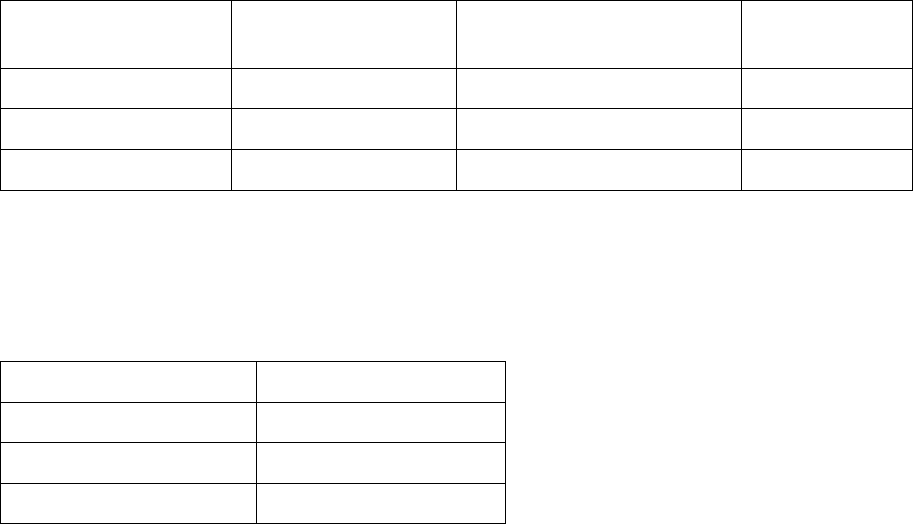
Page 77 of 147
Solution. The machines should not be classified as "Withdrawn from active use"
unless the contractor provides adequate documentation substantiating the change in
status. Machines temporarily idled for lack of work are not "withdrawn from active
service”. The contractor's written policies and procedures should define (1) the
conditions under which capital assets may be withdrawn from active use and (2) the
property records that must be prepared for processing the asset from active to inactive
status. The records should clearly support that assets "withdrawn from active service"
are in actuality intended only for standby or incidental use.
b. Problem. Contractor purchases various tangible capital assets in FY 20XX
and sells them seven years later. Information pertinent to the acquisition and sale is as
follows:
Capital Equipment Acquisition Cost Capitalized Current Net
Book Value
Sales Price
Lathe $30,000 $10,000 $32,000
Truck $5,000 $ -0- $ 100
Fork Lift $10,000 $3,000 $2,000
Depreciation expense over the seven years was allocated to manufacturing
overhead.
Solution. The contractor will allocate gains and losses to manufacturing
overhead in the year of sale as follows:
Capital Equipment (Gain)* or Loss
Lathe ($20,000)
Truck ($100)
Fork Lift $1,000
*Gain or loss is the difference between amount realized on disposition and its
undepreciated balance ($32,000 - $10,000 = $22,000); however, per CAS 409-50(j)(l),
for contract costing purposes, the gain must be limited to the difference between the
original acquisition cost of the asset and its undepreciated balance ($30,000 - $10,000
= $20,000).
c. Problem. The capitalized cost of a lathe is $50,000. The lathe is projected to
have a residual value of $4,500, which is determined to be immaterial in amount based
on the criteria in 48 CFR 9903.305, and an estimated service life of 10 years. The
contractor utilizes a straight-line depreciation method. The asset is sold in Year 11 for
$5,000.

Page 78 of 147
Solution. Because the $4,500 residual value is less than 10 percent of the
capitalized cost, the annual depreciation charges may be based on a depreciable cost
base of $50,000. In addition, since the $4,500 is immaterial, the asset is depreciated
to zero. However, since the contractor is required to provide a credit for the difference
between the sales price and the book value, a credit of $5,000 is recognized in Year
11, as shown below:
Depreciable cost base $50,000
Accumulated depreciation: 10 years @ $5,000
per year
$50,000
Net book value at end of 10th year $ -0-
Year 11: Credit for Gain on Sale of Asset (Sales
price of $5,000 less book value of zero)
$ 5,000
d. Problem. Contractor A acquires Contractor B and accounts for the business
combination using the purchase method of accounting. Prior to the business
combination, the net book value of Contractor B’s assets was $10.5 million. Contractor
B’s assets generated depreciation expense and cost of money charges that were
allocated to Government contracts negotiated on the basis of cost in its most recent
cost accounting period. The difference between the original acquisition cost of
Contractor B’s assets and its undepreciated balance is $3.0 million. For GAAP
purposes, the difference between the sales price and net book value of assets results
in a gain of $4.0 million. The revised CAS 409 applies to the business combination.
Solution. The provisions of the amended CAS 404-50(d)(1), effective April 15,
1996, would apply to the business combination because the seller’s (Contractor B’s)
assets generated depreciation or cost of money charges that were allocated to
Government contracts negotiated on the basis of cost in its most recent cost
accounting period. Therefore, the provisions of CAS 409-50(j) dealing with the
recapture of gains and losses on disposition of capital assets would not apply to the
business combination. For CAS purposes, Contractor B would not recognize the gain.
Consequently, the gain would not be reflected in Contractor B’s total cost input G&A
base because the gain was not measured for CAS purposes.
e. Problem. Same facts as Problem d. above, except that Contractor B has not
performed Government contracts for several years and consequently, its assets did not
generate depreciation expense or cost of money changes that were allocated
Government contracts negotiated on the basis of cost, in its most recent cost
accounting period.
Solution. The provisions of the amended CAS 404-50(d)(2), effective April 15,
1996, would apply to the business combination because the seller’s (Contractor B’s)
assets did not generate depreciation expense or cost of money charges on
Government contracts in its most recent cost accounting period. Therefore, the
provisions of CAS 409-50(j) dealing with the recapture of gains and losses on
disposition of capital assets would apply to the business combination. For CAS

Page 79 of 147
purposes, Contractor B would recognize the $3.0 million difference between the
original acquisition cost and the undepreciated balance and credit the appropriate
indirect cost pool(s). For contracts awarded prior to April 24, 1998, the gain would not
be recognized under FAR 31.205-16 and 31.205-52. However, for contracts awarded
on or after April 24, 1998, the gain would be recognized.
8-410 Cost Accounting Standard 410 - Allocation of Business Unit General
and Administrative Expenses to Final Cost Objectives **
a. This standard provides criteria for the allocation of general and administrative
(G&A) expenses to final cost objectives and furnishes guidelines for the type of
expense that should be included in the G&A expense pool. It also establishes that
G&A expense shall be allocated on a cost input base that represents total activity.
Contractors presently using the sales or cost of sales allocation base have the option
of changing to the cost input allocation base as soon as they become subject to the
standard or selecting the special transition method described in Appendix A of the
standard. Notably, the special transition method permits the continued use of the sales
or cost of sales base to cost those CAS-covered contracts existing on the date the
contractor is required to comply with this standard. The standard will increase the
likelihood of achieving objectivity in the allocation of expenses to final cost objectives
and comparability of cost data among contractors in similar circumstances.
b. The standard was effective April 17, 1992, and must be followed in the next
fiscal year after receipt of a CAS-covered contract to which the standard is applicable.
c. See CAS Working Group Papers 78-21 and 79-24 for guidance issued by the
CAS Working Group on CAS 410.
8-410.1 General **
a. Business Unit G&A Expense Pool
(1) The G&A expenses must be grouped in a separate indirect cost pool and
allocated only to final cost objectives. For an expense to be classified as G&A, it must
be incurred for managing and administering the whole business unit. Therefore, those
management expenses that can be more directly measured by a base other than cost
input should be removed from the G&A expense pool. For example, expenses such as
program management, procurement, subcontract administration, G&A-type expenses
incurred for another segment, etc. should not be identified as G&A expenses. They
should be the subject of a separate distribution in reasonable proportion to the benefits
received. However, immaterial expenses which are not G&A may be included in the
G&A expense pool. The G&A expense pool may be combined with other expenses
allocated to final cost objectives if (a) the base for the combined pool is appropriate for
allocating both the G&A expense pool and the other expenses, and (b) the individual
and total expenses of the G&A expense pool can be identified separately from the
other expenses.

Page 80 of 147
(2) FAR 31.203(d) requires G&A expenses be allocated to final cost
objectives through a base that contains unallowable costs. FAR 31.203(d) states that
"all items properly includable in an indirect cost base should bear a pro rata share of
indirect costs irrespective of their acceptance as Government contract costs”. The
CASB has also recognized this principle in the prefatory comments to CAS 405 (last
paragraph of comment no. 4) stating "the allowance or disallowance of these costs is
subject to the cognizant agency's cost principles”. In ASBCA Case No. 35895, Martin
Marietta Corp. challenged the Government's position that a portion of G&A expense
allocated to contracts is unallowable in the same ratio as unallowable base costs are to
total base costs allocated to a contract. The issue was resolved on December 28,
1993 by the U.S. Court of Appeals for the Federal Circuit (No. 93-1025). The Court
upheld the Government position, stating that FAR 31.203(d) is primarily an allowability
provision which does not conflict with the CAS 410 requirement that G&A be allocated
only to final cost objectives.
(3) Selling costs may be accounted for in the G&A expense pool or in a
separate pool. CAS 410 takes a permissive position. CAS 410-40(d) requires a
separate allocation of costs if the costs can be allocated to business unit cost
objectives on a beneficial or causal relationship that is best measured by a base other
than a cost input base. Therefore, if the inclusion of selling costs in the G&A pool
results in an inequitable allocation, auditors should carefully evaluate the selling
activities to determine whether selling costs should be separately allocated on a
beneficial or causal relationship by a different base. The Court in Aydin Corporation
(West) (U.S. Court of Appeals for the Federal Circuit, No. 94-1441, dated August 10,
1995) decided, reversing the ASBCA decision (ASBCA No. 42760, dated April 18,
1994) that the foreign sales commission need not be excluded from the G&A pool
based solely on its disproportionately large dollar amount. Accordingly, although the
disproportionate allocation to Government contracts may be an indication that the G&A
base is not the best measure of the beneficial or causal relationship, the
disproportionate allocation itself does not result in a noncompliance with CAS 410. If it
is determined that selling costs should be allocated over a base other than the G&A
base, CAS 418 governs the proper allocation of such costs. See Selected Areas of
Cost Guidebook, Chapter 65 for additional discussion on the allocability of selling
costs.
(4) Home office expenses allocated to a segment may or may not be
included in the segment's G&A expense pool. The standard states that allocations of
line management expenses, residual expenses, and directly allocated expenses
related to managing and administering the receiving segments are to be included in the
G&A expense pool. Separate allocations of home office centralized service functions,
staff management of specific activities of segments, and significant central payments or
accruals must be allocated to the benefiting cost objective. However, when there is no
discernible causal or beneficial relationship with any of the cost objectives, these
expenses may be included in the segment's G&A expense pool. When separate
allocations are reflected in home office cost accounting, they must be identified in the
cost transfers to the segments under CAS 403. To support that home office expenses
were allocated to the segment in compliance with CAS 403, the contractor must
Page 81 of 147
identify the allocation base and components of the expense pool. Segments that
perform both home office and operating segment functions must segregate the
expenses of the home office function. These expenses must be allocated to the
benefiting segments, including the segment performing the home office function. G&A
expenses incurred by a segment for another segment will be removed from the
incurring segment's G&A expense pool and transferred to the other segment.
(5) Any other costs that do not satisfy the definition of G&A expenses may be
included in the G&A expense pool if they were previously a part of G&A and cannot be
allocated to final cost objectives on a beneficial or causal relationship best measured
by a base other than a cost input base.
b. Business Unit G&A Allocation Base
(1) The standard requires that the cost input base used to allocate the G&A
expense pool include all significant elements of that cost input which represent the total
activity of the business unit. The cost input base selected may be total cost input,
value-added cost input, or single-element cost input. Modified bases are not permitted
unless the item is an insignificant element of the selected cost input base and its
exclusion does not invalidate the chosen base's representation of total activity. The
“insignificant element” should not be automatically equated to insignificant amounts.
An insignificant element is one that, when excluded from the base, does not alter the
base’s representation of the total activity. In the prefatory comments the term "total
activity" refers to the production of goods and services during a cost accounting period.
What is being pursued for the base is a flow of costs bearing a reasonable relationship
with the production of goods and services.
(a) While the standard says that, "A total cost input base is generally
acceptable as an appropriate measure of total activity of a business unit," other bases
may be used when they best represent "the total activity" of the business unit. The
selection of the best base involves judgments on whether inclusion of certain base
costs cause "distortions" in allocating G&A to some contracts. The specific
circumstances of the business unit shall be considered in determining which base best
represents total activity. The ASBCA, in essence, ruled that there is no preferred
allocation base to distribute G&A expenses other than the one which best represents
total activity (Ford Aerospace and Communications Corporation, Aeronutronic Division,
ASBCA Case No. 23833). The following are some examples where the value-added or
single-element base may be appropriate:
● Large subcontracts of the type that clearly contrast with
arrangements which require close supervision and participation on
the part of the prime contractor, for example, drop shipments.
These subcontracts generally do not bear the same relationship to
G&A as other cost elements. The existence of these types of
contracts as a stable part of the business may be evidence that
total cost input may not be an appropriate measure of total activity
as it may cause an inequitable amount of G&A to be allocated to

Page 82 of 147
the contract with the large subcontracts. Consideration should be
given to changing to a value-added base.
● Large amounts of Government-furnished material on some
contracts with the same type of material purchased on other
contracts. This may cause an inequitable shift of G&A to the
contract with purchased materials. Consideration should be given
to changing to a value-added base.
● Contractors whose business activity is clearly labor intensive, but
have contracts that include major purchasing and subcontracting
responsibility on a "pass-through" basis which causes significant
distortions in allocated G&A. Consideration should be given to a
value-added or single element base.
● When a contractor has demonstrated by a detailed analysis of the
G&A pool elements to individual base elements, that a certain base
element does not have significant causal or beneficial relationships
to that G&A expense. When this is found, an analysis must be
done to decide which of the three bases best measures total
activity of that business unit. One perfect base may not exist.
Purifying the G&A expense pool is the best way to minimize any
potential inequities which may surface in implementing a cost input
base which does not perfectly eliminate distortions.
(b) Interdivisional transfers may be excluded from the receiving division's
G&A base only when:
● circumstances warrant the use of a base whose constituent parts
do not include material such as a value-added or a single-element
base, or
● the interdivisional receipts are not significant. Facilities contracts
as defined in FAR 45.301 should also be included in the total cost
input base unless the provisions of CAS 410-50(j) apply.

Page 83 of 147
(c) The costs deducted from total costs to determine the value-added
base should be limited to direct material and subcontract costs. FAR 15.408, Table 15-
2, II, Cost Elements, under the heading of Materials, states "Include raw materials,
parts, components, assemblies, and services to be produced or performed by others”.
FAR 44.101 provides an authoritative definition of subcontract costs, which states
‘Subcontract,’ as used in this part, means any contract as defined in Subpart 2.1
entered into by a subcontractor to furnish supplies or services for performance of a
prime contract or a subcontract. It includes but is not limited to purchase orders, and
changes and modifications to purchase orders”. In applying this definition take care to
avoid inappropriate inclusions or exclusions from the value-added base resulting from
broad application of terminology or individual contractor account classifications. For
example, subcontract labor of the "body shop" type often supplements the normal work
force and is used interchangeably with the regular employees under the same
supervisors. This work does not fit the definition of services to be performed by other
than the contractor. Thus, it would be inappropriate to deduct these amounts from the
total costs. On the other hand, it would be appropriate to deduct the cost of
subcontracts for items such as interior decoration of aircraft even though a contractor
accounts for them as part of other direct costs.
(d) The criteria for use of a single-element cost input base are very
specific. A single-element cost input base may be used when a contractor can
demonstrate that it best represents the total activity of a business unit and produces
equitable results. Thus, a single-element base, such as direct labor dollars, may be
used when the direct labor dollars are significant and the other measures of activity are
less significant related to total activity. The contractor should periodically analyze the
single-element base to assure that it best represents total activity and produces
equitable results. When other measures of activity become significant, a single-
element base may not produce equitable results. A single-element base is
inappropriate when it is an insignificant part of the total cost of some of the final cost
objectives.
(2) Initial changes from one type of input base to another which are required
to comply with the standard would be subject to equitable adjustment. For example, a
contractor previously used a direct labor hour base for allocating G&A expense. On
the applicability date of CAS 410, the contractor changes its G&A allocation base to
total cost input because other measures of activity besides direct labor are significant
in relation to total activity. Since the base change is required in order to comply with
section 410-50(d), the contractor is entitled to an equitable adjustment. Once a G&A
base has been selected, it should not be changed unless the underlying business
activity changes. When a base change is elected, adequate notice must be given to
the CFAO.
(3) A special allocation of G&A expenses is permitted if a particular final cost
objective (e.g., contract) would receive a disproportionate allocation of G&A expenses
by using the cost input base. However, the allocation from the G&A expense pool to
the particular final cost objective must be commensurate with the benefits received.
The amount of the special allocation must also be removed from the existing G&A
Page 84 of 147
expense pool and the particular final cost objective’s base costs must be removed from
the base used to allocate the G&A pool. The 410-50(j) provision is applicable to a
particular final cost objective which is an exception to the contractor's normal operation,
rather than to classes of contracts or final cost objectives. It appears that the intent is
to use the special allocation provision in exceptional cases to resolve situations where
equitable allocation cannot be achieved by normal methods. The use of a special
allocation to a particular contract or other final cost objective is the only alternative to
the uniform allocation requirements of the standard. The standard does not permit the
use of an abated or reduced rate for certain costs (e.g., a lesser rate for subcontract
costs). Before approving a special allocation, the G&A expense pool should be
carefully evaluated to purify it of any expenses that may be allocated to cost objectives
more directly than by a cost input base. When a special allocation under CAS 410-
50(j) is used, it must be described in the contractor's Disclosure Statement. Otherwise,
the contractor would be in noncompliance for failure to follow its disclosed practices.
(4) The standard provides that work on stock or product inventory items
represents part of the productive activity of the business unit for a cost accounting
period, and therefore should receive an allocation of G&A expense. The costs of such
items must be included in the G&A allocation base for the period in which the items are
produced or worked on rather than the period in which they are issued to final cost
objectives. The cost must be included only once in computing the allocation base and
rate. The time these items are issued from inventory to final cost objective is irrelevant
for computing the G&A base and for calculating the G&A expense rate.
(a) Where it was the previous practice of the business unit to include
G&A expense as part of the product inventory, the cost of all units produced in a period
should include the G&A expenses of the cost accounting period in which the items are
produced, including those remaining in inventory at the end of the year. Since G&A
has already been applied to items in inventory, no additional G&A will be applied when
those items are issued.

Page 85 of 147
(b) If the previous practice was not to include G&A expense as part of the
cost of product inventory, the business unit must consistently use one of two methods
to cost G&A expenses to the cost of product inventory. The first method permits the
business unit to allocate G&A to the costs of items produced for stock, including those
remaining in inventory at the end of the period, using the G&A rate of the period the
items were worked on. This is the same method as allowed for business units that
costed G&A expense as part of the costs of product inventory. The second method
permits a business unit to allocate G&A to such costs using the rate of the period the
items were issued. For example, if a business unit produces 100 items for stock and
issues 50 items in period 1 and 50 items in period 2, the cost of 100 items produced
would be included in the allocation base of period 1. No costs for these items would be
included in the allocation base of period 2. However, for purposes of allocating G&A
expense to the inventory, the G&A rate of period 1 would be applied to the 50 items
issued in that period, and the G&A rate of period 2 would be applied to the 50 items
issued during that period. The CASB believed that the differences in the G&A rates
applied to the final cost objectives by using the G&A rate of the year the items are
issued rather than produced will not be material.
(c) The auditor should note that the standard only covers the treatment of
items produced for stock after the applicability date. It does not cover the treatment of
items held in inventory on the first date the contractor must apply the standard.
Therefore, items produced for stock and included in inventory on the date the standard
becomes applicable should be included in the G&A allocation base of the period in
which the items are assigned to final cost objectives.
(5) Questions have been raised as to the relationship between CAS 410 and
the methods used by contractors with parts cost accounting systems to transfer Work-
in-Process (WIP) to cost of sales. CAS 410 addresses the application of G&A expense
to WIP cost input but does not prescribe the cost methods for relieving WIP and
charging cost of sales. To comply with CAS 410, a contractor with a parts cost
accounting system must compute a fiscal year cost input G&A expense rate to allocate
G&A expenses to WIP cost input. However, the contractor may use any inventory
valuation method recognized under generally accepted accounting principles, such as
FIFO or average, to transfer costs including G&A expense from WIP to cost of sales.
c. If noncompliances are found regarding either the G&A expense pool or the
allocation base, the auditor should ascertain their significance and make appropriate
recommendations as outlined in 8-302.7.
8-410.2 Illustrations **
The following illustrations supplement those in paragraph 410-60 of the
standard. They are to be used as a guide in determining whether a contractor's
practices comply with the standard.
a. Problem. Division X excludes from its total cost input base, the cost of
intercompany transfers from Division Y.

Page 86 of 147
Solution. The intent of the standard is that all actions, which represent the total
productive activity of the segment, should be included in total cost input. The costs of
the intercompany transfers should therefore be included in the total cost input base
used to allocate G&A expenses. Division X's exclusion of the intracompany transfers
from the base does not comply with the standard.
b. Problem. Division X uses a total cost input base. In making its product there
is extensive amount of costs for ODC, material, subcontracts, consultants, and special
tooling. As these costs are all represented in approximate proportions on all of Division
X's contracts, total cost input has been considered the best measure of the division's
total business activity. The contractor is now contemplating entering a new business
area. New contracts are planned to be bid in 20X2 and may have up to 60 percent of
their value in subcontracting of the type that clearly contrasts with arrangements which
require close supervision and participation on the part of the prime contractor, for
example, drop shipments. Because of the dollar value of these contracts ($50 million)
and anticipated follow-on effort compared to Division X's normal contracts ($150
million), the G&A allocated to the new contracts on a total cost input base would far
exceed the beneficial relationships to these contracts. Division X notifies the CFAO
and the auditor at the beginning of 20X1 that they intend to change their base to value-
added. They subsequently change their Disclosure Statement to show the prospective
G&A allocation base.
Solution. Division X's criteria for base selection complies with that contained in
CAS 410, and the choice of the value-added base complies with the standard.
However, this example is only hypothetical. Auditors must exercise professional
judgment in assessing each situation individually. No two circumstances are the same.
c. Problem. Contractor Z has a number of contracts with large amounts of
subcontract costs. The contractor does not believe that the use of the regular G&A
rate for the subcontract costs is equitable because the subcontracts do not benefit from
all of the G&A pool costs in the same relationship as the other base costs. It is
therefore proposing a reduced G&A rate for the subcontract costs.
Solution. The contractor's proposal of a reduced G&A rate for the subcontract
costs is in noncompliance with the standard. The only alternative to the uniform
allocation requirements of the standard is the special allocation procedures which
pertain to particular contracts or other final cost objectives. Special allocations to
classes of contracts or to specific cost elements or types of expenses are not permitted
by the standard.
8-411 Cost Accounting Standard 411 - Accounting for Acquisition Costs of
Material **
a. This standard provides criteria for the accounting of acquisition costs of material,
provides guidance on using inventory costing methods, and improves the
measurement and assignment of costs to cost objectives.

Page 87 of 147
b. This standard does not cover accounting for the acquisition costs of tangible
capital assets or accountability for Government-furnished materials.
c. The standard was effective April 17, 1992, and must be applied to all materials
purchased or produced in the next fiscal year after receipt of the CAS-covered contract
to which the standard is applicable.
8-411.1 General **
a. The standard requires contractors to accumulate the cost of material and
allocate it to cost objectives according to written statements of accounting policies and
practices.
b. The end use of a category of material must be identified at the time of
purchase or production if the cost is to be allocated directly to a cost objective. A
category of material may be allocated directly even though the company maintains an
inventory of this material, as long as the cost objective was specifically identified and
the cost allocated at the time of purchase or production. Thus, units of a category of
material could be allocated at different costs to the same cost objective, which is by
direct allocation and issuance from inventory. The auditor should assure that the
contractor's written statements of accounting policies and practices for accumulating
and allocating costs of materials clearly set out (1) the specific conditions under which
these costs may be directly allocated to cost objectives and (2) the inventory costing
method to be used for allocating material costs issued from inventory. During regular
audits of material, following the procedures in 6-312, these written statements will
enable the auditor to determine that the contractor's practices comply with the standard
and that deviations from the standard (which may arise as a result of contractor
actions) are reported.
c. Materials used solely in performing indirect functions or which are not a
significant element of production cost may be allocated to an indirect cost pool.
However, when the ending inventory significantly exceeds the beginning inventory of
such material in an indirect cost pool in relating to the total cost included in the indirect
cost pool, the pool should be credited for the unused portion and an asset account
established for a like amount. The standard does not require the contractor to take a
physical count of the ending inventories for these indirect materials. However, in the
absence of a physical inventory, the auditor should make certain that a reasonable
method for estimating the cost of unconsumed indirect materials at year-end has been
used.
d. All materials, except those directly allocated to final cost objectives (CAS
411-40(b)) and those allocated to an indirect cost pool (CAS 411-40(c)), must be
accounted for in material inventory records. "Material inventory record" means any
record for accumulating the cost of material for issue to one or more cost objectives.
Such records need not be general or subsidiary ledger accounts but may be card files,
computer data, bin tags, or any other such informal record. The written statement of
accounting policies and practices should describe a material inventory record and
explain how it is used.

Page 88 of 147
e. When issuing material from a company-owned inventory, any of the following
inventory costing methods are acceptable, provided the same costing method is
consistently used for similar categories of material within the same business unit:
(1) The first-in, first-out (FIFO) method.
(2) The moving average cost method.
(3) The weighted average cost method.
(4) The standard cost method.
(5) The last-in, first-out (LIFO) method.
f. Material cost is the acquisition cost of a category of material. The purchase
price must be adjusted by extra charges incurred or discounts and credits earned.
These adjustments must be charged or credited to the same cost objective as the
material price; when this is not practical, charges or credits may be included in an
appropriate indirect cost pool, provided this practice is consistent.
g. If noncompliances are found, the auditor must ascertain their significance and
make the appropriate recommendations as outlined in 8-302.7.
8-411.2 Illustration **
The following illustration is intended to supplement those in paragraph 411-60 of
the standard. It should assist as a guide in determining whether a contractor's
practices comply with the standard.
Problem. A contractor's written statements of accounting policies and practices
provide that the cost of a category of material used solely in performing an indirect
function will be allocated to an indirect cost pool when the material is received. The
contractor does not estimate the cost of unconsumed indirect materials at year-end,
nor does it compare this ending inventory cost with the cost of the beginning inventory
of indirect materials to determine if the excess is significant in relation to the total cost
included in the indirect cost pool. All costs of indirect material allocated to the indirect
cost pool during the cost accounting period remain in the indirect cost pool at year-end.
Solution. The practice does not comply with CAS 411-40(c). The contractor
must determine the significance of the excess of the ending inventory over the
beginning inventory of such materials in relation to the total cost included in the indirect
cost pool. If significant, the indirect expense pool must be credited and an asset
account established in a corresponding amount.

Page 89 of 147
8-412 Cost Accounting Standard 412 - Composition and Measurement of
Pension Costs **
a. This standard establishes the composition of pension costs, the basis of
measurement, and the criteria for assigning pension costs to cost accounting periods.
CAS 413 addresses the accounting treatment of actuarial gains and losses and the
allocation of pension costs to segments of an organization.
b. The standard is compatible with the Employee Retirement Income Security Act of
1974 (ERISA). Some of its provisions may differ from ERISA funding requirements
because the fundamental objectives of CAS 412 differ from the objectives of ERISA.
ERISA is primarily a funding law; it is designed to ensure financial integrity of pension
plans through minimum funding standards. CAS 412 was promulgated to ensure that
pension costs are properly measured and allocated to cost objectives.
c. CAS 412 was effective January 1, 1976 and must be followed in the next fiscal
year after receiving a CAS-covered contract to which the standard is applicable. This
standard was revised effective March 30, 1995, and revised again effective February
27, 2012, to harmonize the measurement of pension costs with the 2006 Pension
Protection Act (PPA), which increased the ERISA minimum funding requirements. The
revisions are applicable to contracts in the next cost accounting period beginning after
the later of June 30, 2012 or the award date of a contract that incorporates the revised
standard.
d. FAR 31.205-6(j)(1) makes CAS 412 applicable to all contracts, even contracts
which are not CAS-covered or subject only to modified CAS-coverage. Auditors should
ensure that proposed or claimed pension costs, where significant, are in compliance
with the provisions of CAS 412.
8-412.1 General **
a. The CASB defines a pension plan as a deferred compensation plan,
established and maintained by one or more employers, to provide for systematic
payment of benefits for life (or life at the option of the employees) to participants after
their retirement. There are two kinds of pension plans: defined contribution plans and
defined benefit plans. A defined contribution plan provides benefits to retirees
according to the amount of the fixed contribution to be made by a contractor. The
standard provides that the following types of plans shall be treated as defined
contribution plans:
(1) plans which are funded through permanent insurance or annuity
contracts,
(2) multi-employer plans established under collective bargaining agreements,
and
(3) state pension plans applicable to Federally Funded Research and
Development Centers (FFRDCs).

Page 90 of 147
In a defined benefit plan, the contributions to be made by the contractor are
calculated actuarially to provide pre-established benefits. The cost of benefits under a
pay-as-you-go plan must be measured in the same manner as the costs under a
defined benefit plan. During the compliance audit, the auditor should identify the types
of all pension plans in effect at the contractor locations.
b. Under the defined contribution plan, the pension cost of a cost accounting
period is the net contribution required to be made, after adjustment for dividends and
other credits. For a defined benefit plan the pension cost for a period may consist of
four elements:
(1) Normal cost (annual cost attributable to years after a particular valuation
date).
(2) Amortization of any unfunded actuarial liability (excess of the actuarial
liability over the value of the pension fund assets).
(3) Interest equivalent on the unfunded actuarial liability and actuarial gains
or losses being amortized.
(4) Adjustment for actuarial gains and losses (differences between
forecasted assumptions and actual experience).
c. All portions of unfunded actuarial liability resulting from various events or
circumstances (e.g., plan improvements or assumption changes) are to be included as
separately identified parts of pension cost. In general, an unfunded actuarial liability
will be amortized in equal installments over a period of not less than 10 and not more
than 30 years (40 years if the plan predates January 1, 1974). CAS 412-50(a)(1)
specifies a maximum and minimum amortization period for each portion of unfunded
actuarial liability. If amortization has begun before the applicability date of the
standard, the amortization period need not be changed. An interest equivalent on the
unpaid balance of the liability must be included with each installment. Contractors
must establish and consistently follow a policy for selecting specific amortization
periods for unfunded actuarial liabilities. When selecting the specific amortization
period with the above limits, the contractor's amortization policy may give consideration
to the size and nature of the unfunded actuarial liability as a component of pension
costs. Once the amortization period for a portion of unfunded actuarial liability is
selected, the amortization process must continue to completion.
d. Pension costs applicable to prior periods which were specifically unallowable
under then-existing contractual provisions should be separately identified and excluded
from an amortization of unfunded liability or from future normal costs if the unfunded
liability is not identified. Also excludable from pension costs are excise taxes and
interest costs incurred as a result of inadequate or delayed funding.
e. Actuarial methods used by contractors may be classified as either the
accrued benefit cost method or one of the acceptable projected benefit cost methods.
A major difference between methods is that, under the accrued benefit cost method,

Page 91 of 147
costs are based on units of future benefits which have been accrued to employees to
the present date; whereas under the various projected benefit methods, costs are
based on benefits which will accrue over the entire expected period of credited service
of the individuals involved. The accrued and projected benefit cost methods are also
grouped as either spread-gain or immediate-gain cost methods. Under the spread-
gain method actuarial gains and losses are included as part of the normal cost for
current and future years. Under the immediate-gain method actuarial gains and losses
are separately identified and amortized over a period of years. The standard does not
require the use of a specific actuarial cost method; however, the method selected by
the contractor must provide for separate measurement of the pension cost elements
listed in paragraph b. above. The cost elements are identified under the immediate-
gain cost methods. They are not identified under spread-gain methods, which neither
disclose actuarial gains and losses nor develop the amount of unfunded liability.
Consequently, for defined-benefit pension plans other than those accounted for under
the pay-as-you-go cost method, CAS 412-40(b)(1) requires the use of immediate-gain
methods in calculation of pension cost for contract costing purposes.
f. During the compliance audit, the auditor should identify the actuarial method
used by the contractor for each plan in effect. The auditor should evaluate actuarial
reports and statements, as well as accounting records.
g. The normal costs computed under the accrued benefit cost method are the
present value of future benefits earned by employees during the year. For defined
benefit pension plans other than those accounted for under the pay-as-you-go cost
method where the pension benefit is a function of salaries and wages, the normal cost
shall be computed using a projected benefit cost method. The normal cost for the
projected benefit shall be expressed either as a percentage of payroll or as annual
accrual based on the service attribution of the benefit formula. Where the pension
benefit is not a function of salaries and wages; the normal cost shall be based on
employee service.
h. While pension costs must be based on the provisions of existing plans,
contractors may consider (1) salary projections for plans whose benefits are based on
salaries and wages and (2) improved benefit projections for plans specifically providing
for such improvements.
i. Actuarial assumptions are related to (1) interest or return on funds invested
and (2) other projected factors such as future compensation levels, inflation, mortality,
retirement age, turnover, and projected social security benefits. Each actuarial
assumption used by the contractor in calculating pension costs must be identified
separately. The assumptions should represent the contractor's estimated future
experience based on long-term trends to avoid short-term fluctuations. Pursuant to
CAS 412 in effect prior to March 30, 1995, the validity or the reasonableness of the
actuarial assumptions can be measured in the aggregate of gains and losses rather
than by a separate gain or loss analysis for each assumption. However, if the
assumptions prove to be unreasonable in total; that is, the total gain or loss is
significant, the contractor must be able to identify the major causes and give reasons

Page 92 of 147
for either retaining or revising the assumptions. Under the March 30, 1995 revisions to
CAS 412, the validity of each assumption used shall be evaluated solely with respect to
that assumption (CAS 412-40(b)(2)). If the actuarial assumptions are revised, any
resulting increase or decrease in the unfunded actuarial liability will be amortized over
not less than 10 or more than 30 years (CAS 412-50(a)(1)(iv)). Support for each
actuarial assumption used by the contractor should be critically examined by the
auditor. The compliance audit should include steps to identify and evaluate the
reasonableness of the assumptions and to monitor actuarial gains and losses to assure
that the assumptions remain valid.
j. FAR has retained the requirement that pension contributions be funded in
order to be allowable. Therefore, even though the standard provides criteria for
measurement and assignment of pension costs, the auditor will continue to establish
the allowability of pension costs in accordance with FAR requirements.
k. In accordance with FAR 52.230-6, a contractor is required to describe to the
CFAO the kind of changes made in order to comply with a new or modified cost
accounting standard. This includes the revisions to CAS 412 effective March 30, 1995
and the pension harmonization revisions effective February 27, 2012. The description
should be submitted within 60 days after the award of a contract to which the standard
or a revision to the standard is applicable. This should be done whether or not the
contractor has filed a Disclosure Statement. If it appears that accounting changes will
be required as a result of CAS 412, or revisions thereto, and the contractor has not
submitted the description on time, the auditor should advise the CFAO.
l. If noncompliances are found, the auditor must ascertain their significance and
make appropriate recommendations as outlined in 8-302.7.
8-412.2 Assignment of Pension Cost **
a. Pre - March 30, 1995 Requirements:
(1) Pension costs computed for a cost accounting period are assignable to
that period only, except when a payment deferral has been granted under the
provisions of ERISA. ERISA permits a contractor which has received a funding
deficiency waiver for a particular year to amortize related pension costs over the
immediately succeeding 15 years. Pension costs deferred to future periods under this
provision must be assigned to the periods in which the funding actually takes place.
However, in accordance with the first sentence of FAR 31.205-6(j)(2)(i)(A) and CAS
412-50(a)(2)(ii), the interest equivalent on the unfunded actuarial liability which results
from this delayed funding would be unallowable.
(2) Except for pay-as-you-go plans, the cost assignable to a period is
allocable to cost objectives of that period if (a) costs are funded in the period or (b)
funding can be compelled. Costs will be considered funded for a period if payment is
made by the Federal income tax return due date, including any extension. Funding
provisions in ERISA, contractual funding agreements, or existence of third-party rights
to required funding would constitute evidence that funding can be compelled. Excess

Page 93 of 147
funding is considered applicable to future periods.
b. Requirements Effective March 30, 1995:
(1) Pension cost computed for a cost accounting period is assignable only to
that period, except for costs assigned to future periods pursuant to CAS 412-50(c)(2)
and (c)(5). The provisions at CAS 412-50(c)(2) establish a ceiling and floor
(assignable cost corridor) on the amount of pension cost assignable to a period. The
pension cost assignable to a cost accounting period may not be less than zero (floor)
nor exceed the ERISA maximum tax-deductible (ceiling) amount. The pension costs
initially computed for a cost accounting period are adjusted for amounts that fall outside
the assignable cost corridor. The adjustments (amounts falling outside the corridor)
are reassigned to future periods as an assignable cost credit (amount less than zero),
or assignable cost deficit (amount over ceiling). The credit or deficit amounts are
amortized over a 10-year period in accordance with provisions prescribed at CAS 412-
50(a)(1)(vi). Also, in accordance with CAS 412-50(c)(5), pension cost not funded
pursuant to an ERISA funding waiver is reassigned to future periods as an assignable
cost deficit subject to amortization using the same amortization period as used for
ERISA purposes.
(2) Under the pre-March 30, 1995 rule, pension costs assigned to a cost
accounting period were allocable to cost objectives of that period if liquidation of the
liability could be compelled. However, pursuant to the revised standard, except for
nonqualified defined benefit plans, the entire pension cost assigned to a cost
accounting period must be funded in order to be allocable to cost objectives (CAS 412-
50(d)(1)).
8-412.3 Full Funding Limitation **
Requirements Effective March 30, 1995: The revised standard at CAS 412-
30(a)(9) defines the CAS full funding limit, named the Assignable Cost Limitation
(ACL), as the excess, if any, of the actuarial liability plus the current normal cost over
the actuarial value of the pension plan assets. The amount of pension cost assigned to
a cost accounting period cannot exceed the ACL. Thus, when the ACL applies all prior
year amortization bases are considered fully amortized. The revised standard also
limits the amount of pension cost assignable to a cost accounting period to the
maximum tax-deductible (MTD) amount. The amount of pension cost computed for a
period in excess of the MTD amount is reassigned to future periods as an assignable
cost deficit which is amortized over a 10-year period.
8-412.4 Nonqualified Plans **

Page 94 of 147
a. Pre-March 30, 1995 Requirements: Pay-as-you-go plans are different from
trusteed or insured plans in that they are not funded. Therefore, the cost of benefits
under a pay-as-you-go plan shall be measured the same as costs of defined benefit
plans whose benefits are funded. Costs assignable to a period under a pay-as-you-go
plan are allocable to the cost objectives of the period only if the payment of benefits is
made in that period or can be compelled. If payment is optional with the contractor,
costs allocable to cost objectives of the period are the lesser of the amount of benefits
actually paid to beneficiaries in that period or the amount computed as assignable to
that period.
b. Requirements Effective March 30, 1995: The provision at CAS 412-40(c)
which allowed contractors to accrue pension cost for nonqualified plans if benefits
could be compelled was deleted. The revised standard permits contractors to accrue
pension cost for nonqualified plans only if the requirements set forth in CAS 412-
50(c)(3) are satisfied. The three requirements specified in this provision are (1) the
contractor elects to use accrual accounting, (2) the plan is funded through a funding
agency, and (3) the benefits are non-forfeitable. The costs of nonqualified plans which
do not meet these requirements shall be assigned to cost accounting periods using the
pay-as-you-go cost method. With regard to the funding requirement for nonqualified
plans, the standard requires partial funding at the tax rate complement (i.e., 100%
minus the tax rate %).
8-412.5 Illustrations **
The following illustrations are intended to supplement those in paragraph 412-60
of the standard. They are to be used as a guide in determining whether a contractor's
practices comply with the standard.
a. Problem. A contractor uses an immediate-gain actuarial cost method in
computing pension cost for contract costing purposes. The contractor has proposed
$2.3 million pension costs for the current cost accounting period. The auditor’s analysis
of the actuarial valuation report found that:
(1) the value of the pension fund assets was $12.6 million,
(2) the actuarial liability was $10 million, and
(3) the experienced actuarial gain for the previous period was $1 million.
Solution. The pension cost assignable to the cost accounting period is $-0-,
because the value of the pension assets exceeds the actuarial liability plus the normal
cost for the period. In other words, there is no valid liability and therefore no basis for
recognition of pension accruals on Government contracts. Furthermore, the
significance of the experienced actuarial gain would indicate that the actuarial
assumptions may not be reasonable. The contractor should be required to identify the
actuarial assumptions that were responsible for the gain and to provide rationale for
either retaining or revising those assumptions.

Page 95 of 147
b. Problem. As a result of a temporary cash shortage, a contractor's payments
into the pension fund were not adequate to meet the ERISA funding requirements for
the period. A 5-percent excise tax on the accumulated funding deficiency was
therefore assessed against the contractor. In computing the pension cost for the fiscal
year, the contractor included the assessment of the 5-percent tax plus an interest
equivalent on the unpaid amount.
Solution. Both the excise tax, which was assessed as a penalty for the delayed
payment, and the interest equivalent on the delayed payment should be excluded from
the pension costs allocated to Government contracts. The CASB, in its prefatory
comments to the standard, acknowledged that an interest equivalent should be
recognized to determine whether a pension plan is properly funded. However, since
interest resulting from delayed funding is caused by a management decision to use
funds for other purposes, the interest should be considered as investment cost rather
than a component of pension cost.
8-412.6 Pension Harmonization Rule **
a. CAS 412-50(b)(7) established the Pension Harmonization Rule (PHR) which
became effective February 27, 2012 and applies to qualified defined-benefit pension
plans. The PHR accelerated the measurement and assignment of pension cost to
accounting periods for consistency with the minimum funding requirements of the PPA.
b. Under the PHR, the contractor continues to calculate the accrued actuarial
liability and normal cost for the period using a long-term interest rate assumption as
before. The contractor also calculates a minimum actuarial liability (MAL) and minimum
normal cost (MNC) for the period using interest rates based on the current returns of
investment grade fixed-income securities of similar duration to the pension benefits,
such as the current period rates of return for investment grade corporate bonds or
Moody’s single “A” rated or higher. If the sum of the MAL and MNC exceeds the sum
of the accrued actuarial liability and normal cost, the contractor shall measure and
assign pension cost for the period using the MAL and MNC.
8-413 Cost Accounting Standard 413 - Adjustment and Allocation of Pension
Cost **
a. This standard establishes criteria for:
(1) assigning actuarial gains and losses to cost accounting periods,
(2) valuing pension fund assets, and
(3) allocating pension costs to segments.
b. Provisions in the standard are somewhat more stringent than ERISA
requirements, concerning frequency of actuarial valuations and methods of valuing
pension fund assets. Consequently, some accounting changes may be required for
compliance with the standard in addition to those previously made to comply with

Page 96 of 147
ERISA.
c. FAR 31.205-6(j)(1) makes CAS 413 applicable to all contracts, even contracts
which are not CAS-covered or are subject only to modified CAS-coverage. Auditors
should ensure that proposed or claimed pension costs, where significant, are in
compliance with the provisions of CAS 413.
d. CAS 413 was effective March 10, 1978 and must be followed in the next fiscal
year after award of a CAS covered contract to which it is applicable. CAS 413 was
revised effective March 30, 1995 and the revised CAS 413 must be followed in the next
fiscal year after award of a CAS covered contract to which it is applicable. A significant
feature of the revised CAS 413 is the CAS Board’s clarification on application of CAS
413-50(c)(12) with respect to adjustments to previously determined pension costs in
the event of segment closing, pension plan termination or curtailment of pension plan
benefits. The revisions to CAS 413-50(c)(12) clarify and specify techniques for
determining such adjustments. According to CAS 413 transition coverage, these
clarifications should be used to resolve outstanding issues on existing CAS covered
contracts.
e. CAS 413 was revised again effective February 27, 2012, to (i) prospectively
amortize actuarial gains and losses over a 10-year period, (ii) include receivable
contributions in the market value of pension plan assets, and (iii) exempt ERISA-
mandated curtailments from the requirement to adjust previously-determined costs.
The revisions must be followed in the next fiscal year beginning after the later of June
30, 2012 or the award date of a CAS covered contract to which CAS 413 applies.
8-413.1 General **
a. Actuarial gains and losses represent differences between actuarial
assumptions and actual experience. As previously noted in 8-412.1i., actuarial
assumptions are related to:
(1) interest or return on funds invested and
(2) other projected factors such as future compensation levels, inflation,
mortality, retirement age, turnover, and projected social security benefits.
CAS 413 requires that actuarial gains and losses for defined benefit plans be
calculated annually and assigned to current and subsequent cost accounting periods.
Under pension plans whose costs are determined by an immediate gain actuarial cost
method, for periods beginning on or after the applicability date of the February 27,
2012 revisions, gains and losses that are material will be amortized equally over 10
years beginning with the actuarial valuation date. Actuarial gains and losses incurred
prior to the applicability date of the February 27, 2012 revisions will continue to be
amortized over 15 years as previously required. The annual installment will include an
interest equivalent on the unamortized balance at the beginning of the period.
Immaterial gains or losses may be assigned to the current period. An immediate gain
method is one in which actuarial gains and losses are determined separately as an
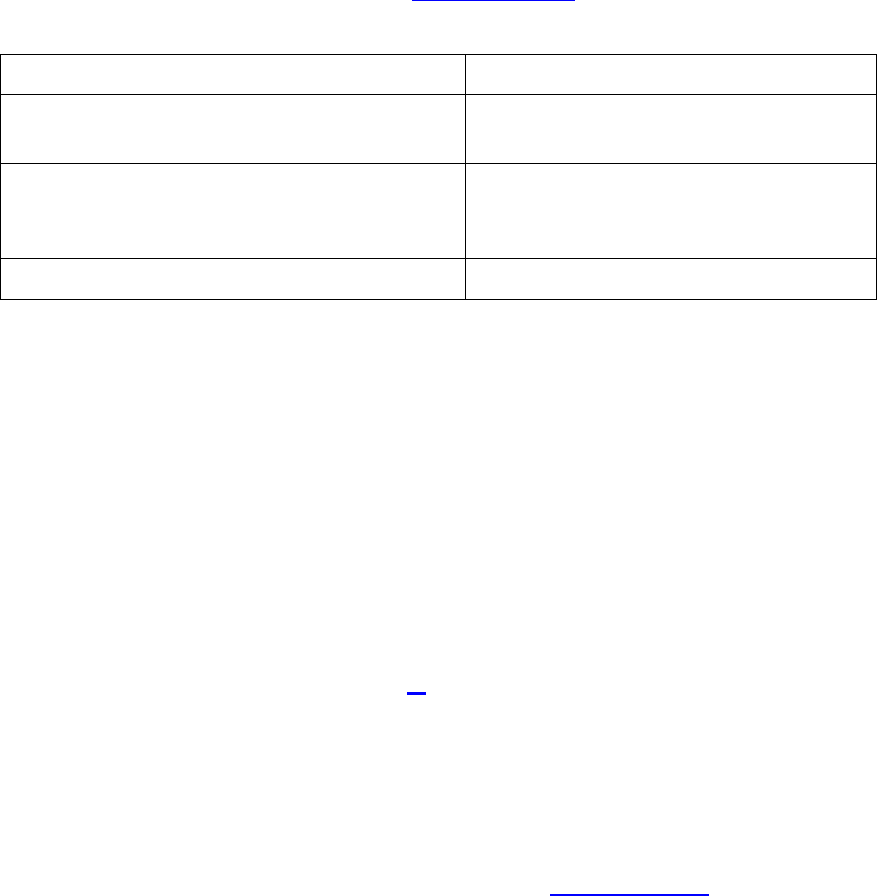
Page 97 of 147
adjustment to the unfunded actuarial liability. Included in this category are the accrued
benefit and entry age normal (sometimes referred to as the individual level premium
with supplemental liability) actuarial cost methods.
b. The original and revised standard permits use of any recognized method for
valuing pension fund assets used in measuring pension cost components provided it
reflects appreciation and depreciation of pension fund assets and is used consistently
from year to year. The illustration in CAS 413-60(b) identifies some commonly used
asset valuation methods:
Type of Asset Basis for Valuation
Equity securities and debt securities not
expected to be held to maturity
5-year moving average of market
values
Debt securities expected to be held to
maturity
Amortization of differences between
cost at purchase and par value at
maturity
Real Estate Cost less accumulated depreciation
If the method produces a value of less than 80 percent or more than 120
percent of market value, the asset values in a given year must be adjusted to the
nearest 80 percent or 120 percent boundary. The adjusted asset values are then
considered in calculating the actuarial gain or loss subject to the amortization criteria
described above. The standard's provisions regarding the valuation of assets do not
apply to plans funded with insurance companies via contracts with guaranteed
benefits.
c. Effective February 27, 2012, CAS 413-50(b)(6) requires the market value of
the pension assets to include the present value of contributions that are received after
the market value measurement date. The CAS 412-50(b)(4) long-term interest rate
assumption is used to compute the present value of these receivable contributions as
of the valuation date.
8-413.2 Segment Accounting **
a. Pre-March 30, 1995 Requirements:
(1) Except where certain significant disparities in actuarial factors exist
between segments, contractors have the option to calculate pension costs either
separately for segments or on a composite basis for allocation to segments on a base
that represents the factors used in computing pension benefits. Separate calculations
of pension costs for each segment are acceptable. CAS 413-50(c)(2) and (3) provide
that pension costs must be separately calculated for a segment (on a prospective
basis) when the pension costs at the segment are materially affected by any of the
following conditions:
(a) The segment experiences material termination gains or losses.

Page 98 of 147
(b) The level of benefits, eligibility for benefits, or age distribution is
materially different for the segment than for the average of all segments.
(c) The aggregate of actuarial assumptions for termination, retirement
age, or salary scale is materially different for the segment than for the average of the
segments.
(d) The ratios of assets to actuarial liabilities for merged segments are
different from one another after applying the benefits in effect after the merger.
Differences between segments as to level of benefits and eligibility of benefits should
be obtainable from the provisions of the pension plan. Segment data for termination
experience, age distribution, and actuarial assumptions for termination, retirement age
or salary scale will generally not be included in actuarial reports, CPA reports, IRS
Form 5500 or other pension source documents. Thus, the auditor should attempt to
gain an understanding at the onset of the pension evaluation as to the segment data to
be provided by the contractor that are necessary for audit determination of compliance
with CAS 413-50(c)(2) and (3).
(2) When separate pension fund calculations are required because of
disparities in termination gains or losses, level of or eligibility for benefits, or actuarial
assumptions for termination, retirement age or salary scale, undivided pension fund
assets must be initially allocated to the segment for which the separate calculation is
being made. The value of the pension fund assets allocated shall equal the segment's
pension fund contributions, adjusted for earned interest and paid benefits/expenses, if
such information is determinable; if not, the assets can be allocated among segments
on any ratio which is consistent with the actuarial cost method(s) used to compute
pension costs. The initial allocation of assets to merged segments must be the market
value of the segment's pension fund assets when the merger occurred.
(3) Employees participating in a multi-segment pension plan occasionally
transfer between segments. However, the applicable pension fund assets and
liabilities need not follow the employees from one segment to the other unless the
transfers involve such a large number of employees that a segment's ratio of fund
assets to actuarial liabilities would be distorted.
(4) Contractors who separately calculate pension costs for one or more
segments have the option of establishing a separate segment for inactive participants
(e.g., retirees). If this action is taken, the pension fund assets and actuarial liabilities
should be transferred to the inactive segment when employees participating in the
pension plan become inactive. The funds transferred are to reflect the funded portion of
the inactive participants' actuarial liability. CAS 413-50(c)(1) and 413-50(c)(9) provide
that inactive segment costs shall be allocated to the segments with active lives on a
basis representative of the factors upon which pension costs are based. Thus, pension
cost calculated for the inactive participants should be allocated to the segments with
active lives on a basis that is relatively comparable to the amounts that would have
been computed if a separate segment for inactive participants had never been
established.

Page 99 of 147
b. Requirements Effective March 30, 1995:
(1) The revised provisions of CAS 413-40(c) provide criteria for determining
the funding status for pension plans at contractors that compute segment pension cost.
The computation of the assignable cost limitation (ACL) shall be based on the actuarial
value of assets, actuarial accrued liabilities, and normal costs of the individual
segment. In computing the ACL for a segment, the maximum tax deductible (MTD)
amount is computed for the plan as a whole and apportioned among the segments.
(2) The revised Standard provides for calculation of pension cost for
segments that have disproportionate ratios of assets to liabilities. When the ACL
applies to a particular segment, all existing amortization bases maintained for that
segment are considered fully amortized pursuant to the provisions of CAS 412-
50(c)(2). For those segments not affected by the ACL, the amortization of the
unfunded actuarial liability continues unabated. Any amount of pension cost not
assignable to a segment because it exceeds the MTD amount is reassigned to future
periods as an assignable cost deficit.
8-413.3 CAS 413-50(c)(12) Adjustment For Segment Closing, Plan
Termination or Benefit Curtailment **
a. When a segment is closed, a plan is terminated, or benefits are curtailed, the
contractor must determine the difference between the actuarial liability for the segment
and the market value of the assets allocated to the segment as of the closure date.
Although this difference represents an adjustment of previously determined pension
costs, the general rule is that the contractor should make a refund or give credit to the
Government for its equitable share in the cost accounting period of closure, not prior
cost accounting periods. However, if the contractor continues to perform Government
contracts, the contracting parties may agree to apply the credit or charge in costing of
future contracts.
b. The definition of segment closing at CAS 413-30(a)(20) describes three
events that would give rise to a segment closing within the context of CAS 413-
50(c)(12). The first event is when a change in ownership takes place and such change
involves more than a mere reorganization within the contractor’s internal structure. The
second event is when the segment operationally ceases to exist. The third is when the
segment ends its contractual relationship with the Government irrespective of whether
the segment continues in operation.
c. Clarifications on Application of CAS 413-50(c)(12):
(1) In lieu of requiring contractors to recognize negative pension cost for
severely overfunded plans, specific language in CAS 413-50(c)(12) clarifies the
Government’s rights to an adjustment in the case of a segment closing, plan
termination, or freezing of benefits (curtailment of benefit gain/loss). The Standard
defers the Government’s recovery of excess assets until the occurrence of an event
that triggers the application of CAS 413-50(c)(12).

Page 100 of 147
(2) The Standard provides specific methodology and assumptions for
calculating the adjustment, and clarifies that the adjustment results in a charge to
Government contracts when the liabilities of the plan exceed the assets. The Standard
also provides for the application of CAS 413-50(c)(12) in the following areas:
(a) Actuarial Assumptions - 413-50(c)(12)(i): The actuarial liability shall
be determined using the accrued benefit cost method based on the long term
assumptions used by the contractor in measurement of pension cost on Government
contracts. This provision requires that measurement of the liability is to be based on
the Accumulated Benefit Obligation (ABO) rather than the Projected Benefit Obligation
(PBO). The coverage also clarifies that in the absence of a plan termination or
settlement of liabilities, contractors are required to use the plan’s existing long term
actuarial interest rate assumption in measurement of the segment’s actuarial liability.
As such, the use of the ERISA interest assumption would be inappropriate unless the
plan is terminated or the pension obligations are settled by the purchase of annuity
contracts.
(b) Plan Improvements -413-50(c)(12)(iv): This provision incorporates a
60 month phase-in rule that requires increased actuarial accrued liabilities to be
recognized on a pro-rata basis using the number of months that the plan amendment
preceded the date of the event that triggers an adjustment. This provision provides
clarification in accounting for plan improvements adopted within 60 months of the event
date. Contractors must give consideration to this ERISA requirement in measurement
of liabilities due to plan amendments. The cost of increased benefits that are required
by law or by a collective bargaining agreement are not subject to the 60-month phase-
in requirement.
(c) Transfer of Assets/Liabilities - 413-50(c)(12)(v): This provision
states that, when the segment closing involves the transfer of pension assets and
liabilities, no adjustment is required when all the pension assets and liabilities are
transferred to a successor in interest to the contracts. If only a portion of the assets
and liabilities are transferred, the standard requires that the adjustment be determined
after consideration for any transfer of assets and liabilities to a successor contractor.
(d) Adjustment to Pension Costs - 413-50(c)(12)(vi): The
Government’s share of the pension adjustment is determined based on the cost
allocated to all contracts that are subject to the provisions of CAS 412/413. Certain
exclusions have been defined by the courts for use in calculating the Government’s
share of the CAS 413 segment closing adjustment. Specifically, the portion of a closed
segment’s pension surplus or deficit that is attributable to pension costs that were
allocated to contracts that predate CAS 413, as well as the portion that is attributable to
pension costs allocated to firm-fixed price (FFP) contracts entered into under the
original CAS 413 must be excluded from the calculation of the Government’s share of
the CAS 413 segment closing adjustment. When there is a segment closing surplus,
the portion of the surplus attributable to employee contributions made from the date of
the inception of the pension plan until the date upon which the contractor first had to
follow CAS 413, as amended March 30, 1995 (revised CAS 413), must also be

Page 101 of 147
excluded. The required exclusions are made by adjusting the numerator and the
denominator of the fraction that is applied to the segment closing surplus or deficit to
determine the Government’s share.
(3) Regardless of the pension accounting methodology adopted by the
contractor, auditors should verify that the contractor has properly included all assets
and liabilities of the closed or sold segment, including those related to the inactive
participants, in the calculation of the segment closing adjustment.
(a) The contractor may use segment accounting and calculate pension
cost for all pension plan participants of the closed or sold segment, i.e., calculate
pension cost for the closed or sold segment’s active and inactive pension plan
participants together. In such cases, the assets reflected in the pension plan records
that the contractor is required to maintain per CAS 413-50(c)(7), if properly maintained,
will include all assets of the closed or sold segment.
(b) The contractor may calculate pension costs for only active pension
plan participants of the closed or sold segment and maintain a separate pension
segment for all inactive participants of the pension plan pursuant to CAS 413-50(c)(9).
In such cases, an allocable portion of the assets and liabilities of the inactive pension
segment must be identified with the closed or sold segment.
d. If noncompliances are found, the auditor must ascertain their significance and
make appropriate recommendations as outlined in 8-302.7.
8-413.4 Illustrations **
The following illustrations supplement those in paragraph 413-60 of the
standard. They are to be used as a guide in determining whether a contractor's
practices comply with the standard.
a. Problem. Contractor X was acquired by Contractor Y and renamed Segment
B. The entire work force of X was retained by Y following the acquisition. Pursuant to
terms of X's pension plan, X employees were paid all vested pension benefits at the
time of dissolution of X. The employees, upon coming to work for Contractor Y, were
considered "new employees" with no actuarial liability attributable to their past service
with Contractor X. Contractor Y's unfunded actuarial liability (UAL) at the time of the
merger was $25 million. Contractor Y has consistently made a composite pension cost
calculation for all of its segments and wishes to continue doing so.
Solution. Since Y's pension plan had a disproportionately larger UAL than X's
plan at the time of acquisition (i.e., $25 million vs. -0-), any combining of assets and
actuarial liabilities of the two plans would result in a materially different pension cost
allocation to Y's segments than if pension costs for Segment B were computed as
though it had a separate pension plan. Pension costs must be calculated separately
for Segment B.
b. Problem. Contractor X computes pension costs separately for Segments A, B,
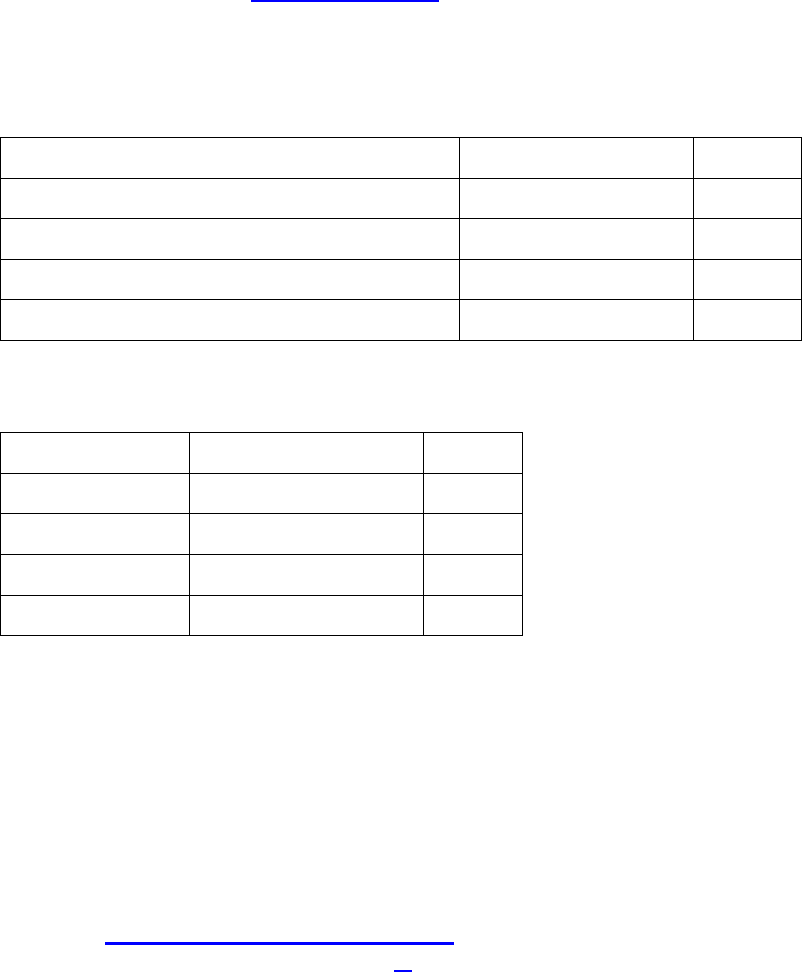
Page 102 of 147
and C. As permitted in CAS 413-50(c)(9), the contractor elects to establish a separate
segment for inactive plan participants. Pension costs for the inactive segment are
allocated back to A, B, and C on the ratios of the remaining working lives of the work
force of the three segments. This method results in the following allocation of inactive
segment pension costs:
Segment Costs %
Segment A $2.5 million 25
Segment B 4.0 million 40
Segment C 3.5 million 35
Total inactive segment costs allocated $10.0 million 100%
The actuarial report discloses that the inactive plan participants retired from the
following segments:
Segment Number of Retirees %
A 5950 85
B 350 5
C 700 10
Total 7000 100%
Due to the geographical dispersion of the three segments, few employees had
transferred among segments prior to retirement. The high ratio of retirees from
Segment A was attributable to a major plant layoff that occurred 10 years previously.
Solution. The contractor's allocation of inactive segment costs to Segments A,
B, and C results in a substantially different amount than would have been allocated if a
separate segment for inactive participants had never been established. The auditor
should recommend an allocation of inactive segment costs to A, B, and C based on the
ratios of the number of retirees from each segment to total retirees.
8-414 Cost Accounting Standard 414 - Cost of Money as an Element of the
Cost of Facilities Capital **
a. The standard recognizes the cost of facilities capital as a contract cost. It
provides criteria for measuring and allocating an appropriate share of the cost of
money which can be identified with the facilities employed in a business.
b. The effective date of this standard was April 17, 1992. Contractors must follow
its requirements on all contracts subject to CAS negotiated on or after this date.
c. CAS 414 and the FAR cost principle do not apply to facilities where
compensation for the use of the facilities is based on use rates or allowances in
accordance with Federal regulation. Where contractors are compensated for some

Page 103 of 147
facilities by use rates and others by depreciation, the contractor should apply CAS 414
to those facilities that are being depreciated.
d. FAR 31.205-10 makes CAS 414 applicable to all contracts, even contracts that
are not CAS-covered or subject only to modified CAS-coverage. Auditors should
ensure that proposed or claimed cost of money, where significant, are in compliance
with the provisions of CAS 414.
e. See CAS Working Group Papers 77-18 and 77-19 for guidance issued by the
CAS Working Group on CAS 414.
8-414.1 General **
a. The CAS 414 techniques must be used to compute the cost of money in
connection with individual price proposals, forward pricing rate agreements, and with
the establishment of final indirect cost rates. The cost of money is an imputed cost,
which is identified with the total facilities capital associated with each indirect cost pool,
and is allocated to contracts over the same base used to allocate the other expenses
included in the cost pool. The cost of money may be considered an indirect expense
associated with an individual cost pool but separately identified. The cost of money is
subject to all the same allocation procedures as any other indirect expense which is
allocated on a selected base, and each element of such base, whether allowable or
unallowable, should bear its pro rata share of the cost of money.
b. Use of the cost of money factors in final indirect rate determinations and
forward pricing proposals is discussed in paragraphs 8-414.2 and 8-414.3 below. The
calculation of the cost of money for each contract involves several steps.
(1) The average net book value of facilities for each indirect expense pool
having a significant allocation of facilities is identified from accounting data used for
contract costing.
(2) The cost of money devoted to facilities capital for each indirect expense
pool is the product of these net book values multiplied by the cost of money rates per
the Secretary of the Treasury under Public Law 92-41, 85 Statute 97 (distributed semi-
annually by Headquarters).
(3) Facilities capital cost of money factors are computed by dividing the cost
of money for each pool by the corresponding allocation base. The allocation bases
used in this computation must be compatible with the bases used for applying indirect
costs in determining contract costs.
(4) The cost of capital committed to facilities is separately estimated,
accumulated, and reported for each contract. Each contract's share of the facilities
capital cost of money is determined by multiplying the portion of the allocation bases
for each indirect expense pool applicable to the contract by the facilities cost of money
factor for that pool and adding the products together.

Page 104 of 147
c. The facilities capital cost of money factors, wherever applicable, must be
computed in accordance with the CASB-CMF form, Facilities Capital Cost of Money
Factors and Computation. The CASB-CMF form and instructions are included as an
appendix to CAS 414.
(1) On the CASB-CMF form, facilities capital items are classified as
Recorded Facilities, Leased Property, and Corporate or Group Facilities. Leases
formerly classified as capital leases for financial reporting under FASB 13, and now
classified as finance leases under ASC 842, are to be considered as Leased Property
for purposes of the CASB-CMF form. In accordance with CAS Working Group Paper
77-19, operating leases, for which constructive cost of ownership is allowed in lieu of
rental costs under Government acquisition regulations, are also to be classified as
Leased Property. Operating leases for which constructive cost of ownership is not
allowed are not included in Leased Property, whether or not they are capitalized as
right-of-use assets for financial reporting under ASC 842. Since cost of money would
be an allowable cost if the contractor had purchased the property, the cost of money
should be included as an ownership cost in determining whether the allowable cost will
be based on constructive ownership cost or leasing cost. Land which is an integral
part of the leased facility is subject to the same treatment as the leased facility in
computing the cost of money. Land leases for which the land is used in the regular
business activity will also be included on the form even though land lease costs
themselves do not generate allowable costs.
(2) Facilities costs are further identified on the CASB-CMF as either
"distributed" or "undistributed. "Distributed facilities are those capital items which can
be identified in the contractor's records as solely applicable to those specific indirect
expense pools for which a cost of money rate is to be computed. Undistributed items,
which represent the remainder of the business unit's facilities capital, consist primarily
of items charged to service centers. Under the regular method, undistributed assets
are allocated to the appropriate indirect expense pools on a basis that approximates
the actual absorption of depreciation/amortization of the facilities. Under the alternative
method provided for in the standard, the undistributed assets are allocated to the G&A
expense pool. The alternative method may be used only if the contracting parties
agree that depreciation/amortization generated by the undistributed assets is
immaterial or the results obtained from this alternative procedure are comparable to
those which would have been obtained under the regular method.
(3) In determining the average net book values for facilities employed by the
business unit, auditors will be required to examine asset records to the extent
necessary in the circumstances.
(a) Initially, the auditor should establish the validity of the average values
used by the contractor. The standard provides that, where there has been a major
fluctuation in the level of facilities during the cost accounting period, the simple average
of the beginning and ending net book values may not be appropriate. Where
significant variations have occurred, the auditor should recommend a procedure for
calculating the average that more accurately reflects the actual experience.

Page 105 of 147
(b) The facilities capital values used as a basis for the cost of money
must, in general, be the same values used to generate allowable depreciation or
amortization cost (ASBCA Case No. 32419, Raytheon Co.). Land which is integral to
the regular operation of the business unit will be included. Operating leases which are
treated as constructive ownership will be included at net book value on the CASB-CMF
form starting with beginning of the lease term. Where leasing costs have previously
been accepted as less costly to the Government under the lease period, renewal of the
lease requires a new comparison of lease/ownership costs. If this comparison results
in the allowance of constructive ownership costs in lieu of rental costs, the lease will be
included at net book value on the CASB-CMF starting with the beginning of the lease
renewal. The net book value will be based on fair value at asset acquisition (date that
lease was entered into or renewed if appropriate) less the amount, if any, which would
have been depreciated had the asset been purchased. The net book value assigned
to the leased asset will not include the cost of money. Leasehold improvements may
be considered in computing the cost of money if they are subject to amortization.
Goodwill is not to be included in the cost of money computation. The acquisition value
for all contractor-owned tangible assets and those leased assets for which constructive
cost of ownership is allowed in lieu of rental costs should be determined in accordance
with CAS 404. Depreciation charges applicable to assets included in the cost of
money computation will be determined in accordance with CAS 409.
(c) To be included in the base for the cost of money computation, the
asset must be used in regular business activity. Where a contractor maintains
depreciation records for groups of assets, the auditor should evaluate the assets in the
group to see if they should be included in the cost of money computation. In addition,
the auditors should carefully evaluate contractor land purchases and leases to
determine if they are an integral part of the regular operation of the business. The
auditor should request the contractor to demonstrate that land purchases and leases in
question were acquired as a reasonable response to a prudent forecast of the
contractor's regular business activity and therefore are integral to the regular
operations of the business. If the purchase/lease costs do not meet this requirement
then the auditor should assure that these costs are properly excluded from the CAS
414 computation. The following would not be considered as being used in the regular
business activity:
● Land held for speculation.
● Facilities or capacity which have been determined to be idle in
accordance with FAR 31.205-17.
● Assets which are under construction for a contractor's own use
(see 8-417.2a.).
● Assets which have been constructed or purchased but have not yet
been placed into service.
8-414.2 Interest Rates – Cost of Facilities Capital **
a. The cost of money rate to be used in computing the cost of money factors is
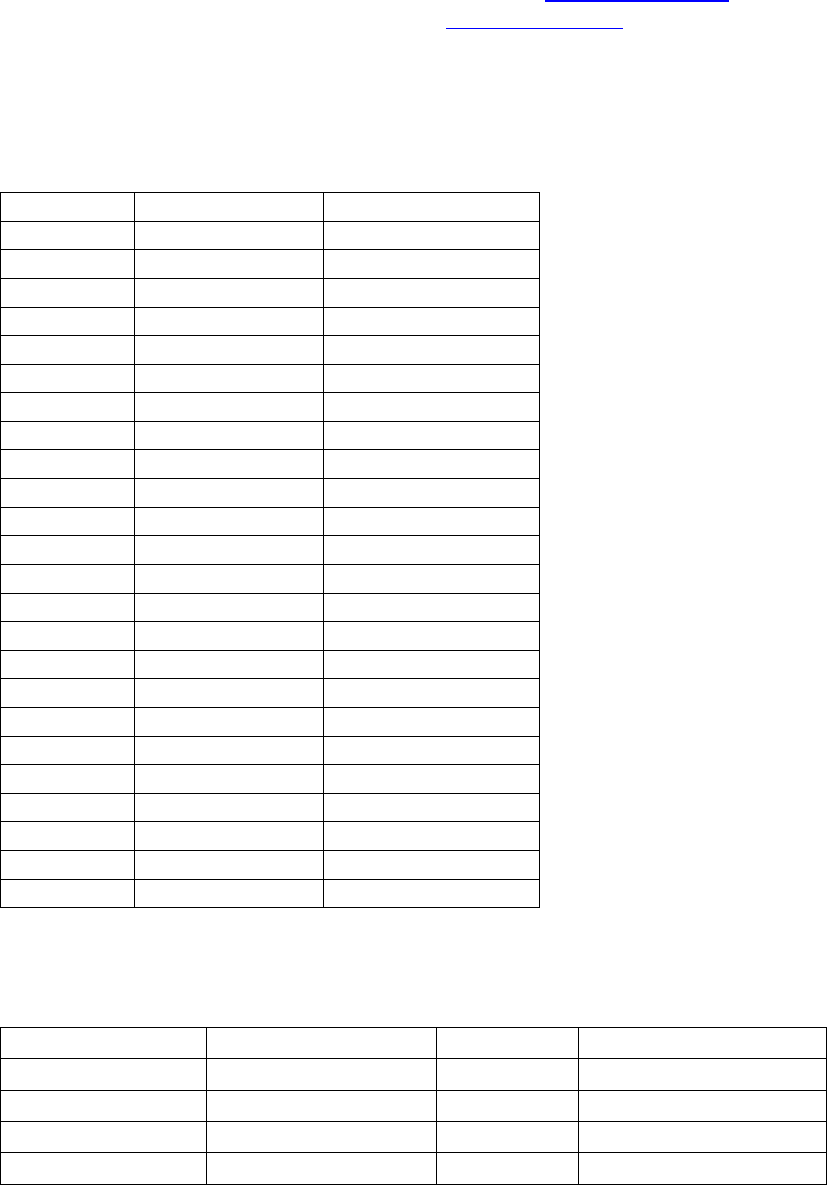
Page 106 of 147
determined by the Secretary of the Treasury under Public Law 92-41, 85 Statute 97.
This rate is published semiannually in the Federal Register and is commonly referred
to as the Prompt Payment Interest Rate. The rate published in December is applicable
to the period from January 1 through June 30; the rate published in June is applicable
to the period from July 1 through December 31. Although the interest rates are
published semiannually, they are annual rates. Rates in effect since January 1, 2000
are as follows:
Year
January-June
July-December
2000
6.75%
7.25%
2001
6.375%
5.875%
2002
5.5%
5.25%
2003
4.25%
3.125%
2004
4.00%
4.5%
2005
4.25%
4.5%
2006
5.125%
5.75%
2007
5.25%
5.75%
2008
4.75%
5.125%
2009
5.625%
4.875%
2010
3.25%
3.125%
2011
2.625%
2.500%
2012
2.000%
1.7500%
2013
1.375%
1.75%
2014
2.125%
2.0%
2015
2.125%
2.375%
2016
2.50%
1.875%
2017
2.50%
2.375
2018
2.625%
3.500%
2019
3.625%
2.625%
2020
2.125%
1.125%
2021
0.875%
1.125%
2022
1.625%
4.000%
2023
4.625%
4.875%
b. In calculating final facilities capital cost of money factors, the cost of money
rate is the prorated average of the treasury rates. For example, the cost of money rate
for fiscal year ending October 31, 2016 should be computed as follows:
Period
Treasury Rate
Weighting
Cost of Money Rate
2015 2nd Half
2.375%
2/12
0.396%
2016 1st Half
2.50%
6/12
1.25%
2016 2nd Half
1.875%
4/12
0.625%
Total
2.271%
The contractor must compute and support the cost of money factors. Based on
the auditor's recommendation, the CFAO determines whether the factors are valid for
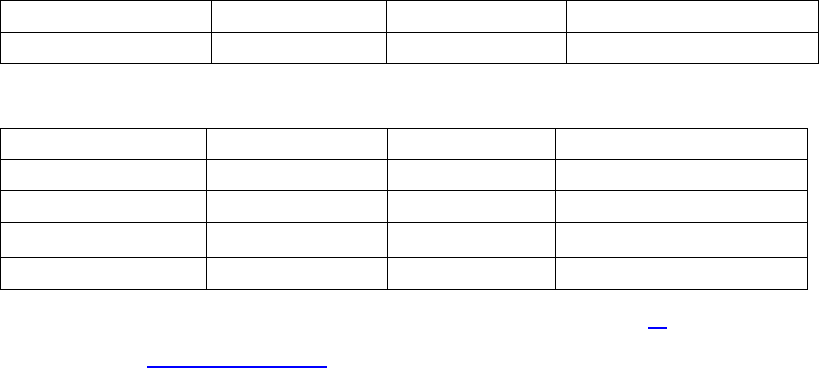
Page 107 of 147
contract cost and pricing purposes.
c. A contractor may change its fiscal year due to a merger, business
combination, or other valid reason. When a cost accounting period is not a 12-month
period, the cost of money rates must be adjusted to reflect the applicable accounting
period. This is because the cost of money rates are annual rates, whereas the asset
net book values of the contractor’s assets and allocation bases reflect a period other
than the normal 12-month period. For example, the cost of money rate for a 6 and 15-
month accounting periods ending December 31, 2015 would be computed as follows:
6-Month Accounting Period
Period
Treasury Rate
Weighting
Cost of Money Rate
2016 2nd Half
1.875%
6/12
0.938%
15-Month Accounting Period
Period
Treasury Rate
Weighting
Cost of Money Rate
2015 2nd Half
2.375%
3/12
0.594%
2016 1st Half
2.50%
6/12
1.25%
2016 2nd Half
1.875%
6/12
0.938%
Total
2.785%
8-414.3 Evaluating the Contractor’s Computations **
a. The CASB-CMF form will be used to support the cost of money factors used
in incurred cost allocations and forward pricing proposals. In developing the factors
used in forward pricing proposals, the contractor should take into account the latest
available cost of money rate and a forecast of the facilities net book values and
allocation bases for each cost accounting period of contract performance. In some
instances, where projected asset value and allocation bases are not expected to vary
significantly from the latest completed cost accounting period, the same facilities values
and allocation bases as are required for retroactive cost determination may be used for
forward pricing purposes.
(1) In as much as significant changes in any of the variables, i.e., net book
value of facilities, the treasury rate or the allocation base may change the relationship
and affect the cost of money factor, the auditor should closely evaluate any proposed
cost of money calculation before it is accepted as a basis for negotiation. The latest
available semiannual interest rate should be verified and known or anticipated
additions/deletions of assets, as well as the effect of the annual depreciation on the net
book value, should be examined. The allocation bases used in the cost of money
computation should be compared for consistency with those used in estimating indirect
cost rates.

Page 108 of 147
(2) When the average cost of money rate to be used in costing the contract
is known, this average rate should be used in lieu of the latest semiannual treasury
rate. This situation could occur when a short-term contract is negotiated and
performed within the 6-month period after all the rates to be weighted in the actual
historical cost of money are known. As an example, a contractor on a calendar year
basis receives a contract on July 1, 1987, with a performance period of July 1, 1987 to
December 31, 1987. The treasury rate for July 1, 1987 to December 31, 1987 was
published in June 1987. Since the contract will be costed after-the-fact using the
arithmetic average of the two semiannual rates for 1987, 7.625% + 8.875%/2 = 8.25%,
the 8.25 percent rate should also be used for pricing the contract. Auditors should be
aware that the interest rate which will be in effect during the negotiation and applied to
the contractor's estimate may not be known when the audit report is written. If this is
the case, we should qualify the audit report regarding the allocable cost of money. The
qualification should advise that if a new rate is available, the PCO should consider
recomputing the cost of money amount before finalizing negotiations.
b. In accordance with CAS 414, cost of money is allocable to IR&D and B&P
projects.
c. Contractors will include the amount proposed for cost of money in the
proposal, supported by Form CASB-CMF and any other detail required to comply with
10 U.S.C. Chapter 271: Truthful Cost or Pricing Data (Truth in Negotiations). Where
the contractor elects to exclude the cost of money from its proposal or claim for
reimbursement, such costs should be designated as unallowable and may not be
included in profit. In addition, the contractor is still required to compute the cost of
money factors in accordance with CAS 414. In virtually all cases; however, the
noncompliance will not result in increased cost paid by the Government. As such,
when there is no increase in cost paid or to be paid as a result, a determination of
noncompliance is not needed. Therefore, the audit team should not issue a
noncompliance report unless specifically requested by the contracting officer.
d. Request for audits of the contractor's computation of the cost of money may
be received in connection with individual price proposals, forward pricing rate
agreements, and the establishment of final indirect cost rates. With each of these
audits, the report to the CFAO will state whether the contractor has complied with the
standard and the requirements of the acquisition regulations.
e. If noncompliances are found, the auditor must ascertain their significance and
make appropriate recommendations as outlined in 8-302.7.

Page 109 of 147
8-415 Cost Accounting Standard 415 - Accounting for the Cost of Deferred
Compensation **
a. The purpose of this standard is to provide criteria for measuring deferred
compensation costs and assigning those costs to cost accounting periods. It applies to
all deferred compensation costs except for compensated absences and pension plans
that do not meet the definition of an Employee Stock Ownership Plan (ESOP) covered
in CAS 408 and CAS 412.
b. The standard was effective June 2, 2008. It must be applied starting with the
next fiscal year after receipt of the first CAS-covered contract to which the standard is
applicable. It does not disturb prior advance agreements regarding the recognition of
the costs of existing ESOPs. It allows the deferred compensation cost awarded before
the applicability date to be allocated as a cost when paid under existing contracts.
c. FAR 31.205-6(k) makes CAS 415 applicable to all contracts, even contracts
which are not CAS-covered or subject only to modified CAS-coverage. Auditors should
ensure that proposed or claimed deferred compensation costs, where significant, are in
compliance with the provisions of CAS 415.
8-415.1 General **
a. Deferred compensation is an award made by an employer to compensate an
employee in a future cost accounting period for services rendered prior to receipt of
compensation. It does not include normal year-end salary, wage, or bonus accruals.
b. Deferred compensation costs, other than ESOPs, are measured by the
present value of future benefits to be paid and are assigned to the cost accounting
period in which the contractor becomes obligated to compensate the employee. For an
ESOP, the deferred compensation cost is the amount, including interest and dividends,
contributed to the ESOP by the contractor. The measurement of contributions is the
market value of the stock or property at the time the contributions are made if available,
if not the fair value should be used. The contractor incurs this obligation when:
(1) The requirement for future payment cannot be unilaterally avoided by the
contractor.
(2) The award is to be paid in money, other assets, or shares of the
contractor's stock.
(3) The future payment can be measured reasonably accurately.
(4) The recipient of the award is known.
(5) Events entitling an employee to receive an award have a reasonable
probability of occurrence.
(6) There is reasonable probability that stock options will be exercised.

Page 110 of 147
These conditions are basically those recognized under generally accepted accounting
principles for establishing a liability. Where these conditions are not met, the deferred
compensation cost will be assigned to the period of payment.
c. If the award is based on employee's performance of future service to receive
benefits, the contractor's obligation is established as the future service is performed.
d. The treasury rate determined by the Secretary of the Treasury pursuant to
Public Law 92-41, 85 Statute 97, effective when the cost is assigned, will be used for
computing the present value of future benefits. The treasury rate considers current
private commercial interest rates for loans maturing in approximately five years and is
considered the most appropriate rate for discounting deferred compensation costs.
e. The measurement and assignment of present values of future benefits to cost
accounting periods should be separate for each award. However, the cost estimated
on a group basis for employees covered by a deferred compensation plan will be
acceptable if the cost can be measured with reasonable accuracy and includes an
adjustment for probable forfeitures.
f. The auditor's evaluation should:
(1) Identify all deferred compensation awards currently provided to
employees.
(2) Determine what accounting changes, if any, are contemplated as a result
of the standard. (According to FAR 52.230-6, the contractor is required to describe to
the ACO the kind of changes required by the standard.) If the contractor previously
utilized a cash basis of accounting for deferred compensation costs on Government
contracts, a change from a cash to an accrual basis will be required for all new awards
made after the applicability date of the standard.
(3) Verify, through examination of the award provisions, that all applicable
conditions for establishing the obligation for compensation have been met for those
awards in which the entire cost is recognized in the year of award.
(4) Evaluate the present-value calculations to determine that the treasury
rate specified in the standard has been used correctly.
(5) Evaluate costs for proper credit of estimated forfeitures, based on past
experience and future expectations, where deferred compensation costs are accounted
for on a group basis.
g. Interest cost will be included in computing future benefits for all deferred
compensation cash awards that provide for the payment of interest. The allowability of
such interest cost will be determined in accordance with applicable acquisition
regulations. If the award stipulates a fixed interest rate, the interest cost is assigned at
the fixed rate to the cost accounting period in which the contractor is obligated to
compensate the employee. Some deferred compensation awards provide for the
Page 111 of 147
payment of interest at variable rates from the date of the award until payment. When
the variable rate is based on specified index that is determinable by cost accounting
period, the interest cost is assigned to the applicable period at the actual rate for the
index at the close of the period. Since that rate may vary from the actual rates in future
periods, adjustments will be made in any future period in which the variable rate
materially affects the cost of deferred compensation. When the variable rate is not
based on a specified index and is not determinable by year, the total interest cost will
be assigned to the period of payment. The auditor should evaluate each deferred
compensation plan that provides for a cash award, to determine whether the payment
of interest is required. For each plan that provides for interest, the auditor should
check the contractor's annual interest cost calculation to ascertain that only interest
costs for which the rates are fixed or based on specific indices have been accrued.
h. If a deferred compensation plan for a cash award requires irrevocable funding
(including interest) of future payments to employees, the amount irrevocably funded
will be assigned to the cost accounting period in which the funding occurs.
i. The deferred compensation cost of an award of contractor stock will be based
on the current or prevailing market value of the stock (as indicated by market
quotations) on the date the number of shares awarded becomes known. It should be
noted that the standard does not provide for present value discounting of the market
price for stock. Since the market price is presumed to reflect future expectations,
further discounting would not be appropriate.
j. The cost of an award of an asset other than cash will be based on the market
value of the asset when the award is made. If the market value is not available, a fair
value of the asset will be established. The auditor should verify that the claimed
market value of the asset is supported by a valid appraisal obtained from an outside
source.
k. If the terms of an award of either cash, other assets, or stock require that an
employee perform future service to receive benefits, the deferred compensation cost
will be assigned on a pro rata basis to those applicable periods of current and future
service. The standard does not specify the method or proration but provides that the
proration be based on the circumstances of the award. The requirement of the
standard conforms with Accounting Principles Board Opinion No. 12 which states that
only the portion applicable to the current period should be accrued if elements of both
current and future services are present. The auditor should determine the basis on
which the contractor prorates costs between current and future periods. Where
deferred compensation plans do not clearly establish a basis for prorating costs
between accounting periods, the contractor will be required to support the proration. In
most instances, the contractor, because of the ease of computation, will prorate the
costs evenly over the number of years of additional service required before exercise of
the award. For example, a contractor, declaring a year-end cash award to key
employees under a plan requiring three additional years of service before payment,
prorates the cost evenly over the following three years (excluding adjustment for
present value factors). The contractor's proration would be accepted by the auditor

Page 112 of 147
unless the circumstances of the award clearly indicated that the award was related in
total, or in part, to past services rendered.
l. Any forfeiture that reduces the contractor’s obligation for payment of deferred
compensation will be credited to contract costs in the period the forfeiture occurs. The
reduction will be the amount of the award assigned to the prior period(s), plus interest
compounded annually at the Secretary of the Treasury rate under Public Law 92-41,
85 Statute 97. For irrevocably funded plans, the reduction will be the amount initially
funded, adjusted for a pro rata share of fund gains or losses. The voluntary failure of a
recipient to exercise a stock option is not considered a forfeiture. If the cost of a cash
award for a group deferred compensation plan is later determined to be greater than
the amount initially assigned due to an overestimate of forfeitures, the additional cost
attributable to the incorrect estimate will be assigned to the cost accounting period in
which the revised cost becomes known.
m. ESOP costs are assignable to the cost accounting period when the
contribution is awarded to employees and allocated to individual accounts with
consideration of the tax filing date for that period. Costs allocated to employees
between the end of the cost accounting period and the tax filing date are assignable to
the cost accounting period the employee is awarded, in accordance with the plan, the
stock or cash. Any portion of the stock or cash contributed by the contractor to the
ESOP that is not awarded or allocated to individual employees by the tax filing date for
that period, are assigned to the corresponding future period when awarded and
allocated. The value of the stock remains unchanged (i.e., market value or fair value at
the time the contributions are made).
n. If noncompliances are found, the auditor must ascertain their significance and
make appropriate recommendations as outlined in 8-302.7.
8-415.2 Illustrations **
The following illustrations are intended to supplement those in paragraph 415-60
of the standard. They are to be used as a guide in determining whether a contractor's
practices comply with the provisions of the standard.
a. Problem. The cost of a contractor's deferred compensation plan for a cash
award is assigned to the cost accounting period in which the award is made. Under
the provisions of the plan, the contractor has complete authority over forfeiture. If an
employee is reassigned or laid off before he is eligible for benefits, the contractor may
forfeit the employee's rights to the benefits.
Solution. Under CAS 415-50(a), one criterion for incurring an obligation is that
the contractor cannot unilaterally avoid future payment. As a result of the contractor's
discretionary control over the forfeiture provisions, this would not be considered a valid
obligation. The cost should therefore be assigned to the year paid, not the year
awarded.
b. Problem. The contractor's deferred compensation requires all cash awards to

Page 113 of 147
be increased by an eight percent interest factor.
Solution. The cost of future benefits assigned to the current accounting period
should include interest cost calculated at eight percent compounded annually
according to CAS 415-50(d)(1).
c. Problem. The contractor accounts for the cost of a cash award deferred
compensation plan on a group basis, adjusted for an estimated four percent forfeiture
allowance. At the close of its fiscal year 1987, the actual cost of forfeitures amounted
to only three percent because of a lower employee turnover than was originally
anticipated.
Solution. The additional cost resulting from the overestimated forfeiture
allowance should be charged to deferred compensations costs in fiscal year 1987.
d. Problem. The contractor has a deferred compensation plan that specifies that
an employee receiving a cash award must remain with the company for three years
after the award to receive benefits. On March 31, 1987 (fiscal year-end), the contractor
awards $5,000 to an employee to be paid on March 31, 1990. According to the plan's
requirement for irrevocable funding of future payments, the cost payable to the
employee on March 31, 1990 was funded on March 31, 1987.
Solution. The entire amount irrevocably funded must be assigned to the fiscal
year ending March 31, 1987 according to CAS 415-50(d)(6).
e. Problem. The circumstances are the same as for problem d. above except
the employee voluntarily terminates his employment on May 30, 1987. On the date of
termination, the fund has appreciated eight percent.
Solution. The amount irrevocably funded plus eight percent for the fund gain
will be credited to deferred compensation costs in fiscal year-end March 31, 1988 as a
forfeiture reduction.
f. Problem. The contractor maintains a self-insured retiree death benefit plan for
which costs are recorded at the time the death benefit is paid. Questions have been
raised as to whether these benefits should be considered deferred compensation
subject to CAS 415 and whether the liability for currently retired employees should be
accrued.
Solution. These benefits are not deferred compensation as contemplated in
CAS 415. CAS 415-50(a)(3) requires a reasonably accurate measurement of future
payments as a condition for accrual. Retiree death benefits could only be accrued by
introducing mortality assumptions and this was not considered to fall within the
meaning of "reasonable accuracy" as used in the standard.
g. Problem. The contractor allocates 8,000 shares of stock to individual
employee accounts valued at $800,000 on March 31, 2008 in accordance with its
ESOP and assigns the deferred compensation costs to 2008 when the stocks were

Page 114 of 147
allocated to individual accounts.
Solution. The 8,000 shares of stock must be assigned to FY 2007 not FY 2008
since they were allocated to individual employee accounts prior to the tax filing date for
FY 2007 and were awarded per the ESOP (i.e., contractor was obligated to award
8,000 shares in FY 2007 per its plan).
8-416 Cost Accounting Standard 416 - Accounting for Insurance Cost **
CAS 416 provides criteria for the measurement of insurance costs, the
assignment of such costs to cost accounting periods, and their allocation to cost
objectives. The standard was effective April 17, 1992, and is applicable to a contractor
on or after the start of its next accounting period beginning after the receipt of a CAS-
covered contract.
8-416.1 General **
a. CAS 416 covers accounting for purchased insurance, self-insurance, and
payments to a trustee of an insurance fund. When coverage is obtained through
purchase of insurance or payment into an insurance fund, the premium or payment
normally should represent the insurance cost. Amounts representing coverage for
more than one year should be assigned pro rata among the cost accounting periods
covered by the policy term. When coverage is not obtained through purchased
insurance or payment into an insurance fund, the contractor should follow a program of
self-insurance in accordance with criteria in the standard. Self-insurance is defined as
the assumption or retention of the risk of loss by a contractor, either voluntarily or
involuntarily. Absence of insurance is regarded as one form of self-insurance. The
contractor should make a self-insurance charge for each period for each type of self-
insured risk based on an estimate of the projected average loss for that period.
Insurance administration expenses that are material in relation to total insurance costs
should be allocated on the same basis as the related costs.
b. FAR 31.205-19 makes the self-insurance provisions of CAS 416 applicable to
all contracts, even contracts that are not CAS-covered or subject only to modified CAS-
coverage. Auditors should ensure that proposed or claimed insurance costs, where
significant, comply with the provisions of CAS 416.
8-416.2 Guidance **
a. The standard requires the contractor to maintain records to substantiate the
amounts of premiums, refunds, dividends, losses, and self-insurance charges.
Records should also show the frequency, amount, and location of actual losses by
major type of risk.
b. A contractor may need memorandum records to reflect material differences
between insurance costs determined in accordance with CAS 416 and those includable
in financial statements prepared in accordance with Financial Accounting Standards

Page 115 of 147
Board (FASB) ASC Subtopic 450-20, Contingencies: Loss Contingencies. ASC 450-20
does not permit an accrual for loss contingencies in a contractor's financial accounting
records unless (1) an asset has been impaired or a liability incurred at the date of
financial statements and (2) the amount can be reasonably estimated. Insurance costs
determined in accordance with CAS 416 cannot be accrued in financial accounting
records unless they represent purchased insurance, actual payment to a trustee, or the
recognition of an actual loss. A self-insurance charge that only represents exposure to
the risk of loss cannot be accrued.
c. Exposure to the risk of loss may differ significantly between defense and
commercial operations and products. When risks differ significantly, defense and
commercial insurance costs should be accumulated and allocated separately.
d. The audit of insurance premiums and payments to trustees should include:
(1) Examining insurance policies to determine the basis for establishing and
adjusting premiums, and any provision for deposits and reserves.
(2) Determining whether the contractor controls or has a financial interest in
the insurer. Purchase of insurance from a related organization may be a form of self-
insurance which should be audited in accordance with 8-416.2e.
(3) Examining the transactions in connection with an insurance reserve or
fund in order to establish compliance with CAS 416-50(a)(iv) and (v).
(4) Evaluating direct allocations of premium costs to final cost objectives to
detect possible noncompliance with CAS 402.
(5) Evaluating the assignment of premiums, refunds, and assessments to
and among cost accounting periods.
e. CAS 416 does not establish minimum financial requirements for a contractor's
self-insurance program. In order to assure that a contractor has adequate financial
resources for a self-insurance program, FAR 31.205-19 requires contracting officer
approval of a self-insurance program before the related costs are allowable. Auditors
may be requested to furnish data in connection with the evaluation of the proposed
self-insurance program. Self-insurance charges should be audited for compliance with
CAS 416 and the approved program. The audit of self-insurance charges should
include:
(1) Evaluating the contractor's overall self-insurance program and the
adequacy of supporting records.
(2) Analyzing the nature, amount and pattern of actual insurance losses.
(3) Evaluating the contractor's method of estimating projected average loss
from actual loss data.

Page 116 of 147
(4) Comparing the self-insurance charge with the cost of purchased
insurance when it is available.
f. If noncompliances are found, the auditor must ascertain their significance and
make appropriate recommendations as outlined in 8-302.7.
8-416.3 Illustrations **
The following illustrations are intended to supplement those in paragraph 416-60
of the standard. They are to be used as a guide in determining whether a contractor's
practices comply with the standard's provisions.
a. Problem. Contractor X establishes an approved self-insurance program to
cover employee group health plans beginning with its next accounting period. The
contractor makes a self-insurance charge based on analysis of its actual loss
experience over the prior 10-year period and an evaluation of anticipated conditions.
The auditor determines that a well-known insurance company offers coverage at a cost
materially lower than the self-insurance charge. The contractor refuses to purchase
insurance because the insurance company is a subsidiary of a competitor and has a
poor reputation.
Solution. The contractor's practice complies with CAS 416 even though
purchased insurance is available at a lesser cost. Paragraph 5 of the supplemental
information published with CAS 416 states that the limitation in CAS 416-50(a)(2)(i) is
intended to apply only when the cost of comparable purchased insurance is used as a
convenient method of estimating the projected average loss. The contractor's action is
still subject to the test of reasonableness contained in FAR 31.201-3 as well as the
allowability requirements of FAR 31.205-19, which disallows the difference between
the cost of self-insurance and comparable purchased insurance (plus associated
administrative expenses). The difference should be questioned if the purchased
insurance is determined to be comparable.
b. Problem. Contractor Y proposes to discontinue its purchased insurance
coverage and become self-insured without setting aside specific financial resources to
cover future losses.
Solution. If the self-insurance charge is measured and allocated properly
following the criteria in CAS 416-50(a)(2), the proposed practice complies with the
standard regardless of the availability of specific financial resources to cover future
losses. The same cost, however, may be unallowable under FAR 31.205-19 if the self-
insurance program has not been approved by the CFAO.
8-417 Cost Accounting Standard 417 - Cost of Money as an Element of the
Cost of Capital Assets Under Construction **
a. This standard establishes criteria for the measurement of the cost of money
attributable to capital assets under construction, fabrication, or development as an
element of the cost of those assets. The standard was effective April 17, 1992. It is

Page 117 of 147
applicable on or after the start of the next fiscal year beginning after receipt of a
contract to which the standard applies.
b. FAR 31.205-10 makes CAS 417 applicable to all contracts, even contracts
that are not CAS-covered or subject only to modified CAS-coverage. Auditors should
ensure that proposed or claimed cost of money costs, where significant, comply with
the provisions of CAS 417.
8-417.1 General **
a. The standard's fundamental requirement provides that the cost of money
applicable to the investment in tangible and intangible capital assets being constructed,
fabricated, or developed for a contractor's own use, shall be included in the capitalized
acquisition cost of such assets.
b. For each capital asset being constructed, fabricated, or developed, a
representative investment amount shall be determined each cost accounting period,
giving appropriate consideration to the rate at which costs of construction are incurred.
The cost of money applicable to each asset shall be calculated using the applicable
interest rates determined by the Secretary of the Treasury under Public Law 92-41,
85 Statute 97 (distributed semi-annually by Headquarters).
c. Cost of money shall not be capitalized for any period during which
substantially all the activities necessary to get the asset ready for its intended use are
discontinued unless such discontinuance arises out of causes beyond the control and
without the fault or negligence of the contractor.
8-417.2 Guidance **
a. CAS 417 applies to both tangible and intangible assets being constructed,
fabricated, or developed for a contractor's own use. Cost of money applicable to land
should be added to the basis of the land rather than to the depreciable portion of the
asset under construction. Land should not be included in the representative cost until
the start of activity necessary to get it ready for its intended use, such as foundation
development, landscaping, etc.
b. Cost of money should be computed only once for each cost accounting period
that the asset is under construction based on the representative investment during the
cost accounting period. Amounts capitalized as cost of money in one cost accounting
period should be included in the representative investment for succeeding periods.
Cost of money shall be calculated using the time-weighted interest rates determined by
the Secretary of the Treasury. It is not necessary to enter the cost of money on the
accounting records; however, the contractor should make a memorandum entry of the
cost and maintain, in a manner that permits audit and verification, all relevant
schedules, cost data, and other data necessary to support the entry.
c. The representative investment is the calculated amount considered invested
by the contractor in the project to construct, fabricate, or develop the asset during the
cost accounting period. In calculating the representative investment, consideration

Page 118 of 147
must be given to the rate of expenditure pattern of this investment. For example, if
most of the investment was at the end of the cost accounting period, the representative
investment calculation must reflect this fact.
d. The standard requires that if substantially all activity necessary to get the
asset ready for its intended use is discontinued, cost of money shall not be capitalized
for the period of discontinuance. However, when such discontinuance occurs beyond
the control and without the fault or negligence of the contractor, the cost of money will
continue to be capitalized. Therefore, the construction-in-progress accounts should be
scrutinized to see if activity has ceased or dropped to a nominal amount. If this occurs,
the circumstances should be examined. Brief interruptions and delays because of
technical construction problems, labor disputes, inclement weather, shortage of
material, etc. will not require discontinuance of capitalization of cost of money.
e. Assets purchased but not immediately put into service because they require
installation are permitted to be included in the base for determining cost of money
during the period of installation. However, caution should be taken to ensure that the
activities necessary to get the asset ready for its intended use are not discontinued.
f. If noncompliances are found, the auditor must ascertain their significance and
make appropriate recommendations as outlined in 8-302.7.
8-417.3 Illustrations **
The following illustration is intended to supplement those in paragraph 417-60 of
the standard. It is to be used as a guide in determining whether a contractor's
practices comply with the standard's provisions.
Problem. A contractor purchases a turbine for $1 million on January 1, 1986.
The installation requires six months and is completed on June 3, 1986. The contractor
capitalizes cost of money during the six-month period of installation stating that it was
the CASB's intent that contractor investment be recognized through cost of money.
Solution. The contractor is entitled to capitalize cost of money during the six-
month installation period. However, in the event that the activities necessary to get the
asset ready for its intended use are discontinued, cost of money will not be capitalized
for the period of discontinuance.
8-418 Cost Accounting Standard 418 - Allocation of Direct and Indirect Costs
**
CAS 418 requires the consistent classification of costs as direct or indirect,
establishes criteria for accumulating indirect costs in indirect cost pools, and provides
guidance on allocating indirect cost pools. The standard was effective April 17, 1992.
It is applicable on or after the start of the second fiscal year beginning after receipt of a
contract to which the standard applies.
8-418.1 General **

Page 119 of 147
The standard's fundamental requirements provide that:
(1) a business unit shall have a written statement of accounting policies and
practices for classifying costs as direct or indirect which shall be consistently applied;
(2) indirect costs shall be accumulated in indirect cost pools which are
homogeneous; and
(3) pooled costs shall be allocated to cost objectives in reasonable proportion to
the beneficial or causal relationships of the pooled costs to cost objectives.
While the CAS and the FAR are similar with regard to the conceptual basis, the
standard goes beyond the requirements of the FAR and provides more definitive
guidance for allocation base selection.
8-418.2 Guidance **
a. The requirement for a written statement of accounting policies for classifying
costs as direct or indirect is a critical aspect for assuring consistent implementation of
this standard. If information disclosed by the contractor in "Part III, Direct vs. Indirect,"
Item 3.1.0, of the Disclosure Statement is insufficient to meet this requirement, the
contractor should be requested to furnish additional detail.
b. Materiality is emphasized in evaluating any perceived need for change in cost
accounting practices. Materiality criteria are in 48 CFR 9903.305.
c. When a noncompliance condition is not reported because the amounts are
not material, periodic evaluations are required to ascertain that the amounts remain
immaterial. Noncompliant conditions that currently involve immaterial amounts but
which may involve material amounts in the future should be reported to the CFAO in
accordance with 8-302.7.
d. The creation of additional indirect cost pools should be required only if
changes will result in materially different cost allocations.
e. Homogeneity of indirect cost pools is a significant requirement of the
standard; however, a pool may be considered homogeneous if the separate allocation
of costs of the dissimilar activities would not result in a materially different allocation of
cost to cost objectives. Where there are no audit problems with the existing structure,
it is not anticipated that CAS 418 would require further audit of the homogeneity of
indirect cost pools. However, the allocation base for those pools must still be audited
for compliance with the standard.
f. Where current problems regarding the allocation of direct and/or indirect costs
do exist, CAS 418 provides authoritative support and criteria that may be helpful in
formulating an acceptable solution.
g. Where the contractor is establishing new indirect cost pools, careful attention

Page 120 of 147
should be directed toward whether the pools meet the requirements of the standard.
Audit considerations, applicable to conditions both before and after the establishment
of a new pool, should include propriety of the allocation base, homogeneity of the cost
pools, and materiality.
h. For purposes of selecting an allocation base, CAS 418 distinguishes between
two types of indirect cost pools: (a) those that include a material amount of the costs of
management and supervision of activities involving direct labor or direct material, and
(b) those that do not.
(1) If an indirect cost pool contains a material amount of the costs of
management or supervision of activities involving direct labor or direct material, the
standard requires selecting an allocation base representative of the activity being
supervised. Allocation bases are limited to direct labor hours or dollars, machine
hours, units of production, or material costs, whichever is more likely to vary in
proportion to the costs included in the cost pool being allocated.
(2) If an indirect cost pool does not contain material amounts of the costs of
management or supervision of activities involving direct labor or direct material, the
standard specifies criteria for selecting a base representing an appropriate measure of
resource consumption. The standard establishes a hierarchy of acceptable
representations of beneficial or causal relationships between the activities in the pool
and benefiting cost objectives. The best representation is a measure of the resource
consumption of the activities of the indirect cost pool. If consumption measures are
unavailable, or impractical to ascertain, the next best representation is a measure of
the output of the activities of the indirect cost pool. If neither resources consumed nor
output of the activities can be measured practically, the standard requires the use of a
surrogate that varies in proportion to the services received to be used as a measure of
resources consumed.
i. The allocation base used should result in an allocation to cost objectives in
reasonable proportion to the beneficial or causal relationship of the pooled costs to
cost objectives. Where the allocation base used is direct labor hours or dollars, all
work accomplished, including hours worked in excess of 8 hours per day/40 hours per
week by exempt employees or assigned costs, should be included as appropriate in
the base for allocation of overhead costs. (See 6-410.3d.)
j. A special allocation of indirect costs is permitted if a particular final cost
objective (e.g., contract) would receive a disproportionate allocation of indirect costs
from an indirect cost pool. However, the allocation from the indirect cost pool to a
particular final cost objective must be commensurate with the benefits received. The
amount of special allocation must be removed from the indirect cost pool and the
particular final cost objective’s base costs must be removed for the base used to
allocate the indirect cost pool. The CAS 418-50(f) provision is applicable to a particular
final cost objective, rather than to classes of contracts or final cost objectives. It
appears the intent is to use the special allocation provision in exceptional cases to
resolve situations where equitable allocation cannot be achieved by normal methods.

Page 121 of 147
When a special allocation under CAS 418-50(f) is used, it must be described in the
contractor’s Disclosure Statement. Otherwise, the contractor would be in
noncompliance for failure to follow its disclosed practices.
k. The criteria in CAS 407 should be applied to the use of average and pre-
established direct labor rates. Material variances must be allocated annually to cost
objectives in proportion to costs previously allocated.
l. Contractors are required to review pre-established rates for indirect costing at
least annually, and revise the rates to reflect anticipated conditions. In addition,
variances between actual or anticipated rates and pre-established rates must be
disposed of at least annually, if material.
m. If noncompliances are found, the auditor must ascertain their significance
and make appropriate recommendations as outlined in 8-302.7.
8-418.3 Illustrations **
The following illustrations are intended to supplement those in paragraph 418-60
of the standard. They are to be used as a guide in determining whether a contractor's
practices comply with the standard's provisions.
a. Problem. Contractor A proposes to establish an allocation method for the
central reproduction cost center. The contractor wants to use the number of personnel
in each department as the base for allocation of the cost center.
Solution. A central reproduction cost center does not contain a material amount
of management and supervision of activities involving direct labor and direct material.
Hence, the selection of a base is governed by CAS 418-50(e). Number of personnel is
a surrogate for resource consumption that may be representative of the beneficial or
causal relationship between the cost center and the benefiting cost objectives.
However, acceptability of this base requires an analysis of the availability of more
preferred bases:
(1) The best measure of resource consumption related to a central
reproduction cost center may be equipment usage (hours). However, if the
reproduction equipment does not have time meters and installation is not cost-
effective, the use of such a base would be impractical.
(2) The next best representation of beneficial or causal relationship is output.
A base consisting of the number of reproduced pages might be selected as an
appropriate allocation measure of the output of the activities of the central reproduction
cost center. However, if it is not practical to measure the number of pages reproduced
for each requesting activity, a surrogate that varies in proportion to the services
rendered may be used to measure the resources consumed.
(3) Such a surrogate could be the number of personnel in each department if
past experience demonstrates that the number of requisitions varies in reasonable

Page 122 of 147
proportion to departmental population, thereby constituting a reasonable measure of
the activity of the cost objectives receiving the service. Accordingly, the method
adopted by the contractor could constitute an acceptable allocation basis, depending
upon the circumstances.
b. Problem. An audit of contractor B reveals that several indirect cost pools
contain costs of activities having dissimilar beneficial or causal relationships to cost
objectives to which the pool is allocated. Further analysis indicates that allocation of
the costs of the activities, included in the cost pool, result in an allocation to cost
objectives which is not materially different from the allocation that would result if the
costs of the activities were allocated separately.
Solution. The contractor's practice is currently in compliance with CAS
418-50(b)(1). However, if it is expected that the practice will have a material impact in
the future and the probability of this impact can be specifically commented upon, the
situation should be reported to the cognizant CFAO. In addition, periodic follow-up
audits should be performed to ascertain whether circumstances have changed the
allocation differences from immaterial to material.
c. Problem. The base for allocation of overhead costs at contractor C is direct
labor hours. Although contractor C's salaried employees work on the average 60 hours
a week, only 8 hours per day and 40 hours per week are recorded on the employees'
timesheets. Floor checks and employee interviews have revealed that the excess
hours worked by salaried employees are, in many cases, incurred on cost type
contracts in an overrun situation, bid and proposal costs in excess of the negotiated
ceiling, and other fixed price and commercial work.
Solution. Subject to the criteria of materiality, the contractor should be cited as
being in noncompliance with CAS 418-50(d) in that the base selected to measure the
allocation of the pooled costs to cost objectives is not a base representative of the
activity being managed or supervised and all significant elements of the selected base
have not been included. The contractor should be required to record excess hours
worked by salaried employees and include all direct labor hours worked in the base for
allocation of overhead costs. (See 6-410.)
8-419 Reserved **
8-420 Cost Accounting Standard 420 - Accounting for Independent Research
and Development Costs and Bid and Proposal Costs (IR&D and B&P) **
a. This standard provides criteria for the accumulation of IR&D/B&P costs and for
the allocation of such costs to cost objectives. The standard was effective April 17,
1992, and must be followed as of the start of the second fiscal year beginning after the
receipt of a CAS-covered contract. It does not apply to contractors that are subject to
Office of Management and Budget Circular A-87, Cost Principles for State and Local
Governments.
b. FAR 31.205-18 makes CAS 420 partially applicable to all contracts, even

Page 123 of 147
contracts that are not CAS-covered or subject only to modified CAS-coverage.
Auditors should ensure that proposed or claimed IR&D/B&P costs, where significant,
are in compliance with the provisions of CAS 420.
8-420.1 General **
The standard provides that IR&D/B&P costs are to be accumulated by project.
Under specific conditions, costs of IR&D/B&P projects performed by a segment but
benefiting more than one segment must be accumulated at the home office. Home
office IR&D/B&P costs are to be allocated to segments through (1) allocation to specific
segment(s) when beneficial or causal identification can be made, or (2) use of the CAS
403 residual expense allocation base. Special allocations are also permitted.
IR&D/B&P costs accumulated at segments (including home office allocations and
transfers from other segments) will be allocated to final cost objectives using the same
base used for G&A expenses under CAS 410; however, special allocations are
permitted.
8-420.2 Guidance **
a. The requirements for accumulation of IR&D/B&P costs by project and home
office accumulation of IR&D/B&P projects benefiting more than one segment increase
the need for maintaining close coordination between the CAC, CHOA, or GAC and
auditors at operating segments. It is necessary that project identification be retained
on costs transferred from a segment to a home office in order that appropriate
allocations from the home office to all benefiting segments can be accomplished. The
coordination process includes audits of advance agreement proposals and audits of
incurred costs.
b. The standard provides that IR&D/B&P costs accumulated at the home office
that can be identified with one or more specific segments shall be allocated to the
specific segment(s). The standard does not specify the allocation method to be used
when two or more (but not all) segments of an organization benefit from a specific
IR&D/B&P project. In evaluating the method used, consideration must be given to
whether the base will reasonably match cost distributions with the beneficial or causal
relationships between the IR&D/B&P projects and the segments. The most
straightforward base would consist of the same components used to allocate home
office residual expenses. However, other potentially acceptable bases include total
cost input and production labor hours or dollars. This listing is not all-inclusive and any
base which reasonably matches cost with the beneficial or causal relationships
between IR&D and B&P projects and benefiting segments would be acceptable under
the provision of the standard.
c. The standard's prefatory comments indicate that a definition for B&P
administrative costs was proposed by commentators, i.e., "B&P administrative costs,
when not separately identified and classified as B&P costs in accordance with the
contractor's normal cost accounting practice, are not considered B&P costs for the
purpose of this standard.” The CASB concluded that the proposed definition was not
necessary because it dealt with allocation requirements that are addressed in CAS

Page 124 of 147
420-50(a)(1). CAS 420-50(a)(1) states that IR&D/B&P project costs shall include "...
costs, which if incurred in like circumstances for a final cost objective, would be treated
as direct costs of that final cost objective "... B&P administrative costs, when not
separately identified, may be excluded from the B&P pool if in accordance with the
contractor's normal cost accounting practice. B&P administrative costs that are
charged to an overhead (non-B&P) pool are not construed as being incurred "in like
circumstances for a final cost objective.” Therefore, the standard does not disturb the
accounting treatment of B&P administrative costs under the FAR provisions.
d. Special allocations of IR&D/B&P costs are permitted from the home office to
specific segments and from segment cost pools to specific final cost objectives
provided the particular segment or final cost objective would receive a disproportionate
allocation of the costs by using the prescribed allocation base. However, the special
allocation must be commensurate with the benefits received. The provisions governing
special allocations (CAS 420-50(e)(2) and 420-50(f)(2)) are applicable to occurrences
which are exceptions to the contractor's normal operation, and are not intended for
application to segment groups or classes of contracts or final costs objectives. As is
the case with special allocations under CAS 403-40(c)(3) and 410-50(j), it appears
the CASB's intent is to use the special allocation provisions to resolve specific
situations where equitable allocation cannot be achieved by normal methods. When
a special allocation under CAS 420-50(e)(2) or 420-50(f)(2) is used, it must be
described in the contractor's Disclosure Statement.
e. The standard provides that any work performed by one segment for another
segment shall not be treated as IR&D or B&P costs of the performing segment unless
the work is part of an IR&D or B&P project of the performing segment (CAS 420-50(d)).
If the work of the performing segment does not qualify as IR&D or B&P effort, the
costs, including business unit G&A expenses, are transferred directly to the receiving
segment. Auditors at the performing segment will have the primary responsibility for
evaluating the propriety of the accounting treatment of these interdivisional costs.
f. If noncompliances are found, the auditor must ascertain their significance and
make appropriate recommendations as outlined in 8-302.7.
8-420.3 Illustrations **
The following illustrations are intended to supplement those in paragraph 420-60
of the standard. They are to be used as a guide in determining whether a contractor's
practices comply with the standard.
a. Problem. A contractor currently uses a total cost input allocation base for
G&A. In implementing CAS 420, this contractor proposes to exclude purchased
services and major subcontracts from the allocation base for IR&D/B&P costs, citing
the special allocation provisions of CAS 420-50(f)(2). The contractor points out that
this practice, i.e., the exclusion of these costs from allocation of IR&D/B&P, has been
accepted in previous years.
Solution. This practice would not be in compliance with the standard.

Page 125 of 147
Allocation of IR&D/B&P costs to final cost objectives is to be on the same allocation
base used for G&A. Special allocations for classes of contracts (e.g., exclusions of
major subcontracts from the base) are not appropriate under CAS 420-50(f)(2). The
special allocation provision in CAS 420-50(f)(2) is limited to circumstances of a
particular final cost objective.
b. Problem. Contractor H charges an engineering department's typing services
for proposal preparation direct to B&P projects. General support typing services
applicable to B&P and other departmental effort are not separately identified but are
charged to an intermediate overhead pool and allocated to B&P projects, contract
engineering projects, and other cost objectives based on labor hours.
Solution. The contractor's practice of charging general support B&P typing
services to an intermediate overhead pool is in compliance with CAS 420-50(a). The
B&P general support typing effort is not separately identified and classified as B&P
cost and is not construed as being incurred "in like circumstances for a final cost
objective.” Therefore, B&P general support typing effort is allocable to an overhead
account, providing the allocation practice is otherwise considered acceptable and
equitable.
c. Problem. Company R has eight segments. Segment A performs IR&D
projects that have technical application to it and two other segments. Technical
application is not identifiable to the remaining five segments. The cost of those
projects performed by Segment A is transferred to the home office and allocated in
equal parts (one-third) to the three segments.
Solution. Company R is in compliance with CAS 420-50(e)(1) and 420-50(f)(1)
providing the technical applications received by the three segments are equal. If an
allocation of equal shares does not reflect the participation in technical applications,
other allocation bases that could be considered include total cost input (for the three
segments) or a base consisting of the same components used to allocate home office
residual expenses.
8-500 Section 5 - Audit of Cost Impact Proposals Submitted Pursuant
to the Cost Accounting Standards (CAS) **
8-501 Introduction **
This section contains guidance on the audit of contractor cost impact proposals that
are submitted in accordance with the price adjustment provisions of the CAS clauses.
8-502 General - Cost Impact Proposals **
8-502.1 CAS Clause Requiring Price Adjustments **
Paragraph (a)(5) of the CAS clause (FAR 52.230-2) requires that contractors
agree to contract and subcontract price adjustments, with interest, if increased costs to
the Government result from their failure to comply with CAS or to follow consistently

Page 126 of 147
their disclosed cost accounting practices in estimating, accumulating and reporting
costs on contracts and subcontracts containing the CAS clause. The CAS clause
provides in paragraph (a)(4)(i) for an equitable price adjustment when a change from
one cost accounting practice to another is required to comply with a CAS that
subsequently becomes applicable to a contract or subcontract, or is necessary for the
contractor to remain in compliance (required change). Paragraph (a)(4)(iii) also
provides for an equitable price adjustment when the cognizant Federal agency official
(CFAO) determines that a change from one compliant practice to another is desirable
and not detrimental to the Government (desirable change). However, paragraph
(a)(4)(ii) provides that adjustments resulting from a change which is a compliant
change, but which the CFAO has not deemed desirable, may not result in increased
costs to the Government in the aggregate (unilateral change).
8-502.2 FAR Requirement for Submission of Cost Impact Proposal **
a. After a CFAO determines that costs paid by the Government may be
materially affected by a cost accounting practice change or CAS noncompliance, FAR
52.230-6(c) requires that contractors submit cost impact proposals in the following
instances:
(1) Required Cost Accounting Practice Changes. A required change arises
when the CFAO determines that a contractor is required to make a change in cost
accounting practices to comply prospectively with a new or modified cost accounting
standard. A required change also arises for prospective changes from one compliant
cost accounting practice (disclosed or established) to another compliant practice when
the planned change is necessary for the contractor to remain in compliance with CAS
(see 48 CFR 9903.201-6(a)).
An example of a prospective cost accounting practice change necessary to
remain in compliance with CAS may arise when a labor-intensive contractor receives
several material-intensive contracts. The contractor’s total cost input G&A allocation
base would cause disproportionate allocations of G&A expense to the material-
intensive contracts. Therefore, in order to remain in compliance with CAS 410, the
contractor changes to a value-added G&A allocation base. Prior to award of these
contracts, the contractor was in compliance with CAS 410. In order to remain in
compliance with CAS 410, the contractor must change to a value-added allocation
base.
The cost impact proposal for a required change provides the CFAO with a basis
for equitable adjustment to CAS-covered contracts and subcontracts existing on the
effective date of the changed practice in accordance with FAR 52.230-2(a)(4)(i), and
may result in either price or cost increases or decreases.
(2) Unilateral Cost Accounting Practice Changes. A unilateral change is a
change from one compliant practice to another compliant practice that a contractor
elects to make, but that the CFAO has not determined to be desirable (see 48 CFR
9903.201-6(b)). A unilateral change is subject to the provisions of FAR 52.230-
2(a)(4)(ii). Because the change is neither required nor determined to be desirable, no

Page 127 of 147
increased costs may be paid by the Government on affected CAS-covered contracts
and subcontracts as a result of the unilateral change. Unilateral changes are applied
prospectively in accordance with FAR 52.230-2(a)(2). The cost impact proposal for a
unilateral change provides the CFAO with a basis for determining the extent of
increased costs, if any, to the Government in the aggregate on affected CAS-covered
contracts and subcontracts as a result of the unilateral change. The cost impact
proposal also provides the CFAO with a basis for determining the appropriate
settlement alternative for the recovery of increased costs.
(3) Desirable Cost Accounting Practice Changes. A desirable change occurs
when the contractor elects to make a change from one compliant practice to another,
and the CFAO determines that the change is desirable and not detrimental to the
Government (see 48 CFR 9903.201-6(c)). A change may be considered desirable
even though costs increase on existing CAS-covered contracts and subcontracts. If
the parties agree, such changes may include early implementation of new CAS. The
cost impact proposal for a desirable change provides the CFAO with a basis for
equitable adjustments to affected CAS-covered contracts and subcontracts in
accordance with FAR 52.230-2(a)(4)(iii), and may result in either increased or
decreased costs.
For cost accounting practice changes that the CFAO has determined are
desirable, the cost impact of associated management actions that have an impact on
contract and subcontract costs should be considered (see 48 CFR 9903.201-6(c)(3)).
This means that there may be other events occurring at the same time as the cost
accounting practice change that should be considered to equitably resolve the overall
cost impact. Examples of “associated management actions” include internal
restructuring activities. In order to consider the impact of this management action in
the cost impact calculation, the cost impact of the changed practices should be
calculated as the difference between the former cost accounting practice using the cost
level without the effect of the management action, and the new cost accounting
practice using the cost estimate with the effect of the management action as reflected
in the new forward pricing rates.
(4) Noncompliances. Noncompliances arise when the contractor fails to comply
with an applicable CAS or to consistently follow any disclosed or established cost
accounting practice. FAR 52.230-2(a)(5), 52.230-3(a)(4), and 52.230-4 implement the
statutory requirement that the Government shall not pay increased costs as a result of
a CAS noncompliance. 48 CFR 9903.306 further explains the statutory requirements.
These FAR provisions also require that the Government recover interest from the time
the payment of increased costs was made by the Government until the time the
adjustment is effected. FAR 32.604(b)(4)(i) provides that interest on increased costs
paid by the Government is computed using the annual underpayment rate established
under 26 U.S.C. 6621(a)(2) of the 1986 Internal Revenue Code. This is the same
interest rate used to compute interest when defective pricing is found (see 14-122).
b. The cost impact proposal must be submitted within 60 days (or other mutually
agreed-upon date) after the proposed change is determined adequate and compliant,

Page 128 of 147
the date of the contractor’s agreement with the initial finding of noncompliance, or the
date the contractor is notified by the CFAO of a determination of noncompliance.
c. An integral part of the cost impact proposal is the list of CAS-covered
contracts and subcontracts that are, or will be, affected by the change or
noncompliance. To comply with the requirements of FAR 52.230-6, contractors should
maintain a system for identifying accurately and completely all contracts and
subcontracts containing the CAS clause. The auditor should evaluate the adequacy of
contractors' procedures and report to the CFAO if the contractor does not maintain the
required records. Once the contractor has established such procedures, the auditor
should perform limited testing of contract and subcontract listings on specific cost
impact proposals to assure the continuing effectiveness of the contractor's system.
Report exceptions in the cost affect proposal examination audit report. For smaller
contractors, test the listing of CAS-covered contracts and subcontracts included in
specific cost impact proposals against FAO files of active cost reimbursable contracts
and subcontracts, and listings of CAS-covered fixed price procurement actions
available within DoD. (See CAS Working Group Paper 77-17.)
8-502.3 Accounting Practice Changes Related to External Restructuring **
Often cost accounting practice changes occur in conjunction with organizational
changes. Under 48 CFR 9903.201-8, the cost impact process does not apply to
compliant cost accounting practice changes directly associated with external
restructuring activities that are subject to and meet the requirements of 10 U.S.C.
2325. This statute established the allowability requirements and two-to-one savings
requirements for external restructures, implemented by DFARS 231.205-70. This type
of restructuring activity is described in Selected Areas of Cost Guidebook, Chapter 63.
One of the requirements associated with this type of restructure is that savings for DoD
exceed the costs allowed by a factor of two-to-one, or that savings exceed costs and
the Secretary of Defense determines that the restructuring activities will result in the
preservation of a critical capability that might otherwise be lost to the Department.
Since the Government is achieving overall cost savings in this type of restructuring
effort, the CASB decided to exempt changes to cost accounting practices directly
associated with external restructuring activities from the cost impact process.
8-502.4 Cost Impact Proposal Data Requirements **
FAR 52.230-6 requires cost impact proposals to be prepared in the manner and
form (level of detail) prescribed by the CFAO (usually with audit advice). Any cost
impact proposal format specified by the CFAO should provide the same approximate
result as if the cost impact for each CAS-covered contract was calculated individually.
FAR 52.230-6 requires that cost impact proposals be prepared in sufficient detail to
permit the evaluation, determination, and negotiation of the cost impact. The basic
required data include (i) identification of each CAS-covered contract and subcontract
and the cost impact (including cost, profit/fee, and price/amount) on each CAS-covered
contract and subcontract or, if agreed to by the CFAO, a representative selection of
contracts and subcontracts that will give the same approximate result as if the cost
impact on each CAS-covered contract and subcontract was calculated individually and

Page 129 of 147
(ii) grouping the CAS-covered contracts and subcontracts by contract type (e.g., FFP,
FPI, CPFF, CPIF) and by the various Departments/agencies (e.g., Army, Navy, Air
Force, NASA, DOE).
8-502.5 Adequacy of Cost Impact Proposals **
Contractors are required to submit proposals that reflect the cost impact of
changes made to their disclosed or established cost accounting practices, or
noncompliances with CAS or disclosed cost accounting practices.
a. Auditors should work closely with the CFAO to encourage contractors to
submit timely and adequate cost impact proposals. If an adequate cost impact
proposal is not submitted by a stipulated date, it may be necessary for the CFAO to
exercise the withhold provisions of FAR 30.604(i) (see also FAR 52.230-6(j)).
b. The auditor should initially evaluate the cost impact proposal for adequacy of
content and method of presentation. The Cost Impact Adequacy Tool delivered with
the CaseWare workpapers should be used to expedite this review. Expand or curtail
the adequacy criteria, as necessary, based on the specific circumstances. The auditor
should use judgment and consider whether inadequacies will have a material effect on
the proposed cost impact. If inadequately prepared, return the proposal to the
contractor through the CFAO with the deficiencies specifically identified.
c. The auditor should not return the cost impact proposal to the contractor solely
because a certificate of current cost or pricing data did not accompany the proposal.
Contract modifications made under the CAS clause are subject to FAR 15.403-4, which
requires certified cost or pricing data and which incorporates the certification
requirement at FAR 15.406-2. This requirement applies to the individual modification,
not to the cost impact proposal itself. The timing of the certificate is as of the date of
agreement on price. Therefore, no certificate is required at the time of submission of
the cost impact proposal. It is the CFAO’s responsibility to obtain a certificate of
current cost or pricing data before completing the contract modification(s).
d. For defense contracts, a certification is required per DFARS 243.204-70 and
252.243-7002 at the time of submission of the cost impact proposal if the contractor
requests an equitable adjustment that exceeds the simplified acquisition threshold
defined in FAR 2.101 ($250,000) to any defense contract as a result of required or
desirable cost accounting practice changes under the CAS clause. The $250,000
threshold applies to equitable adjustment on a contract-by-contract basis, not to the
cost impact proposal itself.
8-502.6 Audit of Cost Impact Proposals **
FAR 30.601(c) provides that the CFAO shall request and consider the advice of
the auditor when performing CAS Administration, which would include audits of cost
impact proposals. The purpose of the audit is to assist the CFAO in negotiating
contract price adjustments on all affected CAS-covered contracts and subcontracts.
Audit advice should be provided considering materiality and risk criteria. Auditors

Page 130 of 147
should consider an array of audit procedures as appropriate during the audit of cost
impact proposals, including statistical and judgmental selection, risk assessment, past
experience, discussion with contractor personnel, and comparison with previous cost
estimates. The results of these evaluations will be reported to the CFAO responsible
for negotiating the price adjustment.
8-502.7 Inclusion of Implementation Costs **
Implementation costs may be included in cost impact proposals only to the
extent they are a part of appropriate indirect expense pools and allocated in
accordance with the contractor's normal cost accounting practices. (See CAS Working
Group Paper 76-5.)
8-502.8 Noncompliance with FAR Part 31 **
The CAS clause, FAR 52.230-2, does not provide for price adjustment for
noncompliance with FAR Part 31. Therefore, if a contractor fails to follow FAR, cost
disapprovals will be processed in accordance with existing procedures. (See 8-302.8).
8-503 Guidance on Evaluation of Cost Impact Proposals **
8-503.1 Required and Desirable Cost Accounting Practice (CAP) Change
Cost Impact Proposals **
The CFAO shall make a finding that the change to a cost accounting practice
(CAP) is required (i.e., to comply or remain compliant with CAS) or desirable (i.e., not
detrimental to the interests of the Government) (48 CFR 9903.201-6). Until the
contracting officer determines the CAP change is a desired change, the change shall
be considered to be a unilateral change and the auditor should refer to CAM 8-503.2
for the process related to unilateral CAP changes. CAP changes that are determined
by the CFAO to be required or desirable are subject to equitable adjustment under the
provisions of the applicable CAS contract clause (48 CFR 9903.201-6). In order to
assist the CFAO with making a finding and negotiating an equitable adjustment, the
auditor should ensure that the cost impact proposal includes all affected CAS-covered
contracts and subcontracts regardless of their status (i.e., open or closed) or the fiscal
year(s) in which the costs are incurred (i.e., whether or not the final indirect rates have
been established) and the impact of all affected segments when costs flow between
those segments (FAR 30.604(h)(1) & (2)). In addition, when requested by the CFAO,
the auditor will complete the procedures outlined in CAM 8-503.2a., b. and c. on these
types of cost impact proposals. Coordination with the CFAO is critical to ensure we are
evaluating and providing pertinent information.
8-503.2 Unilateral CAP Change Cost Impact Proposals**
Upon receipt of a unilateral CAP change cost impact proposal, the auditor
should:
• Evaluate the current cost accounting practice as well as the new cost
accounting practice to determine the type of change that was made (i.e.,

Page 131 of 147
measurement, assignment or allocation (48 CFR 9903.302-1)) and if the new
cost accounting practice is compliant.
• Ensure all affected CAS-covered contracts and subcontracts regardless of
their status (i.e., open or closed) or the fiscal year(s) in which the costs are
incurred (i.e., whether or not the final indirect rates have been established)
are included in the proposal (FAR 30.604(h)(1)).
• Ensure non-CAS-covered contracts and subcontracts are excluded from the
universe of affected contracts and subcontracts.
• When the effect of a change results in costs flowing between segments,
ensure the impact of all affected segments is included in the proposal (FAR
30.604(h)(2)).
• Ensure the proposal is limited to a single unilateral CAP change. The impact
of each unilateral CAP change must be assessed separately.
• Gain a full understanding of the contractor’s basis for the estimate to
complete (ETC) amounts for the new and old cost accounting practice.
Once this has been completed, the steps summarized below should be followed
to determine the increased or decreased costs paid by the Government, as well as any
increased cost in the aggregate, as a result of the unilateral CAP change (FAR
30.604(h)(3), 48 CFR 9903.201-6(b) and 48 CFR 9903.306(e)). These steps need to
be completed separately for each individual unilateral CAP change.
a. Compute the mathematical increased/(decreased) estimated cost
accumulations and associated profit/fee for CAS-covered contracts and subcontracts.
The increase or decrease in cost accumulations is the difference between the
estimated cost to complete (ETC) using the new cost accounting practice and the ETC
using the old cost accounting practice. It is prospective from the effective date of the
change and continues through the end of the period of performance of each CAS-
covered contract and subcontract. The increased or (decreased) profit/fee is the
amount of profit/fee related to the amount of increase/(decrease) in ETC.
b. Combine the increase/(decrease) in ETCs and the associated profit/fee
separately within each CAS-covered contract/subcontract group (i.e., within the flexibly
priced group and within the fixed price (FP) group).
(1) Flexibly priced contracts include cost-reimbursement
contracts/subcontracts and other contracts/subcontracts subject to adjustment based
on actual costs incurred; incentive contracts/subcontracts where the price may be
adjusted based on actual costs incurred; and the flexibly priced portions of time-and-
materials contracts/subcontracts (see FAR Part 16 – Types of Contracts for additional
details).
(2) FP contracts include those contracts and subcontracts where the price
does not vary based on the contractor’s actual costs, including the fixed hourly rate
portion of time-and-materials and labor-hour contracts and subcontracts (see FAR Part

Page 132 of 147
16 – Types of Contracts for additional details).
Combining the increase/(decrease) in ETCs and the associated profit/fee
within a contract/subcontract group is done for administrative convenience so the
CFAO may adjust a few contracts/subcontracts, rather than all affected contracts and
subcontracts.
c. As prescribed by the guidance provided in FAR 30.604(h)(3) and 48 CFR
9903.306, summarized below, determine the increased/(decreased) cost paid by the
Government for each contract/subcontract group, using the net impact from section b.
above.
(1) Increased costs paid by the Government.
(a) Flexibly priced contracts. Increased costs paid by the Government on
flexibly priced contracts and subcontracts occurs when the estimated cost to complete
using the changed cost accounting practice exceeds the estimated cost to complete
using the current practice. This occurs as more costs are recorded on the flexibly
priced contracts and subcontracts.
(b) FP contracts. Increased costs paid by the Government on FP
contracts and subcontracts occurs when the estimated cost to complete using the
changed cost accounting practice is less than the estimated cost to complete using the
current cost accounting practice. This occurs as fewer costs are recorded on the fixed
priced contracts and subcontracts.
(c) Profit/fee. Increased costs paid by the Government also occur when
more profit/fee was negotiated than would have been contemplated by the contracting
parties if the cost estimate had been based on the changed cost accounting practices.
When the profit/fee related to the new practice is less than the profit using the old
practice, more profit/fee was negotiated than would have been if the changed practice
was used. Therefore, this is increased cost to the Government.
(2) Decreased costs paid by the Government.
(a) Flexibly priced contracts. Decreased costs paid by the Government
on flexibly priced contracts and subcontracts occurs when the estimated costs to
complete using the changed cost accounting practice is less than the estimated cost to
complete using the current cost accounting practice. This occurs as fewer costs are
recorded on the flexibly priced contracts and subcontracts.
(b) FP contracts. Decreased costs paid by the Government on FP
contracts and subcontracts occurs when the estimated cost to complete using the
changed cost accounting practice exceeds the estimated cost to complete using the
current cost accounting practice. This occurs as more costs are recorded to the FP
contracts and subcontracts.
(c) Profit/fee. Decreased costs paid by the Government occur when less

Page 133 of 147
profit/fee was negotiated than would have been negotiated by the contracting parties if
the cost estimate had been based on changed cost accounting practices. When the
profit/fee related to the new practice is more than the profit using the old practice, less
profit/fee was negotiated than would have been negotiated using the changed practice.
Therefore, this is decreased cost to the Government.
d. Determine the increased costs paid by the Government in the aggregate
pursuant to FAR and CAS regulations (FAR 30.604(h)(3)(iv)). Increased costs in the
aggregate represent the total amount owed to and to be recovered by the Government
to prevent payment of increased costs in the aggregate as a result of the unilateral
CAP change. The impact amount will include cost as well as the associated profit/fee.
The determination of the increased cost to the Government in the aggregate is more
than just a mathematical calculation. The audit team should not simply add the
impacts calculated for the fixed price and flexibly priced contract and subcontract
groups; rather, the audit team should assess the nature and type of the unilateral CAP
change to determine the difference between the amount paid by the Government on
affected contracts and subcontracts in total using the new cost accounting practice
compared to what it would have paid absent the unilateral CAP change. The
application of the procedures described in CAM 8-503.2.c. above will result in one of
the four outcomes below.
(1) Increased Cost to the Government on both Flexibly Priced (Flex) and
Fixed Price (Fixed): Under this scenario, fewer costs would be accumulated on fixed
price CAS-covered contract/subcontract groups and more cost would be accumulated
on the flexibly priced CAS-covered contract/subcontract groups; both represent
increased cost to the Government. When a CAP change results in increased cost to
the Government on both flexibly priced and fixed price CAS-covered
contract/subcontract groups, the auditor should determine if there is a “shifting” of the
same costs from the fixed to the flexibly priced contract group. When this occurs, the
auditor should only count the same costs as increased costs to the Government once
to eliminate the potential for "double counting" and/or "windfall profits." Any remaining
increased costs to the Government that was not a result of the “shift” of the same costs
would be recoverable and should be reported as aggregate increased cost to the
Government.
(2) Increased Cost to the Government on Flex and Decreased Cost to the
Government on Fixed: Under this scenario, more costs will be accumulated or
negotiated on both CAS-covered contract/subcontract groups resulting in increased
cost to the Government on the flexibly priced CAS-covered contract/subcontract group
and “decreased” cost to the Government on the fixed price CAS-covered
contract/subcontract group. The increased costs on flexibly priced
contracts/subcontracts will be realized in the form of higher actual cost accumulations
and billings, while the fixed price contracts/subcontracts remain unchanged. The
contractor is not entitled to offset the deemed “decreased” cost to the Government for
the fixed price contract/subcontract group against the actual increased costs that will
be paid on flexibly priced contracts/subcontracts because of the change. Such an

Page 134 of 147
offset would result in increased cost to the Government (48 CFR 9903.306(c) and 48
CFR 9903.201-4).
(3) Decreased Cost to the Government on Flex and Increased Cost to the
Government on Fixed: Under this scenario, fewer costs will be accumulated on both
CAS-covered contract/subcontract groups resulting in increased cost to the
Government on the fixed price CAS-covered contract/subcontract group and
decreased cost to the Government on the flexibly priced CAS-covered
contract/subcontract group. The decreased costs on flexibly priced contracts will be
realized in the form of fewer actual cost accumulations and billings, thus should be
netted against the increased cost to the Government on fixed price contracts. If the
decreased cost on flexibly priced contracts is greater than the increased cost on fixed
price contracts no adjustment is required.
(4) Decreased Cost to the Government on both Flex and Fixed: Under this
scenario, more costs would be accumulated on fixed price CAS-covered
contract/subcontract groups and fewer cost would be accumulated on the flexibly
priced CAS-covered contract/subcontract groups; both represent decreased cost to
the Government. When a CAP change results in decreased cost to the Government
on both the flexibly priced and fixed price CAS-covered contract/subcontract groups,
there is no increased cost to the Government in the aggregate.
8-503.3 CAS Noncompliance Cost Impact Proposals**
a. Auditors should use the process described below to evaluate cost impact
proposals resulting from CAS noncompliances. The calculation of the increased or
decreased cost estimates and/or accumulations as part of a CAS noncompliance cost
impact depends on the type of noncompliance (i.e., accumulation, estimating or both),
the contract/subcontract group impacted (i.e., fixed-price, flexibly priced or both) and
the period of time the contractor’s cost accounting practices are noncompliant with
CAS. Note, based on the results of these various factors, estimating and accumulating
noncompliances can occur separately or concurrently. In addition, the increased or
decreased costs paid by the Government in the aggregate needs to be calculated for
CAS noncompliance cost impacts. Upon receipt of a CAS noncompliance cost impact
proposal, the auditor should ensure that it includes all affected CAS-covered contracts
and subcontracts regardless of their status (i.e., open or closed) or the fiscal year(s) in
which the costs are incurred (i.e., whether or not the final indirect rates have been
established) as well as the impact of all affected segments when costs flow between
those segments (FAR 30.605(h)(1) & (2)). Once this has been validated, the steps
summarized below should be followed to calculate the increased or decreased costs
paid by the Government, as well as any increased cost in the aggregate, as a result of
the noncompliance (FAR 30.605(h)(3) to (7), 48 CFR 9903.201-6(d) and 48 CFR
9903.306).

Page 135 of 147
(1) Compute the mathematical increased/(decreased) cost estimates and/or
accumulations and associated profit/fee for CAS-covered contracts and subcontracts.
Noncompliances may be either a noncompliance in cost accumulation, a
noncompliance in cost estimating, or both.
(a) Noncompliance in cost accumulation. The increase or decrease in
cost accumulations is the difference between costs accumulated using the
noncompliant cost accounting practice and costs that would have been accumulated if
a compliant cost accounting practice had been used. Cost accumulation
noncompliances affect only CAS-covered flexibly priced contracts and subcontracts
and only for the period during which the contractor accumulated costs in a
noncompliant manner. There may be an impact on the profit/fee related to contracts
and subcontracts that is affected by cost accumulations (i.e., target or incentive) only,
since profit/fee that is based on estimated/negotiated costs or performance (i.e., fixed
and award fee) are not affected by cost accumulations.
(b) Noncompliance in cost estimating. The increase or decrease in cost
estimates is the difference between the costs negotiated using the noncompliant cost
accounting practice and the costs that would have been negotiated if the CAS-covered
contracts and subcontracts had been priced using a compliant cost accounting
practice. Estimating noncompliances only affect fixed price CAS-covered contracts
and subcontracts, not flexibly priced contracts and subcontracts. However, fixed,
target, and incentive fees on flexibly priced contracts and subcontracts are impacted by
these types of noncompliances since the amount of the fee is based on the costs
negotiated using a noncompliant practice. Estimating noncompliances affect the entire
period of performance for each affected contract and subcontract.
(2) Combine the increased/(decreased) cost estimates and/or accumulations
as well as profit/fees separately within each contract group (i.e., flexibly priced and FP)
defined in CAM 8-503.2b (1) & (2). Combining the increased/(decreased) cost
estimates and/or accumulations and the associated profit/fee within a
contract/subcontract group is done for administrative convenience so the CFAO may
adjust a few contracts/subcontracts, rather than all affected contracts and
subcontracts.
(3) As prescribed by the guidance provided in FAR 30.605(h)(3), (4) and (5)
and 48 CFR 9903.306, summarized below, determine the increased/(decreased) cost
paid by the Government for each contract/subcontract group, using the net impact on
cost estimates and/or accumulations and profit/fee from section (2) above.
(a) Increased costs paid by the Government.
(i) Flexibly priced contracts. Increased costs paid by the Government
occur when more costs are accumulated on flexibly priced contracts and subcontracts
as a result of a cost accumulation noncompliance.

Page 136 of 147
(ii) FP contracts. Increased costs paid by the Government occur
when the negotiated contract or subcontract price is higher as a result of a cost
estimate using a noncompliant cost accounting practice (i.e., estimating
noncompliance).
(iii) Profit/fee. Increased costs paid by the Government also occur
when more profit/fee was negotiated than would have been contemplated by the
contracting parties if the cost estimate had been based on compliant cost accounting
practices. Estimating noncompliances affect fixed, target, and incentive fees on both
flexibly priced and fixed price contracts. Accumulation noncompliances can affect
incentive fees. Profit/fee that is not based on estimated costs (e.g., award fees) is
generally not subject to adjustment.
(b) Decreased costs paid by the Government.
(i) Flexibly priced contracts. Decreased costs paid by the Government
occur when fewer costs are accumulated on flexibly priced contracts and subcontracts
as a result of a cost accumulation noncompliance. This occurs automatically as fewer
costs are recorded on the contracts and subcontracts.
(ii) FP contracts. Decreased costs paid by the Government occur
when the negotiated contract or subcontract fixed price is lower as a result of
estimating using a noncompliant cost accounting practice (i.e., estimating
noncompliance).
(iii) Profit/fee. Decreased costs paid by the Government occur when
less profit/fee was negotiated than would have been contemplated by the contracting
parties if the cost estimate had been based on compliant cost accounting
practices. Estimating noncompliances affect fixed, target, and incentive
fees. Accumulation noncompliances can affect incentive fees. Profit/fee that is not
based on estimated costs (e.g., award fees) is generally not subject to adjustment.
(c) Determine the cost impact of each noncompliance that affects both
cost estimating and cost accumulation by combining the cost impacts calculated in (a)
and (b) above.
(4) Determine the increased costs paid by the Government in the aggregate
by combining across contract groups the actual increased/(decreased) cost to the
Government for both contract groups, as determined in section (3) above. Combining
the increased/(decreased) costs between these two contract groups to determine
increased costs in the aggregate is consistent with FAR and CAS regulations (FAR
30.605(h)(7), 48 CFR 9903.201-6(d)).
8-503.4 Interest **
FAR 52.230-2(a)(5), 52.230-3(a)(4), 52.230-4 and 52.230-5(a)(5) provide that
the Government will also recover interest on overpayments made to the contractor,

Page 137 of 147
including increased costs paid due to CAS noncompliances. Interest will be
compounded daily from the date overpayment is made by the United States until the
date the adjustment is effected, using the quarterly interest rate established under
section 26 U.S.C. 6621 of the 1986 Internal Revenue Code. This is the same interest
rate used when defective pricing is found (see 14-122). The auditor should be alert to
the potential significance of interest and offer to provide assistance to the CFAO in
calculating interest due to the Government once the CFAO makes the final
determination on the cost impact proposal audit report. The auditor should calculate
daily compound interest using the CAS Noncompliance Cost Impact Interest Calculator
located on the DCAA Intranet. Calculating daily compound interest is in accordance
with the Unites States Court of Appeals for the Federal Circuit (CAFC) ruling dated
September 14, 2009; Case No. 2008-1543.
8-503.5 Offsetting Cost Impacts **
FAR 30.606 specifically states that cost impacts may not be combined except
under limited circumstances provided at FAR 30.606(a)(3).
8-504 Failure to Submit Cost Impact Proposals **
a. FAR 52.230-6(j) provides that if the contractor fails to submit a cost impact
proposal, FAR provides that the CFAO, with the assistance of the auditor, shall
estimate the cost impact on contracts and subcontracts containing the CAS clause.
The auditor should base the estimate, as much as possible, on readily available data.
The auditor's objective is not to relieve the contractor of its responsibility for preparing
the proposal, but merely to provide sufficient information upon which the CFAO can
base a decision to withhold payment. Once the CFAO has made the decision to
withhold payment, the burden of proof should rest with the contractor to demonstrate,
through a detailed analysis, the cost impact on each CAS-covered contracts and
subcontracts, rather than to debate the merits of the Government estimate. (This is
similar to the procedure established in FAR 49.109-7 for termination settlement by
unilateral determination.) See 8-507 for guidance on preparing rough order of
magnitude calculations.
b. The FAR withhold provisions provide that the CFAO may withhold an amount not
to exceed 10 percent of each subsequent payment request related to the contractor's
CAS covered prime contracts which contain the appropriate withholding provisions until
the cost impact proposal has been furnished. In these situations, the estimate of the
cost impact will be used by the CFAO to determine a maximum amount that should be
withheld. Although not specifically provided for in the FAR, the auditor should
recommend to the CFAO that withholding begin immediately and continue while the
estimate of the cost impact is being developed.
8-505 Conferences and Reports on Audits-Cost Impact Proposals **
a. See 4-300 for guidance on entrance, interim, and exit conferences with the
contractor. When appropriate (e.g., when there are numerous CAS-covered contracts
Page 138 of 147
and subcontracts, a series of changes, or complicated changes), the contractor and the
Government should discuss and agree in advance on the manner and form of a cost
impact proposal in order to ease the administrative process.
b. After completing each cost impact proposal audit, prepare a report using the
report shell delivered with the CaseWare working papers, including an appropriate
opinion, in accordance with 10-200.
c. Reports on cost impact proposals for cost accounting practice (CAP) changes
should include in the Report On section a summary description of the change and the
effective date of the cost accounting practice change. The changed cost accounting
practice should be described and categorized as either a:
(1) Required CAP change resulting from either the implementation of a new
standard or a prospective CAP change from one compliant practice to another that is
necessary for the contractor to remain in compliance (equitable adjustment),
(2) Unilateral CAP change that is not deemed desirable by the cognizant
Federal agency official (CFAO) (no increased costs to the Government), or
(3) Desirable CAP change that was deemed desirable and not detrimental to the
Government by the CFAO (equitable adjustment).
d. Reports on cost impact proposals resulting from CAS noncompliances should
include in the Report On section a summary description of the noncompliance, the
audit report number under which the noncompliance was reported, and the dates
during which the contractor was in noncompliance. The date on which the contractor
corrected the noncompliance should also be reported, if the contractor has completed
corrective action.
e. For all reports on cost impact proposals, prepare an Exhibit in accordance with
10-211.1 summarizing the contractor’s cost impact proposal by contract/subcontract
type, showing the proposed impact to the Government on cost and profit/fee; results of
audit; and explanatory notes . Clearly define each use of brackets or parentheses so
the reader will understand the implication of each negative number. For example, if
cost accumulations will be decreased by a changed cost accounting practice, state
“…a negative number means that fewer costs will be accumulated using the new cost
accounting practice.” Clearly distinguish between (i) increased or decreased cost
estimates or accumulations, including associated profit/fee; and (ii) increased or
decreased costs to the Government. For unilateral CAP changes and CAS
noncompliance cost impact proposals an increased cost in the aggregate should be
included in the Exhibit. See CAM 8-503 for specific calculation guidance for each type
of cost impact.
f. Prepare the Explanatory Notes according to the structured note guidance in
10-211.2b. The Summary of Conclusions should provide a summary statement of the
audit exception(s) and the basis for the exception(s), including a specific reference to
the relevant provisions of CAS, for example, 48 CFR 9903.201-4(a)(5) or 48 CFR

Page 139 of 147
9903.306(c). The following table and related statements are recommended tools for
the auditor to use in preparing the Summary of Conclusions. The table explains the
effect of the contractor’s CAP change or noncompliance on contract prices (costs and
profits or fees) paid by the Government. This table should not be included in the audit
report. Use the table by reading down and across under the appropriate categories of
cost impacts. The numbers in each box correspond to the sentences that follow the
table. Use these sentences in the order shown in the table to explain the effects of
CAP changes and noncompliances on each type of contract.
Contract Type
Estimating
Noncompliance
Accumulation
Noncompliance
Cost
Accounting
Practice
Change
Estimating and
Accumulation
Noncompliance
Flexibly
Priced:
CPFF
(1), (11)
(2), (12)
(2), (11)
(2), (11)
CPAF
(1), (13)
(2), (13)
(2), (13)
(2), (13)
CPIF
(1), (14)
(2), (15)
(2), (15)
(2), (16)
FPI
(1), (14)
(2), (15)
(2), (15)
(2), (16)
T&M Materials
(6), (17)
(7), (17)
(7), (17)
(7), (17)
Fixed Price:
FFP
(3), (11)
(4), (12)
(5), (11)
(3), (11)
T&M Labor
Rates
(8), (11)
(9), (12)
(10), (11)
(8), (11)
(1) Cost estimates prepared by the contractor using noncompliant practices do
not affect costs paid by the Government on flexibly priced contracts and subcontracts.
(2) Costs paid by the Government on flexibly priced contracts and subcontracts
are based on accumulated costs, not cost estimates. When cost accounting practice
changes or CAS noncompliances increase/(decrease) cost accumulations during
performance of flexibly priced contracts and subcontracts, the Government pays
increased/(decreased) costs.
(3) Cost estimates prepared by the contractor using noncompliant practices
affect the costs paid by the Government on fixed-price contracts and subcontracts. The
Government experiences increased costs (pays a higher price) when estimates are
overstated due to the use of noncompliant practices. Conversely, the Government
experiences decreased costs (pays a lower price) when estimates are understated due
to the use of noncompliant practices.
(4) CAS noncompliances in cost accumulation during contract performance do
not affect costs paid by the Government on fixed-price contracts and subcontracts.
(5) Cost accounting practice changes during contract performance affect costs
paid by the Government on firm-fixed-price contracts and subcontracts.
Page 140 of 147
(6) Material cost estimates prepared by the contractor using noncompliant
estimating practices do not affect costs paid by the Government on time and materials
(T&M) contracts and subcontracts.
(7) The Government pays for materials on time and materials (T&M) contracts
and subcontracts based on actual material costs incurred, not estimated material costs.
When cost accounting practice changes or CAS noncompliances increase or decrease
material costs accumulated during contract performance of T&M contracts and
subcontracts, the Government pays increased or decreased costs.
(8) Labor rate estimates prepared by the contractor using noncompliant
estimating practices affect the costs paid by the Government on time and materials
(T&M) contracts and subcontracts. The Government experiences increased costs
(pays a higher price) when estimated labor rates are overstated due to the use of
noncompliant practices. Conversely, the Government experiences decreased costs
(pays a lower price) when estimated rates are understated due to the use of
noncompliant practices.
(9) CAS noncompliances in cost accumulation during contract performance do
not affect labor rates on time and materials (T&M) contracts and subcontracts.
(10) Cost accounting practice changes during contract performance affect labor
rates on time and materials (T&M) contracts and subcontracts.
(11) Profit and fixed fees are generally based on estimated costs and are
affected by cost estimates that are prepared using noncompliant practices and cost
accounting practice changes during contract performance.
(12) Profit and fixed fees are generally based on estimated costs and are not
affected by CAS noncompliances in cost accumulation during contract performance.
(13) Award fees are generally based on factors other than contract costs and,
therefore, are not affected by cost accounting practice changes or CAS
noncompliances.
(14) Incentive fees are generally used to reward the contractor’s ability to
manage estimated (target) contract costs and are based on both estimated and
accumulated costs. When costs are estimated using noncompliant practices,
increases/(decreases) to the cost estimates affect incentive fees paid by the
Government.
(15) Incentive fees are generally used to reward the contractor’s ability to
manage estimated (target) contract costs and are based on both estimated and
accumulated costs. Cost accounting practice changes and accumulation
noncompliances during contract performance affect the cost accumulations and
incentive fees paid by the Government.
(16) Incentive fees are generally used to reward the contractor’s ability to

Page 141 of 147
manage estimated (target) contract costs and are based on both estimated and
accumulated costs. Noncompliant practices used for both estimating and accumulating
costs affect incentive fees in opposite ways.
(17) Profit and fees are not permitted on materials under T&M contracts in
accordance with FAR 16.601(a).
g. In the Basis of Contractor’s Proposal include a description of the netting
methodology among contract types used by the contractor. In the Audit Evaluation
provide sufficient detail on the calculation of the audit exceptions for the CFAO to
understand the basis for the audit exceptions.
h. For all reports on cost impact proposals, prepare schedules showing results of
audit by agency and contract type and the calculation of the increased/(decreased)
cost paid by the Government, including any impact on profit and fees by significant
contracts.
i. Provide a draft copy of the audit report to the contractor and request comments
(see 4-304.6). In the Contractor’s Reaction section of the report notes provide a
statement that the contractor either agreed or disagreed with the auditor’s conclusions,
and the basis for any disagreement. Prepare appropriate Auditor’s Response
comments if warranted. A full copy of the contractor’s written reaction comments, if
provided, should be included as an Appendix.
8-506 Coordination **
Extensive coordination will be required when the adjustments are for changes to or
failure to follow home office cost accounting practices. Such adjustments will affect all
CAS-covered contracts and subcontracts at all organizational units that receive cost
allocations from the home office. It is expected, therefore, that the CAC, the CHOA,
the GAC, and/or the auditor cognizant of an intermediate management organization will
furnish the auditors cognizant of all segments with the results of the audit on
distributing home office expenses, so that the proposed effect on contracts and
subcontracts at the receiving segments can be verified. The cognizant auditors would
then report back to the CAC, CHOA, or GAC who would issue a consolidated report to
the CFAO responsible for the home office.
8-507 Rough Order of Magnitude Calculation for Unresolved Cost Impacts **
a. In certain instances (8-504) the CFAO will request the auditor prepare a rough
order of magnitude (ROM) estimate of the cost impact resulting from a CAS
noncompliance or a cost accounting practice change. The auditor will not develop the
contractor’s GDM or DCI proposal, since that is the contractor’s responsibility as
specified in FAR 52.230-6. Instead, the auditor will perform a high-level estimate based
on available data as an advisory service under a separate code 49800 assignment.
b. Document the basis of the ROM including source data and calculations. If critical
data for the ROM is missing, the auditor may request data from the contractor, needed,

Page 142 of 147
and may request CFAO assistance if critical data is not made available timely.
Examples of data sources are given below.
(1) For accumulating noncompliance, the annual incurred cost submissions for
the applicable periods may be a useful source of data for preparing the ROM.
Depending on the nature of the noncompliance, the submissions may be missing
critical data to calculate the effect of the noncompliance, and additional data and
records may be necessary.
(2) For estimating noncompliance, historical forward pricing rate proposals and
individual bid proposals prepared using the noncompliant practice may be useful
sources of data for preparing the ROM. Depending on the nature of the
noncompliance, the proposals may be missing critical data to calculate the effect of the
noncompliance, and additional data and records may be necessary.
(3) For cost accounting practice change, recent forward pricing rate proposals
and individual bid proposals prepared using the previous practice may be useful
sources of data for preparing the ROM. Depending on the nature of the cost
accounting practice change, the proposals may be missing critical data to calculate the
effect of the change, and additional data and records may be necessary.
c. The auditor’s ROM will generally be at a higher level of estimate than that required
for a GDM or DCI proposal. Accordingly, a subsequent cost impact proposal prepared
by the contractor should be substantially different from the ROM in both the level of
detail, the calculation methodology, and the resulting cost impact amounts. If the
contractor’s proposal submission is similar to the ROM it should be examined carefully
for adequacy (8-502.5) based on the FAR requirements and CFAO’s expectations (8-
502.4). If adequate, and the CFAO requests audit, the auditor should coordinate
potential independence concerns with the Regional or CAD technical programs office
prior to accepting the engagement.
8-600 Section 6 - Participation on Joint Team Reviews of Contractor
Insurance and Pension Cost
**
8-601 Introduction **
This section provides guidance as a participant on a joint Contractor
Insurance/Pension Review (CIPR) team.
8-602 Review of Contractor Insurance Cost and Pension Cost **
Basic audit requirements for the review and evaluation of indirect costs are found in
6-600, with additional coverage of insurance and pension costs in the Selected Areas
of Cost Guidebook chapters 34 and 53 respectively. DFARS 242.73 sets forth the

Page 143 of 147
requirements for conducting Contractor Insurance/Pension Reviews (CIPR). DFARS
242.73 requires that:
(i) A CIPR be conducted based on need,
(ii) The CIPR shall be a joint DCMA/DCAA evaluation, and
(iii) DCAA shall perform audits for compliance with Cost Accounting Standards.
The auditor should consider data developed during previous audits of these areas
in establishing the scope of audit effort related to a CIPR. Conversely, the results of
the CIPR should be fully integrated in planning the coverage of future reviews of
pension and insurance costs. See 4-1000 for documentation requirements when
relying upon such work.
8-602.1 Insurance/Pension Team Reviews **
a. DCMA is the DoD Executive Agency for the performance of all CIPRs.
DFARS 242.7302 provides that a CIPR be performed when two conditions are met.
First, a contractor has $50 million of annual Government sales on prime contracts,
subcontracts and contract modifications that are negotiated using cost or pricing data
or that are priced on other than a firm-fixed-price or fixed-price with economic price
adjustment basis. Second, the administrative contracting officer determines that a
CIPR is needed based on a risk assessment (see 8-602.1c. below). A CIPR consists
of a thorough evaluation of a contractor's corporate insurance programs, pension
plans, and other deferred compensation plans, including policies, procedures, practices
and costs, to determine whether they are in compliance with CAS and FAR provisions
and pertinent contract clauses.
b. A special CIPR may also be performed on the insurance and pension
programs of those contractors that do not meet the criteria established for a CIPR. A
special CIPR may be performed when any of the following circumstances result in a
material impact on Government contracts:
(1) information reveals a deficiency in the contractor’s insurance/pension
program,
(2) the contractor proposes or implements changes in its insurance, pension,
or deferred compensation plans,
(3) the contractor is involved in a merger, acquisition, or divestiture, or
(4) the Government needs to follow up on contractor implementation of prior
CIPR recommendations.
c. The ACO determines the need for a CIPR or special CIPR. As an advisor to
the ACO, the auditor should notify the ACO of the need for a CIPR or special CIPR
based on a risk assessment performed during the annual planning process or at the

Page 144 of 147
beginning of each insurance and pension audit. In addition, when the auditor identifies
a potential risk or an event that requires the assistance of a DCMA insurance/pension
specialist (I/PS), the auditor should send a request to the ACO and provide a copy of
the request to the cognizant DCMA I/PS. The request should identify the area of risk
and the time period that assistance of the I/PS will be needed. The CIPRs or special
CIPRs may be performed in conjunction with incurred cost audits, forward pricing
audits, or CAS compliance audits. Examples of effective use of CIPRs are to determine
the reasonableness and propriety of group insurance reserves, the reasonableness of
settlements of workers’ compensation claims, the recognition of unrealized
appreciation of assets in contractor pension trusts, the proper measurement of pension
plan liabilities in a segment closing, whether segment accounting is required, and the
impact of full funding limitation on forward pricing.
d. The ACO is responsible for notifying the contractor of pending insurance and
pension reviews and for arranging for the contractor to furnish information required,
such as a schedule of insurance coverage, copies of pension plans, and related cost
information.
e. To ensure timely and responsive CIPRs and special CIPRs, the Regional
Special Programs Office or CAD Technical Programs Office should:
(1) Identify when FAOs have requested a CIPR or special CIPR.
(2) Obtain and maintain a current schedule of DCMA CIPRs.
(3) Coordinate the CIPR schedule with the FAO and ensure that DCAA
participation is planned and scheduled.
(4) Notify Headquarters, PAC if any FAO is unable to participate in a
scheduled CIPR.
(5) Establish procedures for monitoring the progress of scheduled reviews.
(6) Review significant issues identified during the CIPRs and special CIPRs.
f. CIPRs are conducted by joint teams that are generally under the direction of a
DCMA I/PS. The team will normally consist of the I/PS, the cognizant auditor, and other
specialists required in the circumstances. The I/PS usually serves as team captain and
is responsible for maintaining complete documentation for CIPR reports, resolving
discrepancies between audit reports and CIPR draft reports prior to releasing the final
CIPR report, preparing and distributing the final CIPR report, providing the final audit
report as an attachment to the CIPR report and preparing a draft letter for the ACO’s
use in notifying the contractor of CIPR results. The CIPR report is addressed to the
cognizant ACO, with a copy furnished the auditor. Upon receipt of the CIPR report, the
ACO is then responsible for transmitting it to the contractor for reply.
8-602.2 Auditor Participation on CIPR Teams **
Page 145 of 147
The standard audit programs for activity codes 19412 - Incurred Pension Cost
and CAS 412 and 413 Compliance, 19413 - CAS 413-50(c)(12) Segment Closing
Adjustments, and Incurred Insurance Cost and CAS 416 and FAR Compliance must be
tailored to reflect a mutual understanding between the CIPR team members and their
supervisors as to the scope required to meet Government auditing standards and
DCMA/DCAA objectives for the assignment.
a. The designated DCAA auditor will participate on the CIPR team, providing
advice and information in a separate report to the CIPR team leader based on the
analysis of the contractor's books, accounting records, and procedures. As a
minimum, DCAA participation in the performance of a CIPR should include the
following:
(1) Meet with the DCMA I/PS and ACO. The meeting should include:
(a) a discussion of how the review will address known problems and
concerns,
(b) the planning and scheduling of review steps using the Joint CIPR
Program or identifying of review steps that will need to be performed,
(c) identifying the team member responsible for performing the identified
review steps, and
(d) the coordination of data requests between the CIPR team
participants.
(2) Elevate to the region any differences with respect to the delineation of
responsibilities, policies, procedures, and other issues which cannot be
resolved locally by the ACO and FAO management.
(3) Participate in an entrance conference with the contractor.
(4) Conduct joint review and discuss findings and concerns among the CIPR
team members as the review progresses.
(5) Meet with DCMA I/PS near the end of the review to discuss findings.
(6) Coordinate a draft audit report before providing it to the contractor for
comment, and review and provide comment on a draft CIPR report.
(7) Conduct exit conference with the contractor.
(8) Provide a copy of the draft report to the contractor and request contractor
comments.
(9) Issue a separate report, if needed, to the ACO for CAS and FAR
noncompliances identified during the CIPR.

Page 146 of 147
b. Auditor Performance and Supervision. The auditor will be responsible for the
preparation and execution of detailed audit programs for all areas assigned by the
team captain. Technical direction will be provided by an audit supervisor. The team
captain will correlate the efforts and monitor the accomplishments of the auditor and
other team members to the extent necessary for effective coordination of the overall
review. During the audit, the auditor should discuss audit findings with the contractor in
accordance with 4-300. After the auditor's findings and recommendations are
developed, they will be reviewed with the audit supervisor and furnished in draft form to
the team captain prior to completion of the on-site effort of the CIPR team, to enable
the team captain to conduct the exit conference with the contractor.
c. Reports and Working Papers. The FAO will retain the detailed working
papers covering DCAA's part of the review, and submit a complete written report to the
team captain setting forth the findings and recommendations in such form and detail as
required for the survey report. The auditor's report will be formally issued by the
appropriate audit office as soon as possible after the exit conference with the
contractor. The team captain will also be provided with any summary schedules and/or
copies of working papers required for consolidation of statistical data or as additional
supporting documentation for the survey file.
d. Differences Between Audit and ACO Personnel. Differences between the
auditor and I/PS, or other ACO personnel, with respect to the delineation of
responsibilities, policies, procedures, and other requirements related to the CIPR which
cannot be resolved locally will be referred to the regional office. The regional office or
CAD should also be informed of any differences between the auditor and the team
captain relating to audit findings, conclusions, and recommendations.
8-602.3 Effect of the CIPR on Subsequent Audits **
a. The results of CIPRs are an important factor in determining the extent to
which insurance and pensions are given audit coverage under Chapter 6 and under the
Selected Areas of Cost Guidebook chapters 34 and 53. The auditor should maintain
appropriate follow-up on prior CIPR findings and recommendations (see 15-600).
When the CIPR discloses that the contractor's insurance and pension programs are
reasonable and effectively maintained, and assuming no significant change in
conditions since the previous CIPR, the audit program for a relevant subsequent audit
will be revised to reflect the findings of the CIPR. Conversely, when the CIPR
discloses significant deficiencies, the auditor on the subsequent audit should verify
corrective action taken. If corrective action has not been accomplished, the auditor
should ascertain the reason(s) for inaction. The ACO should be advised and the audit
scope appropriately adjusted. If the scope of the previous CIPR was limited and did not
provide an adequate basis for an audit conclusion as to the allowability of the costs
generated by the insurance and pension areas in their entirety, the audit program
should provide for the additional testing necessary to accomplish those objectives. If
circumstances indicate that additional review of the contractor's insurance or pension
program is needed, the ACO should be requested to initiate a CIPR in accordance with
DFARS 242.7301(b) (see 8-602.1b).
Page 147 of 147
b. In establishing the time frame for cyclic audit coverage of insurance and
pension costs, the auditor should contact the I/PS to ascertain the timing of future
CIPRs. The planning for audit coverage of insurance and pension costs should be
coordinated with the scheduled CIPRs.
